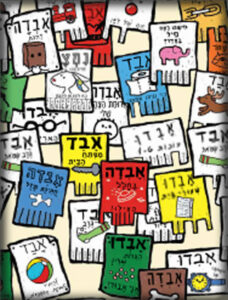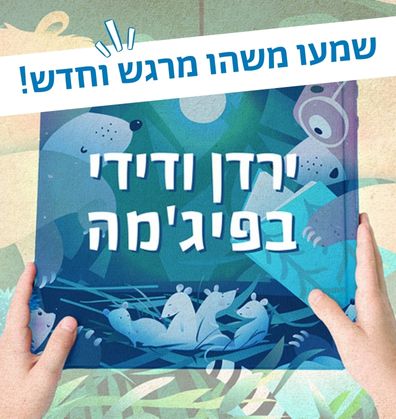מִשְׁפָּחָה וּקְהִלָּה
סְּפָרִים
Book-Related Family Activities

טיפ לקריאה: קוראים עכשיו! תכף נשוב
קריאה משותפת היא הזדמנות לזמן איכות משפחתי ומקרב, אך לעיתים קשה לפנות לה מקום בקצב החיים המהיר והתובעני. ביסוס זמן קריאה קבוע בסדר היום המשפחתי יכול לעזור. כמו סבא ועכברה, תוכלו להכריז שעכשיו אתם בזמן רק שלכם ולמצוא פינה שקטה ונקייה מהסחות דעת.

נתינה במשפחה
מה בני המשפחה שלכם אוהבים לעשות? תוכלו לשוחח על הדברים שכל אחד עושה למען האחרים. מי הבשלן של המשפחה? ומי דואגת להצחיק את כולם?

ארוחה משפחתית
ניסיתם פעם לשתות או לאכול כל המשפחה מקערה אחת גדולה? אפשר להכין מיץ ולשתות בעזרת קשים כמו סבא ועכברת או להכין פודינג, דייסה או סלט ולאכול יחד או לחוד.

דין דון מי בא לבקר?
בכל פעם יסתתר אחד מבני המשפחה מאחורי וילון או בד, ולאחר שכולם יגידו “דין דון מי שם?” יֵצא ויחקה בעל חיים, וכולם יצטרכו לנחש מי “הגיע לבקר”.

טיפ לקריאה – בעיני הילדים
לאחר כמה קריאות אפשר להציע לילדים לספר את הסיפור בעצמם לפי האיורים. קריאה כזאת, בפרט בספרים הנוגעים בנושאים רגשיים מחיי היום-יום, מאפשרת לילדים להביע תחושות ורגשות מתוך עולמם הפנימי, ולכם – לגלות כיצד הם חוו את הסיפור – מה הם בחרו להדגיש? אילו פרטים הם הוסיפו?

משתדלים להתחשב
אפשר לשאול: למה נוני נבהל כשגילה ששכח לשמור על השקט? האם הוא התכוון להעיר את אימא? תוכלו לשתף את הילדים במקרים שניסיתם להתחשב והתקשיתם; ולשאול – גם לכם זה קרה?

אתגר משפחתי – שומרים על השקט
נסו לשמור על השקט במצבים שונים – כשזוחלים מתחת לשולחן, תוך כדי טיפוס על הספה, התמסרות בכדור, ריקוד או אפילו “קריאת” ספר רק בעזרת הבעות פנים, הצבעה על איורים ומחוות ידיים.

מה הצליל הזה?
תוכלו לשחק יחד במשחק צלילים מלהיב. עצמו עיניים והקשיבו היטב, כל אחד בתורו ישמיע צליל של: דפדוף בספר, קרקוש מפתחות, צעדים, הפרחת נשיקה או כל רעיון אחר. האחרים ינסו לגלות יחד – מה הצליל הזה?
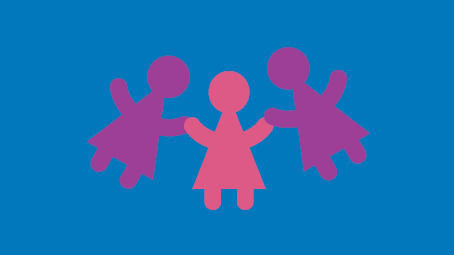
קופסת מחשבות
כשנוני שכב בשקט, המחשבות שלו היו רועשות. כדי “להשקיט” מחשבות תוכלו להכין יחד “קופסת מחשבות שקטות” ולהניח בה דברים כמו בובה רכה, תמונות טבע, נוצה נעימה ומה עוד?



Being Considerate
Just like in this book, families encounter situations in which it’s important to be considerate to others in order to have a positive family experience. You can discuss and ask: In your opinion, why was it important for the hamster to have everyone join in? How do you feel when someone is considerate of you? Which situations in your home require you or others to be considerate of others?

Where Will We Read Today?
At the end of this book, the group enjoys reading together in a makeshift tent. You can also make a tent using various items, cushions and blankets, and read the story together. You can also have some fun, and read in unusual places around the house – how about in the corner, by the plants? Or under the dining-room table?

We’re All on The Same Couch
Each time the members of the group sit on the couch differently: First the cat lies on the cushion, then it hugs it, and another time, it jumps over the zebra. You can follow the illustrations, inviting a family member, toy, or pet to try and sit together on a single couch – who will sit in the middle?

Who is in the Middle?
Place several small items on the table, and look at them carefully. While one player has his/her eyes closed, the other arranges the items however s/he wants, hiding the middle item under a cup, and asks: Who or what is in the middle? You can make this game even more challenging by adding more item or giving players less time to look at the items on the table and memorize them.

QR Code
Would you like to know how to make a story tent or create fun reading corners at home? Scan the code to watch an inspiring video.

Arts & crafts, songs, and other activities can be found on the Sifriyat Pijama Pinterest page.

זיכרונות מפעם
אם תעמיקו באיורי הספר, תוכלו למצוא מגוון חפצים מיוחדים; טלפון חוגה, גרמופון, שעון קוקייה. זוהי הזדמנות לשתף בסיפורים ובזיכרונות: אילו מהחפצים הילדים מכירים? ואילו מהם היו בביתכם כילדים? האם יש פריטים משמעותיים מפעם, שהילדים או אתם שומרים כמזכרת?

חפצים שצריכים מישהו חדש
אפשר לטייל יחד לחנות היד השנייה הקרובה לביתכם, לשוטט בין החפצים ולבדוק אם גם אתם מרגישים כמו ב’מערת אוצרות’. ואולי גם לכם יש דברים שתרצו שיהיה להם מישהו חדש? תוכלו להקים חנות יד שנייה ביתית ו’לקנות ולמכור’ בין חברי המשפחה והשכנים.

מחלקים פרסים מהעבר
פרס הוקרה דמיוני לאבא שהמציא משחק מצחיק בנסיעה, או אולי לסבתא על העוגה שאפתה ליום ההולדת? בהשראת הסיפור, אפשר להכין יחד תעודות הוקרה שמתעדות רגעים קטנים עם משמעות גדולה. כך הופך הזיכרון האישי לשיחה משפחתית מלכדת.

משחק 'חולמים להיות'
סבא חלם להיות זמר, ומה אתם חולמים להיות? כל אחד מבני המשפחה יציג בפנטומימה משהו שהוא חולם להיות, ושאר המשתתפים ינסו לנחש.


ללכת לאיבוד
הפחד שילכו לאיבוד מעסיק ילדים רבים. תוכלו לשוחח על כך ולשתף גם בחוויות שלכם כילדים. תוכלו לשאול את הילד או הילדה: האם הלכת פעם לאיבוד או איבדת משהו שהיה יקר לך? איך הרגשת? מה אפשר לעשות כשזה קורה?

המחיזו את הסיפור
תוכלו להמחיז את הסיפור ולהיהפך לרגע לאדם ולנבחן המחפשים זה את זה. אחרי שתמצאו ותתאחדו אחד עם השני, תוכלו להמשיך בהצגה ולדמיין מה יקרה בהמשך, כשהבוקר יעלה.

מציירים ומחפשים
בהשראת האיורים העשירים ציירו יחד ציור משפחתי גדול ומלא בפרטים. לאחר מכן שחקו במשחק חיפושים – בכל פעם מישהו יבחר פרט וכולם יצטרכו לחפש אותו, למשל, “היכן מסתתרת נעל אדומה?”

ממטלה למשחק
גם מטלה יומיומית כמו סידור הבית יכולה להיהפך למשחק מהנה. בהשראת חבריהם של אדם ונבחן הִפכו לסיירת להשבת חפצים אבודים למקומם. כדי להיכנס לאווירה אפשר להכריז ב”מכשיר הקשר” על צעצועים שמחפשים את דרכם למקום.

למה לקרוא עם ילדים שכבר קוראים?
צפו בסרטון מיוחד להורים – למה לקרוא עם ילדים שכבר קוראים?

על הספר
המסע שעוברים הילד אדם וכלבו נבחן בניסיון למצוא זה את זה נוגע ברגשות שילדים רבים יזדהו עימם – החשש לאבד או ללכת לאיבוד, התמודדות עם אובדן, געגוע וקשר עמוק בין אנשים ובעלי חיים.
שתי נקודות המבט בספר משקפות מה עובר על כל אחד מהצדדים, ומסייעות לטפח אמפתיה. הדמויות מצליחות להתמודד עם משבר בעזרת דמיון ובעזרת קהילה תומכת שמיישמת ערכים כמו עזרה לזולת והשבת אבדה.

משוחחים על הספר
שאלות לפני הקריאה
- משמעות שם הספר: “תוכלו לעמוד על ההבדל בין המילה ‘אבד’ למילה ‘עבד’?”
- השערות: “על מה ידבר הספר? אילו רמזים אפשר למצוא בכריכה?”
שאלות מתווכות לאורך הקריאה כדי לסייע לילדים להבין את העלילות המתרחשות במקביל, לדוגמה:
- בסוף העמוד שבו הכלבים יוצאים לחיפושים: “מה קורה בזמן שהכלבים מחפשים את אדם?”
שאלות לשיחה בעקבות מפגשים חוזרים עם הספר:
- איך לדעתכם הרגיש אדם כשלא מצא את נבחן? אילו מחשבות עברו לו בראש לדעתכם?
- איך הרגיש נבחן כשלא מצא את אדם?
- מה עזר להם להתמודד עם המצב?
- קרה לכם פעם שהלכתם לאיבוד או שמישהו או משהו יקר לכם הלך לאיבוד? איך הרגשתם?
- למה לדעתכם הילדים והכלבים הצטרפו לחיפושים?
- איך הרגישו אדם ונבחן כשעזרו להם?
התייחסות לעמודים שבהם אדם ונבחן מדמיינים זה את קורותיו של זה
- מה רואים באיורים? האם כל הדברים האלו התרחשו באמת?
- למה לדעתכם אדם ונבחן מדמיינים את זה?
- מה אתם הייתם מדמיינים?
- איך דמיון יכול לעזור לנו ברגעים קשים?

העולם דרך עיניים של בעל חיים
נקודת מבטו של נבחן יכולה להוות השראה להתנסות משעשעת בכיתה. אפשר להקרין או להראות תמונות של חיות במצבים שונים – למשל חתול שרודף אחרי הזנב של עצמו (ברשת רצים הרבה סרטוני חיות מצחיקים) – ולהזמין את הילדים לנסות לדמיין מה בעל החיים חושב או מה היה אומר לו היה מדבר.

להתמצא בסביבה
תוכלו לקיים מערך שיעורים בנוגע לתפיסה מרחבית של הסביבה הקרובה:
1. הקרינו על מסך את סביבת בית הספר כפי שהיא נראית במפת גוגל, או שרטטו את מפת בית הספר. אפשר לעבור על שמות הרחובות הסמוכים, ולהזמין את הילדים להצביע על המסלול מהבית שלהם עד לבית הספר. לאחר מכן אפשר לעבור לתצוגת סטריט ויו ו”לשוטט” בסביבת בית הספר.
2. חלקו את הכיתה לקבוצות קטנות, שכל אחת מהן תכין דגם או ציור של השכונה או סביבת בית הספר. גם אפשר לחלק למקטעים ולחבר הכול לדגם משותף.

מה זה "במקביל"
הכותבת נוקטת טכניקה של שתי עלילות המתרחשות בו בזמן. כדאי להמחיש את המושג “במקביל”, ולהזמין את הילדים לשלב אותו במשפטים.
תוכלו להיעזר בשיר “זה מה שקרה” מתוך הסדרה “ילדי בית העץ”, המביא כמה נקודות מבט על אירוע מסוים.
הספר מציג תמונת ראי – אדם ונבחן עושים את אותם הדברים. תוכלו לקיים משחק שבו בכל תור שני ילדים עומדים זה מול זה ועושים את אותן התנועות; או לשחק ב”מלך התנועות”, שבו ילד אחד מתנדב לצאת מהכיתה, שאר הילדים בוחרים מלך שכולם מחקים את תנועותיו, וכשהילד חוזר עליו לנחש מי מלך התנועות.

חיות המחמד שלנו
בקשו מההורים לשלוח סרטונים ותמונות של חיות המחמד של המשפחה (אם אין בבית אפשר לבקש של מישהו מהמשפחה המורחבת או מהשכנים). תוכלו לערוך בכיתה חידון זיהוי או להזמין את הילדים לספר על חיות הבית שלהם.
הילדים יוכלו לכתוב טקסט קצר על חיית המחמד שלהם ולצרף לתמונה, ולאחר מכן תכינו בכיתה קיר “חיות הבית שלנו”.

לוח מודעות של כיתה א'1
הכינו לכיתה לוח מודעות.
דמיינו שאיבדתם משהו חשוב או אהוב – צעצוע, תיק, חיית מחמד או אפילו ספר!
כמו בספר “אבד כלבלב”, עכשיו תורכם לכתוב מודעה שתעזור לכם למצוא את האבדה.
הוראות לכתיבת מודעה קצרה וברורה שתעזור לאנשים להבין:
- מה איבדתם (מה זה ואיך זה נראה – צבעים, גודל, מרקם וכדומה).
- איפה איבדתם (רחוב, מקום, גן וכדומה).
- מתי זה קרה (יום, שעה בערך).
- מה מיוחד באבדה (למה היא חשובה לכם).
- מה על המוצא לעשות (למי עליו לפנות, איך הוא יכול לעזור).
אפשר להוסיף ציור של האבדה כדי שהמודעה תהיה ברורה ומושכת את העין.
טיפ:
התחילו במילים כמו “אבד לי…”; “נעלם לי…” וסיימו במילים: “אם מצאתם, בבקשה…“

העשרה לשונית - אומר מילים ומיומנויות השוואה
הסיפור כתוב בשפה עשירה, וזו הזדמנות נהדרת להתעכב על מילים כמו “חוטמו”, “הצטיידו”, “דלועים”, “קולר” ועוד.
אפשר להתייחס למילים הללו תוך כדי קריאה, ואחר כך להכין חידון – מילה ופירושה; או משחק זיכרון – מילה וציור.
הסיפור גם מזמן לשפר מיומנות השוואה:
מה דומה ושונה בין המודעות, בין המקומות שעליהם חשבו הילד והכלב ובין אופני החיפוש.

בית מארח
מחפשים רעיון לבית מארח? אפשר בפיג’מה!
בקשו מהילדים להביא את העותק האישי שלהם מהבית, והתחילו את הפעילות כשכל ילד וילדה מחזיקים בעותק שלהם לזמן קריאה משותף. הילדים יכולים לחלק את העמודים ביניהם ולקרוא בעצמם, או שאתם תקראו יחד איתם. בשיח שלאחר הקריאה מומלץ להיעזר בשאלות המוצעות בסוף הספר וגם בהצעות לצוותים.
מפת דרכים
כל ילד יצייר את הדרך שעשה מהמקום שממנו הגיע. המפה לא צריכה להיות מדויקת, ואפשר להציע לילדים להוסיף לה ציוני דרך, כגון עצים, מכולת, גן שעשועים. הילדים יוכלו להציג את סיפור הדרך שלהם בעזרת המפה.
חידון חיפושים
החביאו במרחב הבית בובות של בעלי חיים כמספר הילדים. בכל פעם תקראו לילדים חידה שרומזת למיקום, למשל: “חפשו בעלי חיים פרוותי במקום שבו עולים ריחות בישולים ועוגות במגירה הנמוכה ביותר”. הילדים יתייעצו באופן קבוצתי על פתרון החידה, ואחרי שיחליטו על מקום אפשרי ישלחו נציג אחד למצוא את המבוקש.
מבוך רצפה
שרטטו על הרצפה מסלול פשוט בעזרת נייר דבק, סרט בד דק או חוט צמר. בכל פעם אחד המשתתפים “ילך לאיבוד” בעזרת כיסוי עיניים וכמה סיבובים במקום. שאר חברי הקבוצה (או מישהו אחד בכל פעם) יצטרכו לכוון אותו ליציאה בעזרת הנחיות בלבד, בלי לדרוך על קווי המסלול.

חושבים כמו מיכה אולמן
אפשר לבקש מהילדים לרווח את האצבעות ולהתבונן ברווחים ביניהן ואז לשאול: מה אתם רואים ברווח שבין האצבעות? תוכלו לדמיין שמה שאתם רואים שונה ממה שזה באמת? מה למשל? קרה לכם שהבטתם במשהו – לדוגמה בצורות שונות של עננים, בבורות או בשלוליות מים – והפכתם אותו בדמיונכם לדבר אחר?

משחק אור וצל
גם אתם יכולים ליצור באור וצל. חפשו מקום שטוף שמש והניחו בו חפצים שונים, כמו עלים או צעצועים קטנים. תוכלו לצייר סביב קווי המתאר של הצל ובתוכם או להפוך את הצל לדברים שונים. צל של עלה, לדוגמה, יכול להפוך גם לציור של דרקון.

"הכול מתחיל מכמה קוביות"
מעודדים חשיבה יצירתית: תוכלו לאסוף יחד כמה אבנים מהקרקע, להתבונן בהן ולחשוב למה הן יכולות להפוך. לאחר מכן כל אחד בתורו יוכל לסדר אותן כרצונו וליצור מהן משהו חדש.

דברים שיכולים להיות – חקר
בהשראת הספר תוכלו לבדוק יחד מה הם היסודות של דברים שאתם מכירים. בחרו בחפץ, חולצה למשל, חקרו: ממה היא נוצרה? (מבד) וממה נוצר הבד? (מכותנה), וגלו: גוש כותנה יכול להפוך לחולצה!


From the Story to Us
You can look at the illustrations together, notice the children’s actions and facial expressions, and ask: How do they feel? When are they having fun? Are they angry? In your opinion, why does the girl want to be “more”? How do you feel when someone tells you “I’m more”?

Looking for More
Enrich your vocabulary with various adjectives while playing an amusing and challenging game around the house: Pick an item you have at home. Ask – “which is bigger/smaller/more transparent/more colorful…” and so on, depending on the description of your choice. The other player will now look for an identical item that is “more”, such as a larger ball or softer pillow.

לכולנו יש המצאות
תוכלו לשוחח ולשאול: האם גם אתם רוצים להיות ממציאים? מה הייתם רוצים להמציא? האם קרה לכם פעם שנתקלתם בבעיה או בצורך כלשהם וחשבתם על המצאה שתוכל לעזור?

יוצרים קומיקס משפחתי
בהשראת הספר תוכלו ליצור קומיקס משפחתי משלכם. חשבו על דמויות משעשעות ונסו לצייר אותן בתוספת משפטים קצרים. מה הדמויות אומרות? איזה סיפור מעניין יש להן לספר?

מהספר לחיים
תוכלו להסתכל סביב ולבדוק אילו מההמצאות שבספר הן חלק מחייכם. אולי הטפטפות בגינה? סלט עגבניות השרי בארוחת הערב? או משחק הטאקי האהוב? לאחר מכן תוכלו לכתוב מכתב תודה לממציא ההמצאה ולספר לו כיצד היא משמשת אתכם.

המעבדה הביתית שלנו
גם אתם יכולים לחשוב יחד על אתגר מחיי המשפחה, ולבנות – מחפצים ביתיים – מכונה דמיונית שתסייע להתמודד איתו. כך למשל קופסת נעליים וידית ישנה יכולות להפוך למכונה לקיפול כביסה, וגליל נייר – למכשיר חדשני לטיפוח הגינה.

מעברים
תוכלו לשתף את הילדים בחוויות ממעברים שחוויתם בעצמכם, או להיזכר יחד במעבר משותף. אפשר לשאול את הילדים איך לדעתם הרגישה הילדה כשהגיעה בפעם הראשונה לבית הנמוך, איך הם היו מרגישים בִּמקומה, ומה היו אומרים לה לוּ פגשו אותה.

טיול בעקבות בעלי חיים
אפשר לעשות סיבוב קצר ליד הבית, בשעות היום או הערב, לשמור על שקט ולשים לב – האם אנחנו רואים בעלי חיים בסביבה? האם אנחנו שומעים קולות מיוחדים? מה ההבדל בין בעלי החיים שאנחנו רואים ושומעים ביום, לבין אלה שיוצאים בלילה?

לצייר לנו בית
ציירו יחד בית, כשכל אחד מוסיף חלק לציור. תנו חופש לדמיון וליצירתיות, בבית הזה הכול אפשרי. אולי בבית שלכם יהיו חלונות בצורת כוכבים? ואולי דלת מפרחים? או אפילו מגלשת מים מהגג! כשתסיימו תוכלו לדמיין יחד איך יהיה לגור בבית החדש שיצרתם.

האזינו לסיפור "הבית הגבוה והבית הנמוך"
האזינו לסיפור “הבית הגבוה והבית הנמוך” בהסכת “ספריית פיג’מה קוראת לכם”.


Discussion – At times like Donkey, other times like Rabbit
We all have a dreaming side and a practical side. You can recall some memories and share: When have you ever behaved like Rabbit? Or like Donkey? Have you ever imagined or dreamt of something and then taken steps to make your dream come true? Have you ever joined a friend in making someone happy, or creating something together?

And how would you make Elephant happy?
Imagine your very own dream celebration: What would you like to have? A cake made of clouds? Perhaps a performance by singing animals? Now, try to be more practical, and use the things around you: How about making a crown out of pegs? Or a present out of plasticine?

Taking a close look at the illustrations
You can look for the snail hiding in the illustrations together. It’s a great way to learn to pay attention to details.

A Rhyme
Rabbit writes a poem for his friend Elephant. You can let it inspire you to write your own delightful rhyme and gift it to a beloved friend or relative.
QR code
Scan the code to listen to the amusing birthday episode of Didi and Yarden’s podcast.

טיפ לקריאה משפחתית
מי אמר שחייבים לקרוא סיפור לפני השינה? אולי אתם בכלל מעדיפים לקרוא אחר הצהריים, לשכב יחד על השטיח, או לצרף דובי לקריאה? לכל פעוט אופי שונה וצרכים שונים. כדאי לחפש את הזמן והאופן המתאימים ביותר עבורכם ועבור ילדכם, וליצור את שעת הסיפור המיוחדת שלכם.

מה מסקרן אותנו בסיפור?
כדי לעודד שיח משותף ולגלות מה מסקרן את הפעוטות, תוכלו לבדוק יחד: מה עוד רואים מהמרפסת של יעל? במקום להצביע ולשאול “מה זה?”, כדאי להמתין ולבחון: על מה הפעוטות מצביעים? מה הם מזהים? לאחר מכן אפשר להרחיב, לקרוא לדברים בשם ולהוסיף תיאור – “הכדור מתגלגל” או “הכדור צהוב”.

מי מגיע? ולאן הוא נעלם?
הסיפור מסופר מנקודת מבטה של יעל, אך נקודת המבט של הקוראים רחבה ומלהיבה אפילו יותר! תוכלו לחזור אל הספר, להשתהות בכל עמוד, להתבונן היטב באיורים ולחפש בהם יחד את מי שיגיע בעמוד הבא. האם ראיתם לאן הוא נעלם?

מציצים לרחוב
גם אתם יכולים לעמוד במרפסת או בחלון ולהציץ יחד. מה תגלו בחוץ? נסו לשים לב: האם זה משהו שניתן גם לשמוע, כמו מנוע הטרקטור או ציוץ הציפור? האם זה משהו שחולף ונעלם או שהוא נשאר במקומו? אחרי שהצצתם אל הרחוב, תוכלו לרדת לטייל בו ולפגוש מקרוב את שראיתם מרחוק.

Family Reading Advice
There are lots of ways to enjoy a book – after reading it, you can go back and “read the illustrations”: Which objects can you identify? And which plants?

Every Excursion has its Own Story
You can discuss with your children and remember family trips together – Where did you travel? Did anyone get upset on the trip and you helped them? Do you also have a story about an item that got lost while you were on a trip? Or perhaps you also helped to protect the environment?

Searching in the Water
This book can inspire you to play an entertaining quest – fill a large bowl or bucket with water, then add soap so that the water will not be clear and transparent. Now slip in all sorts of small objects: A teaspoon, bottlecap, pebble, coin, or any other item. Ask your children to help you find the “lost” items in the water.

What is it like to have Blurred vision?
If you wear glasses, you know how it feels. Now you can let the rest of your family experience what it feels like: Place baking paper or a thin, light-colored fabric on your eyes, and try to see through it. Look around and at one another – what is different? How do you feel?

Fighting and Reconciling
Talk with your children and ask: How do you feel when you fight with a friend or family member? How do you both behave during a quarrel? Can anything help you reconcile? How can we help friends who are fighting reconcile?
QR code
Scan the code to listen to a special episode on quarreling from the podcast Yarden and Didi in Pajamas.

Making Peace
This book can inspire you to take two puppets, toy cars, or any pair of items; you can even put a pair of socks on your hands. Invite your children to imagine and make up a “real fight” – what are they fighting about? How do they reconcile? Do they reconcile on their own or do they need help doing so? Now you are ready to put on a show.

Exploring and Discovering
Hyraxes and ibexes are desert animals that live in Israel. This book provides a wonderful opportunity to explore and discover! What do they look like in real life? What characterizes them? What do they enjoy eating? What other interesting facts would you like to know about them?

Arts & crafts, songs, and other activities can be found on the Sifriyat Pijama Pinterest page.

Family reading advice
Illustrations are an integral part of books, completing details that are not always found in the text itself. For instance, the building blocks Taylor uses only appear in the illustrations. Did you discover any other details through the illustrations? Sometimes, it’s worth trying to read a story “over again” using the illustrations and seeing what else we can discover about.

Discussion – When things fall apart
Sometimes, things we put a lot of time and effort into fall apart or fail. We can discuss that by asking – Has anything similar to what happened to Taylor ever happened to you? How did you feel? When you’re upset or frustrated – what helpscheer you up? Which of the animals in the book would you have called out to for help?

Listening exercises
Listening exercises can help us sharpen our senses and notice new things: Try speaking to one another while sitting back-to-back, and then face-to-face. How did you feel each time? Another exercise is: Close your eyes for one minute, be completely silent and still, and try only to listen to the sounds around you. When the time is up, tell the others what you heard.

Animal mimicking
What does the ostrich look like when it buries its head in the sand? What does the elephant do with its trunk when it remembers? And what does the bear look like when it is angry? Try mimicking each of the animals in the book by copying its movements, sounds and suggested solutions.

Family reading advice
Books that describe familiar experiences in children’s lives are an opportunity for a glimpse into their world. While reading, you should pay attention to what the children notice most, the questions they ask, and the characters with which they identify. Sometimes, books make it easier to discuss things that happen in real life.

Discussion – Joining the game
Discuss with and ask the children: how do you think Birt felt when Shu joined their game? Have you ever played with a friend and had another person ask to join in? Have you ever asked to join other children?

Arts & crafts with friends
Good friends can make a simple box into a palace, boat, or spaceship. You can suggest inviting one or several friends over for some joint arts & crafts time. Perhaps they will discover what else a box can turn into – with a little imagination, a pair of scissors, some markers, but most importantly – lots of togetherness.

Now Birt, then Shu, then Etho
Playacting is a great way of learning about the experience of others while expressing feelings and sensations. You can act this story out with the help of various family members or toys. Take turns playing each role, so that you can experience the story from the different characters’ perspectives.
Actions Speak Louder than Words
You can discuss Yashka’s statement: “Words won’t help, we need to convince them with actions”. Ask what he means by it and what your opinion is. When is it best to speak and discuss things first, and under which circumstances would you prefer to convince with actions?
QR Code
Scan the code to watch a special video with Yossi Abolafia, the author and illustrator of this book.
For our Environment
Do you have a favorite public place in your vicinity? When you visit it, take a moment to think about what makes it pleasant, how it contributes to the environment, and how it can be protected. For example, you can initiate a cleaning up or cultivating spree with your family and friends.

Original Inventions
Yashka makes special inventions such as a night light that turns off when you fall asleep and an underwater bird observatory. What helpful and special inventions would you like to invent? You can imagine them, draw sketches of them, or build special inventions from whatever is lying around your house.

Childhood memories
The grandfather’s friends tell his grandchild about the boy his grandfather once was. Take a moment to share with your child too about the childr you once were, what you liked to do, what you miss, and share childhood photographs. You can also ask your child: What would you tell about yourselves when you were younger? What memories are particularly joyful or moving?
A song from the land of childhood
This book can inspire you to introduce your child to songs that remind you of your childhood or the place where you grew up. You can listen to old songs together and ask: Do you also have songs that remind you of things?

“Buenos Dias”
When the grandfather and father in this book speak to one another in Ladino, the child feels as if they are sailing away together to a faraway land. It is very exciting to understand, know, and utter words in a foreign language. Throughout the book, words and phrases appear in Ladino; you can go back and look for them in the book, then try to pronounce them together, and look .up their meaning

QR code
Scan the QR code and listen to the book Trees Waiting for Rain on the Sifriyat Pijama podcast. We recommend following along with the book while listening.
Tip for Family Reading
Books featuring characters who are imperfect and make mistakes generate empathy, and enable a discussion on subjects that are not easy to directly address. Use this book to spark a discussion and ask questions about the characters’ actions and feelings to encourage your children to express their own inner thoughts and feelings.
Asking for Forgiveness
You may want to ask your children: “What did you think about what Chico said to Pilchas?” “Which situations may lead to a hurtful exchange?”. You can also discuss similar situations they had to deal with, and ask: “Have you ever said something you later regretted?”, “Did you say you were sorry?” “How did you feel afterwards?”
Watch & Learn!
What is the speed of sound that the rabbit was trying to achieve? This Davidson Institute of Science video will teach you all about it using a fun experiment with a sound pipe.

There are many ways to say I’m sorry
You can help Chico ask for Pilchas’ forgiveness in various ways – a letter, drawing, poem, or dance. “Helping” Chico will enable children to develop their own forgiveness-asking skills, and help fix situations even when they seem too hard.

Becoming Marksmen
You can be inspired by this book to have your own marksmanship competition. You can make a bow and arrow using sticks and elastic bands, or take turns shooting balls into a bucket. Don’t forget to decide which of the forest animals you are!

By which to remember where you came from
After reading this book, you can discuss the importance of family. Share memories of intimate and special moments shared with grandparents. You can discuss your family’s roots, cuisine, and culture, as well as any heirlooms and items that are passed in your family.
My Own Special Reminder
Do you also want to have an item to remember things by and help you overcome difficulty and loss? You can use beads to make a necklace or bracelet, paint a pebble, or any other good idea, and then decide what to do with this it to be reminded of something or cheer up: Twist it? Squeeze it? Stroke it? Move it to your other hand?

Homemade Cookies
Which cookies remind you – the parents – of your childhood home? This book can inspire you to bake cookies together, or prepare any other dish that connects you to your roots, family, and home.
Listen to the Story
Listen to Yarden and Didi tell the story of Shoham’s Bangle on the Sifriyat Pijama podcast.

Arts & crafts, songs, and other activities can be found on the Sifriyat Pijama Pinterest page.

Tips for family reading
This is a special book that delicately addresses coping with a friend’s complex physical or emotional state. We recommend that parents read this book before reading it together with their child in order to adjust the reading and discussion to the book’s unique content, and the child’s unique world.

“And I found a way”
David’s friend immediately notices when David’s behavior changes. You can discuss and share: Have you ever noticed when someone you have been close began to act differently? What did you do? What do you think about what Davd’s friend did?

Paper flowers – a kind gesture and a good word
Invite your child to make a colorful floral crown that would bring joy to your family. Suggest that your child cut out paper flowers and decorate them, and then write a kind word about each .family member
A “just in case” box
What comforts and cheers you up during difficult times? A kind word? A touching book? Perhaps a toy? You can make a box filled with “just in case” ideas: Items that cheer you up, encouraging messages, and kind words.

A hug in a letter
Does your child have a friend or family member who is coping with a complex physical or emotional condition? You can suggest that your child write that friend or relative a letter of encouragement. Use supportive words, such as: I’m here for you; you’re strong; we’re your friends; and we love you. You can add a drawing that will put a smile on their face too.

Family reading advice
Children enjoy looking at illustrations and noticing details that do not necessarily appear in the story itself. While reading, you should join them, look at the book together, and discover how the illustrations add fun and amusement to the written text and shared reading experience.

Enjoying the sunset
The characters in this book are friends who enjoy watching the sunset on the beach together. You can also go to the beach, park or even the street to enjoy the beauty of the sky as the sun disappears. You should also take some paper and crayons along to draw a sunset of your own, or any other beautiful thing that can be admired simply by taking a look around you.

Family reading advice
This is a special book about a special family, in which one brother is visually impaired or blind. The narrating brother is well aware of the challenges in his family and the restrictions required of him at home, yet chooses to see the world in a positive light. We suggest that you, parents, read the book before reading it together to adapt the reading and discussion to this book’s unique contents.
Discussion
Do you think the child in this story is lucky? Why? What makes you lucky? You can share with one another, parents and children, the good things in your shared life as a family. You can create a regular ritual during which, once a week, family members share the positive things that they experienced that past week.
What can you see…?
How do blind children experience life? Scan the code to watch an episode of “I’m sorry for asking” about blind children. Following the video, you can discuss what makes our lives similar to or different from that of the children depicted in the video.

What do we discover when we reread?
Rereading can reveal new and surprising things. We recommend reading the book twice, looking at the illustrations and searching for clues about Hagay’s visual disability: What about the words and illustrations hints at this family’s challenge? Did you notice it the first time you read the book?

Make believe
Hagay knows how to tell made-up stories. You can try it too! How about choosing two items and using them to tell a made-up story: a brush and a rug, a bottle and a stuffed cat, a hat and a window – what can happen to them in the made-up story you will come up with together?

More arts & crafts and activities can be found on the Sifriyat Pijama Pinterest page.
Family reading advice
Simachi’s Big Day is a long book. We therefore recommend reading it in two parts, pausing at the point where Simachi wonders why her brother, Avram, is dressed in his best clothes, and reading the rest the next day.
Memories
In this book, Grandma is recalling her childhood memories. This is your chance, as parents, to share special moments from your own childhoods too. Talk about the things you did, those you never thought you would do, or the relationship between you and your siblings. Ask your children: Can they recall special things they did and, looking back, surprised them because they made them discover their own abilities?
Listening to Simachi
What does the story sound like? Scan the code and listen to the story while looking through the book.
A pineapple on my head
Avram and Nemi play a game by walking with a pineapple on their head and seeing who lasts longer without dropping it. You can also play a similar game: choose an item that you can put on your head – a pillow, toy or box, and find out: Which of you can walk while keeping it on your head? And how far?
Following the sea
The book describes many seaside activities: the fish moving, rowing, swimming, bringing fishnets in, sailing or flying a flag on the boat’s flagpole. You can choose one of these activities, and mime it. Your family will need to guess which activity you meant, and look for it among the book’s illustrations. Good luck!

Family reading advice
Books containing very few words allow us to tell an emotional and experiential story as we follow the main character in the book: What is he feeling? What is he thinking about? When is he sad and when does he get a new idea? You can look at the illustrations, get to know the main character and his experiences, link them to your own lives and, most of all, add something of yours to this experience that is being described in so few words and in heartwarming illustrations.

A gift of something
Did Mooch only give Earl an empty box for a gift? You can discuss gifts that cannot be put into boxes: Which free gifts can you give one another? A hug? A drawing? How about warm loving words?

A box of nothing
You can also have your own box of nothing. Take a box or paper bag, decorate it with paper, drawings, stickers and decorations. Whenever you are bored, open the box and use your imagination to decide what is in it: Maybe it contains an imaginary ball that you can pretend to toss between you, or an imaginary story that you have made up together, or any other invention with which you can come up.

Our books
Have you tried reading a book using a bird’s voice? Perhaps you happen to own a red book? Scan the code and you can play a game that encourages reading using the books you have at home. You can even get a certificate at the end of it!

Doing nothing
What happens when we do nothing? You should take a few minutes to sit quietly and listen. What can you hear? What can you see? What can you feel with your body? You can share your experience with your family and think together: Does nothing really happen when we do nothing?
Pesach trivia
What are the three things you would have taken with you when leaving Egypt? And who can leap like a frog from the second plague? Scan the code and you will be able to print out an amusing card game that will enhance your Seder Night experience.
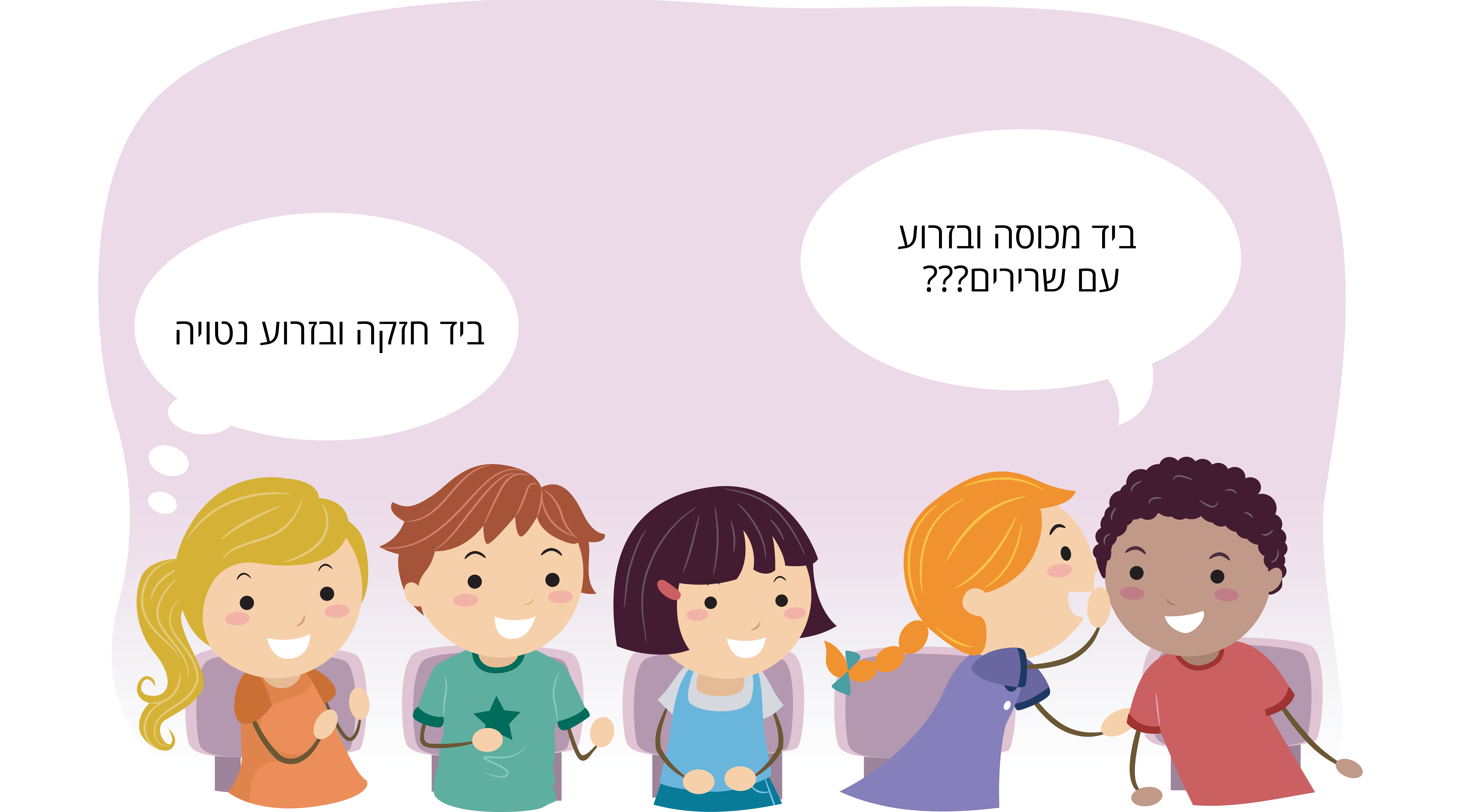
Hide and Seek
You can hide the afikomen or any small item and ask family members to look for it. Is it in the kitchen? Under the couch? Perhaps in the closet? In the next round, the one who found the item will hide an item of his or her choice, while the others go looking for it… Good luck!
Pesach activities
This book offers parents the opportunity to tell their children about their childhood Seder Night experiences: Did you hide the afikomen? And who found it? What did you like about Pesach as children? And what do you like about it now – parents and children?
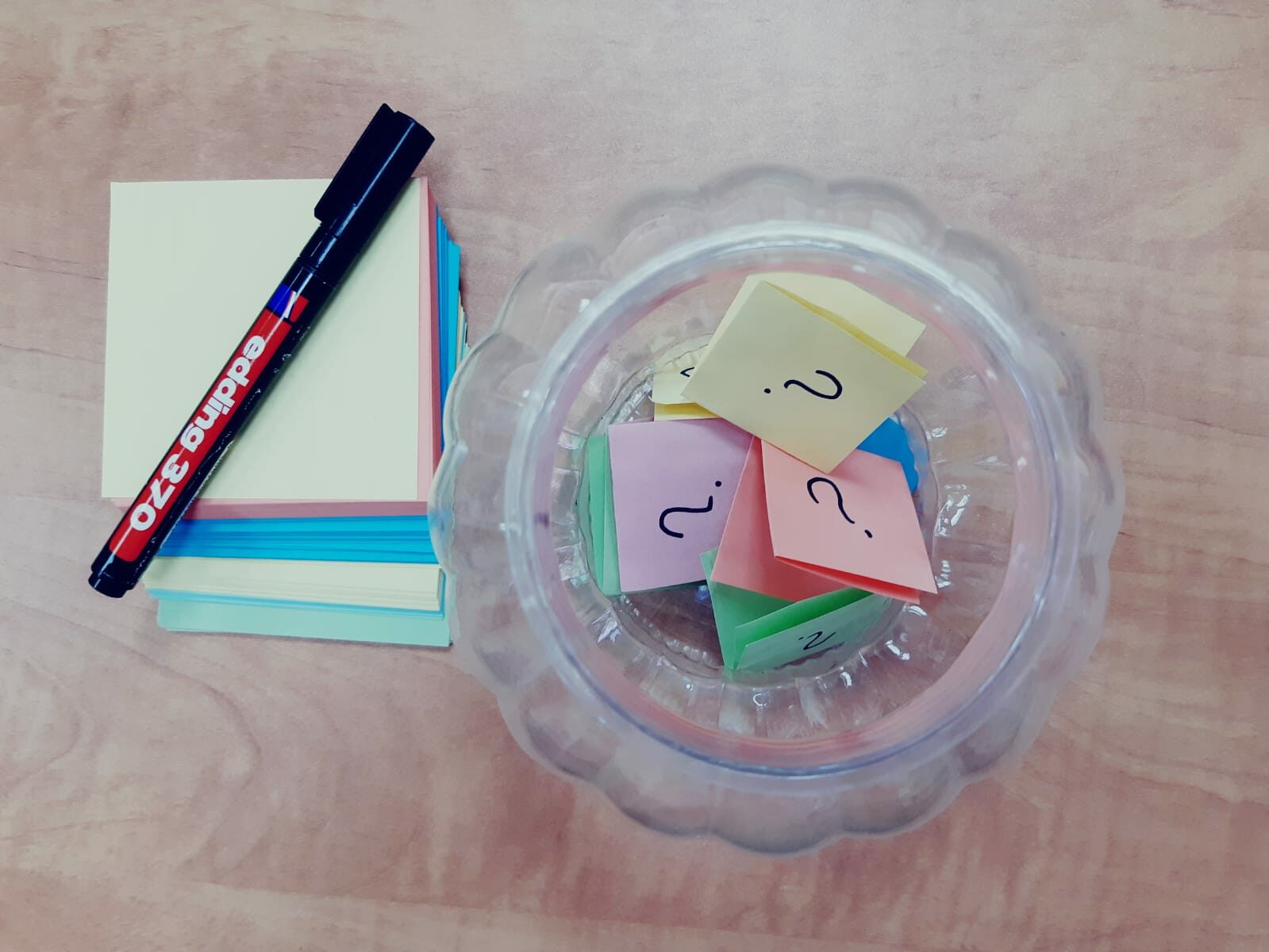
Where is the frog?
A small frog is visiting for Seder Night wearing an ancient Egyptian headdress. Can you look through the illustrations and find it? Why does it appear in the illustrations, in your opinion?

Family reading advice – Books everywhere
Like many toddlers, Berale also asks Grandma – “What are we going to do now?”. Among the surprises Grandma keeps in her basket is a book that they can read whenever they want. A book is a world unto itself that can be taken anywhere quite easily. You can also keep a book in your bag, and enjoy it while waiting for a doctor’s appointment, relaxing in the park, or taking a long car ride.

Discussion – Special times with loved ones
You can discuss your toddler’s relationship with Grandpa, Grandma, or other significant family members and ask – What do you enjoy doing together? Are there any special activities that you only do with your grandparents or uncles and aunts? Are there any special items that only they have at home?

A made-up story
Grandma’s stories make Berale laugh because they are made-up, and unusual things can happen in our imaginations. Try making up your own story, like “The Hippo that Fell into a Soup Bowl”, “The Lion Who Was Afraid of Being Left Alone at Night”, or any other idea that comes to mind. You can start with an object you see around you, and take it from there.

Grandma baked a cake…
Do you know the fingerplay that accompanies the nursery rhyme “Round and Round the Garden”? Or the Israeli version “Savta Bishla Dasya” (“Grandma made some porridge”)? You can play a similar game by bending your fingers inwards and leaving your thumb out to create a ‘snail’. Your toddler’s upturned palm can be the bowl. Now say: “Grandma and Berale baked a cake. They added flour, they added sugar, they added eggs…” while touching your toddler’s upturned palm with your thumb as you name each ingredient. You can take turns being Berale and the mixing bowl.

Reading-assisting touch
Toddlers need physical contact. That is why you should sit close to one another while reading, hug, touch, and look into each other’s eyes every once in a while. That way your toddlers will experience story time as a warm and relaxing activity that makes them feel loved and safe.

Tickles and games
You can ask your toddlers – do you like tickling games? Which of the games that we play together do you enjoy? What would you have liked us to play? In relation to the mother’s telephone call in this book, you can also ask – how did Gan-Yah feel when her mother went to answer her phone? How do you feel when you have to wait?
There’s a hill in this house
You can play the same game they play in the book: Your toddler or another family member can hide under a blanket and become a hill. You can tickle the hill, feel it and search – where’s the hill’s foot? Where is its head?
*Some children are hypersensitive to touch or tickles, and therefore, it is important to remind players before the game that one can say “stop” at any point, just like they do in the book.

Moving together
There are many body movements in this book. You too can jump, dance, roll or lift your legs up in the air just like the hill does. You can look at the illustrations and copy Gan-Yah’s movements too.

For more ideas for activities, check out our Instagram page and discover more surprises.

Family reading advice – Sharing experiences
Many books describe toddlers’ daily challenges: difficulty sharing, difficulty parting, the challenging transition from daytime to nighttime, and many more. When identifying a challenge with which your toddler is struggling, choosing a book on the subject and reading it together can be a good idea. Books invite us to share our feelings and experiences, and can offer empathy, encouragement and coping ideas.
Lea Naor was born in 1935 in Herzliya. She has written books, plays, screenplays and children’s poetry, and has also translated many books into English, such as the Dr. Seuss series. Her books and translations have won her many awards.

What is mine and what is ours?
You can discuss the things that are shared by all family members as opposed to those that belong to each of you separately. For instance: “We each have our own toothbrush – what does your toothbrush look like?”, “We all share this house together, who lives in our house?”

Dramatizing and swapping
You can dramatize this book using stuffed animals and have fun together: Swap the toys between you along with the song, and in the refrain az tekhef nihye shutafim bekhol hadvarim hayafim (“so soon we will share all the beautiful things”), you can hold the toy together, and demonstrate sharing.
Illustrations and animals
A cat, a dove, a turtle, a puppy and a young bird – all in one book! You can look at the illustrations, choose an animal together, imitate the sound it makes and act just like it according to the description found in this book. For example, if you choose the turtle “with its entire house on its back” – you can place a cushion on your back and walk on all fours. And how does the puppy with the spot wag its tail?
Family reading advice – The recurring phrase
Many books for toddlers have a recurring phrase that helps them follow the storyline and play a part in the reading. To emphasize the recurring phrase while reading this book, you can use a special voice, add a hand gesture, or change your reading pace. When the familiar phrase comes up, your toddlers will be delighted to join you.
Ora Ayal [1946-2011] was a children’s writer and illustrator. She illustrated over 70 books, among them Miriam Roth’s well-known books, as well as writing some herself, such as A Girl Alone and One Dark Night.
Discussion – Who do we love visiting?
Visits are a significant part of a toddler’s world. We visit family and friends, and sometimes, they visit us. You can discuss and ask: Who did we visit? What did we do during our visit? Who shall we invite over to our house?

Who will we meet next?
At the corner of each page there is an illustration that hints at the encounter we will see on the following page. Before you turn the page, you may want to look at the illustrated clue and guess who will be waiting for you on the following page. You can even play with real-life objects: Cover an item almost entirely, and ask your toddler what is hiding under the cover – a teddy-bear? Hat? Or purse?

What is in the illustration?
The final page of the book is a story in itself, containing many illustrated details. You may enjoy looking for the many details in the illustrations that you have come across throughout the book: a dog, girl, hat or flower. You can even try to identify and name the items at Grandma’s house: Where is the kettle? What is hanging on the wall?

With an open heart
Following Yonatan, you can discuss and share: What can be the meaning of the phrase: “to open up your heart”? Is there an image or item that reminds you of loved ones, and make you feel like your heart is opening up and your feelings are welling up?
QR code
Would you like to listen to The Key to My Heart? Scan the code and you can listen to this book together

Where have I been and what have I been up to?
Thanks to the lost keys, Yonatan gets a glimpse into his father’s daily routine. And what did you do today? You can play charades, miming to one another a place you have visited or something you have done. Take turns acting out a place or action, while the rest of your family tries to guess where you have been and what you have been up to.

Details in the illustrations
Yossi Abulafia’s illustrations are full of details. You may want to stop and look: Which animals can you find in the illustrations? Do they appear more than once? What are the people on the street up to? And now, look at the illustrations again: Have you discovered anything that you did not seen the first time?

Connections
You can talk about older people you know or knew in the past: Who are they? What is your connection to them? What do you like doing with them now? What memories do you, the parents, have of older figures from your childhood?
Story time
Want to listen to the story? Scan the QR code and you can listen to the story together while turning the pages, at home, in the car or whenever you have time.

Hello Your Majesty
Amira suggests playing a game she played as a child – so can you! How do you play? One participant is the king and the rest are his children coming for a visit. They greet him with “Hello, Your Majesty”. The king replies: “Hello my dear children? Where have you been and what have you been doing?”
The children must explain where they were and what they did in mime, and the king must guess correctly. Then they switch roles.

Party time
Alma is planning a magic party with a magic hat and a magic potion, and invites witches and wizards to join. You can plan a magic party as well, with your own magical ideas. And maybe it will be a “resting” party? Or a game party? Or another themed party of your choice?
A discussion: What if I were… Mom
Which roles does each member of your household have? Who would you want to take over from? This book could inspire you to imagine switching roles within your home: What would your child do if they were to take over from Grandpa? What would Grandpa do if he took over from Mom? And how would you be able to help one another?
Listening to the story
What do you play in a parade? And what do musical instruments in a band sound like? You can find out all the answers to these questions and more if you listen to this book by scanning the code.
A game of “my occupation”
Am I a physician or a clown? Can you guess my occupation? Take turns choosing a profession and acting it out for the other players to guess. If a player’s profession is a little hard to guess, you could give them a clue.
Going into the illustrations
Which character in this book would you like to take over from? You may enjoy looking through it, choosing a character you would like to replace, and share your thoughts with one another: Would you want to take over from the baker? Or play in the parade?
A tip for family reading
You can find something to like in every book: The drama, the characters, or maybe the illustrations or interesting words. After reading the book, try asking the children what they liked about the story, and share what you, the parents, enjoyed. You can even tell each other which books you especially like and why.

Friends and us
Peetz and Morchella are spending time together. She’s growing vegetables and he’s nurturing them. In the meantime, they are chatting, singing, and simply enjoying their time together. You can ask the children what they like doing with friends. What do they do together? As parents, this is a good opportunity to reminisce with your children and share your experiences and memories with childhood friends.

Vegetables and drawings
Cabbage? Kohlrabi? – Thirteen types of edible vegetables appear in the book. Can you find them all? You may want to eat your favorite vegetables or try new vegetables.
Nice to meet you: the morchella
So, who are you, Morchella? If you scan the code, you’ll learn about the morchellas that sprout up in Israel each winter. Do you want to learn more? Go to the library together or surf the internet and look for information on morchellas and other mushrooms.
Growing vegetables
You can grow vegetables, even if you don’t have a plot of land. Try taking a cut carrot top, cloves of garlic, or the bottoms of lettuce or celery, and soak them in a transparent container with water. Wait patiently, add more water if needed, and little by little, you will see leaves and roots sprout. You can cut them off and eat them, or plant them in a flowerpot, and wait for new vegetables to grow. Don’t forget to water them!

Family reading advice
Children identify with the characters in the book, and acquire a better understanding of others who are different from them, thereby developing empathy and adaptability to new situations. While reading, you can focus on the characters’ facial expressions and ask: How do you think they feel? And why?

Discussion
You can discuss and ask: With whom and what do you like to play? In your opinion, what should we do when we each want to play a different game? What solutions can we suggest?
Annoying but also fun
Libby wants to join Pupik on his visit to the fire station, but he is annoyed – can a solution be found? Watch the video to find out!

Moving with the illustrations
Sitting, jumping, or perhaps bending down? Take turns choosing a page in the book, and showing the others a movement or posture similar to that of the characters depicted in the book. The other players can then imitate the movement, and look for it in the right page in the book. Did you find it? Then it is now time for the next player to choose a page.

The game of games
On separate notes, write down the games you like to play together: Hide-and-seek or maybe catch? Put all the notes in a box and choose one at random each day. What does it say? Would you like to play this game together? If not, you can always take another note out of the box or add a new note suggesting a new game.
Family reading advice
Reading books is a wonderful way to get to know a child’s world. When reading, you may want to pause every once in a while, and allow your child to respond to the events depicted in the book: How do the characters feel? How do we, as readers, feel? Has something similar ever happened to you?

Discussion – large and small
Have you ever helped to make a salad? Have you ever fallen and hurt yourself? You may enjoy recollecting together, parents and children, moments when you felt big, and managed to do something all on your own, and other incidents when all you wanted was to be hugged and comforted. This may be a good opportunity to get to know your child’s experiences, while sharing special moments with them from your own childhood.
Is it better to be big or small?
What is better? Scan the QR code to sing along with your child and think what is better – being big or small?
Looking at the illustrations
While reading, you may enjoy looking at the illustrations and searching for interesting details: What is Matan doing? How many animals can you spot? Who is large and who is small? Where can you see a cat? And which of the illustrations is your personal favorite?

Big or small?
Pick up two objects and compare them – which of them is small and which is big? Now, replace one of the objects with another, and check again: Is the teaspoon big or small when compared to a bottle cap? And what happens when it is next to a broom? You can use yourselves as one of the objects and check whether you are big or small. And what happens when you stand next to other family members?
Playing Hide and Seek
Let’s play hide and seek! We can hide our fingers in the palm of our hands, cover our nose and reveal it, hole up under a blanket, conceal ourselves behind the couch, or hide a toy behind our backs.
Who wants to go first?
Seek Out the Cat
Meow! The grey kitten has joined our game of hide and seek. You can search for it every illustration, just be careful not to step on its tail…
Some Reading Advice: How to Turn Books into Friends?
Reading from an early age plays a key role in toddler development; however, like anything new, the question is – how do we find the way? We suggest getting acquainted slowly and gradually; let the toddler connect to the book in their own way: Touching, opening and closing, and even “tasting” it with their mouths. Afterwards, you can read: A little each day, patiently and with pleasure. At first you could even read a single page, introducing it and getting accustomed to it, and hey presto – you have turned a book into a friend!
Sifriyat Pijama an opportunity to read together, at any age
No more than a box
“A house is merely a box to live in…” Please scan the QR code and sing along with the song written and composed by Datia Ben Dor.
We can build too
You can also build a house out of a box. All you need is a large cardboard box, some free time, and a good mood. Now you can invite friends over to spend time with you in the house you have built. If you can only find a small box, don’t worry, you can turn it into a dollhouse.
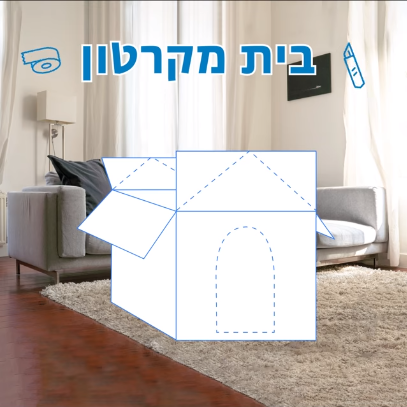
Playing a game of ‘Hide and seek’
Where is the best place to hide? Just like Mom and Yasmin, you too can play hide and seek, with toddlers hiding and parents looking for them. Were you able to find them? Then how about starting another round and inviting the rest of your family to join you?
שרים ורוקדים בעקבות הסיפור
“בַּיִת זֶה בְּסַךְ-הַכֹּל קֻפְסָה…” – צפו בסרטון שמציע לרקוד ולשיר יחד.
A bit of advice when reading as a family
Toddlers like to be part of the story: Repeating words and sounds found in the book, or dramatizing the actions taken by the different characters. It is their way of identifying with the story, enriching their emotional worlds, and acquiring vocabulary and concepts. That is why, when reading together, you could “play” the trumpet, “beat” on a drum using your hands, and pretend you’re a choir conductor.
Playing music together
Almost any item can become a musical instrument: You could clap together to the rhythm of the song, or collect any instruments, rattles, and utensils you can find. A pot with spoons can be a drum, a used roll of paper towels can be a trumpet. You could even try to tap various materials to find out what kinds sounds tapping wood makes? And what about tapping the floor? Or metal? You may enjoy picking one of your favorite songs and playing it together.
Listening to the story
Please scan the QR code to listen to the story. You may enjoy turning the pages of your book as you do.
Dramatizing the story with toys
Your children’s favorite stuffed animals and other toy animals can also be part of the story: Add or omit one each time as you act the story out together.

Playing a game of ‘Who is sleeping under the blanket?’
Ask your toddlers to close their eyes, and hide a stuffed or other toy animal under the blanket. When they open their eyes, you, parents, can give them hints as to the identity of the hidden animal, until your toddlers guess what it is. Does it bark? Does it hop around and eat carrots? You could also switch roles, letting your toddlers give you, parents, hints about who is hiding there, underneath the blanket.
A discussion on being together and apart
Gali and Gaya love doing stuff together, but also separately. You may want to discuss and discover what your toddlers like to do together with a sibling, friend or you, their parents, and what they prefer doing on their own.
Gali and Gaya come visit
Would you like to play with Gali and Gaya, and dramatize the story? Please scan the QR code, print out two adorable ducks, cut them out, and act the story out with them…!
Follow me! A motion game
Like Gali and Gaya, you too could walk together. How about making a trail at home, and marking it with a piece of rope or various items. Next, walk along it in single file, one behind the other, or perhaps together, side by side. You can also take turns being in the lead and exclaiming: “Follow me!”
Animals & illustrations
A sheep, frog or butterfly? You may enjoy looking at the illustrations in this book together, and discovering the various animals. You could make the sound that each oft them makes, or move like them: Flying like a butterfly, buzzing like a bee, or… What else?
A piece of advice when reading to toddlers
We recommend reading the book alone first, before reading it as a family. Prior familiarity with the book helps to read it seamlessly later, at a pace suitable for toddlers. Enjoy reading this book!
A discussion on who can help
We can all help others, even toddlers. You may want to ask your toddlers how they can help others, or tell them that they are helping when it happens: “Remember when you helped me set the table?” “Look at you helping me put away the toys!”
Listening to the story
Would you like to listen to the book Noni and his Mom Walk Homefrom Kindergarten? Please scan the QR code to find a recording of this book. You could listen to it while traveling, playing, or sitting together while turning the pages of the book.
A story in illustrations
The illustrations are part of the story, and using them, toddlers identify and recognize the plot and some of its details. You may enjoy looking at the illustrations together, and searching for the items that Nomi gives his mother: ‘Where do you see an illustration of a bag?’ and ‘Where can you find an illustration of a coat?’
Playing a game of ‘An items tower’
Inspired by the items piling on top of mom in this book, you may want to take turns building a tower out of various items: Very carefully, one on top of the other, you can place building blocks, toys, hats, bags, and anything else you might want to add.
A discussion on old wives’ tales
Stories about grandparents’ own childhoods, stories about the items they had that are no longer used, or perhaps some other story? – Following this book, you may want to sit and talk to your grandma or grandpa, and hear stories about the past from them.
Listening to a story
Would you like to hear Grandpa tell this story? Please scan the QR code and listen to this book, with a few exaggerations.
A game of “The best”
Grandpa has the loudest laugh and the most interesting stories, and what are you “best” at? – Take turns talking about yourself, and saying what you do best. Next, take turns talking about the person sitting next to you, and what they’re the best at – but only the good things!
Dancing in a circle
Why is everybody dancing? Because the State of Israel was established, and it’s a great reason to dance! Do you know how old Israel is now? How many years ago was it established?
Perhaps you would also like to dance together to the music, and dedicate a dance to someone or something that has happened.
A discussion on yearning
How does yearning feel? Have you ever missed someone? Who? – This book is an opportunity for a discussion during which you, parents, can share your own experiences of missing someone and waiting for their return.
What does it mean to miss someone?
Pupik misses his father, and Ohad knows exactly how he feels. They share their feelings, and think of things they could do while missing someone. You may want to scan this QR code to watch them, and get some good advice for times when you miss others.
Arts & crafts – A yearning box
Does it feel like time is standing still while you are missing someone who is away? – You may want to make a box filled with items that could make time go by faster, and make you forget about that person’s absence for a while. How about putting some photos of the two of you in it, materials with which to make a gift or a drawing for them, which you could give to them upon their return?
A game for passing the time
A minute can go by very quickly, or it can almost stand still. Would you like to try? – Set your timer for one minute, choose an activity, and do it for a full minute: Hopping on one leg, sitting still, finding items beginning with the letter G – Which activity helped time pass by faster? And which activity made it go by extra slowly?
Reading poems
The poems in this book present small moments in life. Every time you read together, we recommend selecting one poem, and reading it together. Does the poem remind you of something that once happened? This may be a good opportunity for you, parents, to share a childhood experience with your child, creating closeness and intimacy with them.
Pleased to meet you – Hagit Benziman
When did Hagit Benziman start writing? What does she write about, and why? You may want to scan this QR code to find out more about this author and her work.
Looking through the family album
You may enjoy looking at parents’ family photo albums together, searching for special childhood moments. You could also look at early childhood photographs of the children, and share information about the moments captured. Which memories do they evoke in you?
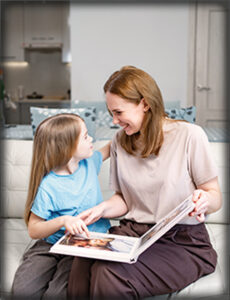
Dramatizing together
Do you have a favorite poem among those included in this book? If so, how about acting it out together, with the grownups playing the parts of the children, and vice versa.
A little advice for family reading
To make family reading enjoyable, and encourage children to read, we should choose books to which children relate and explore topics in which they are interested. Some prefer a piece of fiction, while others would want to read a story that “once was”. Whatever their favorite book may be, it would encourage them to enjoy books, while helping them to develop their imagination and creativity.
A discussion on belongings and memories
You too could look for items that remind you of past experiences: A family photo, gift you have received, or item associated with an experience you have had. Take turns introducing the object of your choice and sharing a memory relating to it.
Listening to the story
What does Grandpa sound like? Does the machine make sounds? By scanning the QR code you too can listen to the story together or separately.
Building something
Are you interested in making a machine of your own? You can gather some boxes, fabrics, crates and old toys to build your very own machine. You can plan what it would do and look like together, or simply build it and discover its attributes as you go along.
Illustrations – Where are the machines?
Many of the illustrations in this book depict machines. Perhaps you would enjoy leafing through them and finding illustrations of machines and machine parts – Can you tell what each of them does? Perhaps you could be inspired by the part you found to invent a new machine, and imagine what it is capable of doing.
Pinterest
Arts & crafts, songs and other activities are available on the Sifriyat Pijama Pinterest page
Reading together
We recommend reading the book on your own, before reading it together as a family. Familiarizing yourself with the book in advance will help you read it afterwards at the pace and sequence suitable for your children. Enjoy reading this book together!
A discussion on waiting
Have you ever had to wait for something? Perhaps you could share that experience, and tell each other about anticipation. You could also come up with ideas together of what you could do while waiting, or tell each other what you chose to do in those instances while you waited. What happened in the end?
An illustrator at work
How do you illustrate a bunny? Or a wolf? Scan the QR code and watch illustrator Ronan Badel illustrating the characters in this book.
Illustrations and clues
Look at the final illustrations in this book. Can you find any indications for the birthday party the wolf had almost missed? And which presents did the bunny get? And what was special about the wolf’s gift?
A game of “Wolf in motion”
Leaf through this book and decide the order of play. Take turns looking at the illustration you have each selected and acting out the depicted wolf’s motion: Is it going up in the elevator? Or walking on all fours? The other players will have to guess what the wolf is doing.
A discussion on stories that “once were”
Following this book, you could also raise memories and tell stories that “once were” – a childhood story of yours, parents, or one told by Grandma or Grandpa about the old days.
Listening to the story
You could listen to the story together or separately; all you have to do is scan the QR code and… let the magic begin!
Suitable for families of Olim too.
Look how we have grown!
The tree grew, as did Rebecca. And how about you? Perhaps you would enjoy watching videos and looking at photographs to see how both children and parents have grown and changed. You could even discuss the kinds of actions that your children were able or unable to do in the past.
Orange sponge cake
Would you like to bake a cake? All you need are two eggs, one third of a cup of sugar, one third of a cup of oil, half a cup of fresh orange juice, a cup of flour (or substitute) and one teaspoon of baking powder. You could also add the grated zest of half an orange.
Mix all the ingredients in order and place in an oven preheated to 180 degrees Celsius. Bon Appetit!
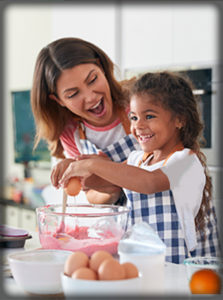
A discussion full of delight
Having read this book, you may enjoy a discussion about why, you think, Uncle Simha (Hebrew for joy) is named so. What about the things he does or says that make you smile?
Listening to My Uncle Simha
Would you like to hear a story? Go ahead and scan the QR code to listen to the book My Uncle Simha. You may enjoy listening to it together while turning the pages whenever you like.
Happy songs
Which songs make you happy? Perhaps you could make a playlist of all the songs that make your family happy, and sing along together. You could even sing in funny voices – a high-pitched voice, the deepest of basses, or a whisper – adding some dance moves for greater delight.
A confused game for a confused uncle
Take turns asking a question while the other players try to come up with a “confused” response. For example: What’s your favorite drink? Tea with a touch of mustard! What do you do when it rains? Wear sunscreen! What sound do birds make? Where should we go on our next trip?
A discussion on our house
All houses consist of walls, a roof, doors and windows: What’s special about your house? What makes it your home? You may want to discuss special objects and items found in your home, or the things you do there together.
A video – House of boxes
What can you do in a house made of boxes? Scan to QR code to get ideas for a house that’s both real and imaginary.
Arts & crafts – Home building
How about making a house out of blankets, cardboard boxes, sticks and clothespins? And what else would you need? Decide on a location and workplan, gather the necessary items and accessories, and off you go!
A game of house catch
Take turns announcing a topic and having all the other players try to work together to find a suitable item. For instance, when “red” is announced, all players must search the house for a red item. In the next round, another player might call out “big”, “small”, “cute”, “old”, “multicolored”, “annoying” or “wheel”, sending the other players to look for an item matching their announced topic.
פינטרסט
Pinterest
Arts & crafts, songs and other activities are available on the Sifriyat Pijama Pinterest
A discussion on fear and encouragement
As our children grow up, they experience various fears, but discussing them helps them to cope with them, while instilling in them a sense of security. Together you can choose to discuss what they find scary, and what helps them overcome their fears.
Listening to a story
Would you like to hear Maayan and listen to everyone cheering her on? Scan the code and listen to the story together.
הַסִּפּוּר לְהַאֲזָנָה – עַכְשָׁו בָּפּוֹדְקַאסְט שֶׁל סִפְרִיַּת פִּיגָ’מָה!
בגן At the playground
After reading this book, you may enjoy going to the playground together, and trying out the equipment together as well as separately. Perhaps you would like to invent a special course from the slide to the swing and so on that would bring joy to all of you.
Family encouragement
“Hooray, Maayan!” Everyone calls out when Maayan is scared. How do you cheer one another on? Perhaps you could come up with family words of encouragement, find a motivating song, or a chant you all agree on that cheers you up and gives you strength.
A discussion on what has been lost
Have you ever lost anything you found important? How did you feel and what did you do? Perhaps you’ve found someone else’s lost item… This book invites children as well as parents to share their childhood experiences of losing and finding lost items.
A video about a lost and found stand
A video about a lost and found stand
Shabi and Uzza from the Israeli children’s television show Parpar Nechmad are also returning lost items to their owners. Scan the code to watch the video.
A discussion on searching and finding
Following this book, you may want to embark on searches together with your parents, grandparents, or other relatives: What have you found? Were you surprised? Do you enjoy searching and finding?
A game of Search Cootie Catcher
A game for both seekers and finders.
Scan the QR code
Print out, cut out and fold according to the instructions.
Have you searched? Have you found? Would you like to play again?
Illustrations
This book contains both colorful and black and white illustrations. Can you figure out when the illustrations are in black and white, and when they are multicolored?
A game of “what’s missing?”
A game of “what’s missing?”
Place several items in a row and look closely.
Take turns hiding one of the items while the rest of your family members have their eyes closed. Once it has been removed and hidden, the other players can open their eyes and start searching – Which item is now missing? Where was it hidden?
Pleased to meet you, I’m Hyla!
I’m similar to a frog but smaller. I can be found in Israel, mostly on trees, eating insects and laying eggs in the water. I’m a protected species and therefore cannot be kept in a jar, only in nature.
Pinterest – Crafts, songs and other activities on the “Elik Belik” book page in Sifriyat Pijama on Pinterest
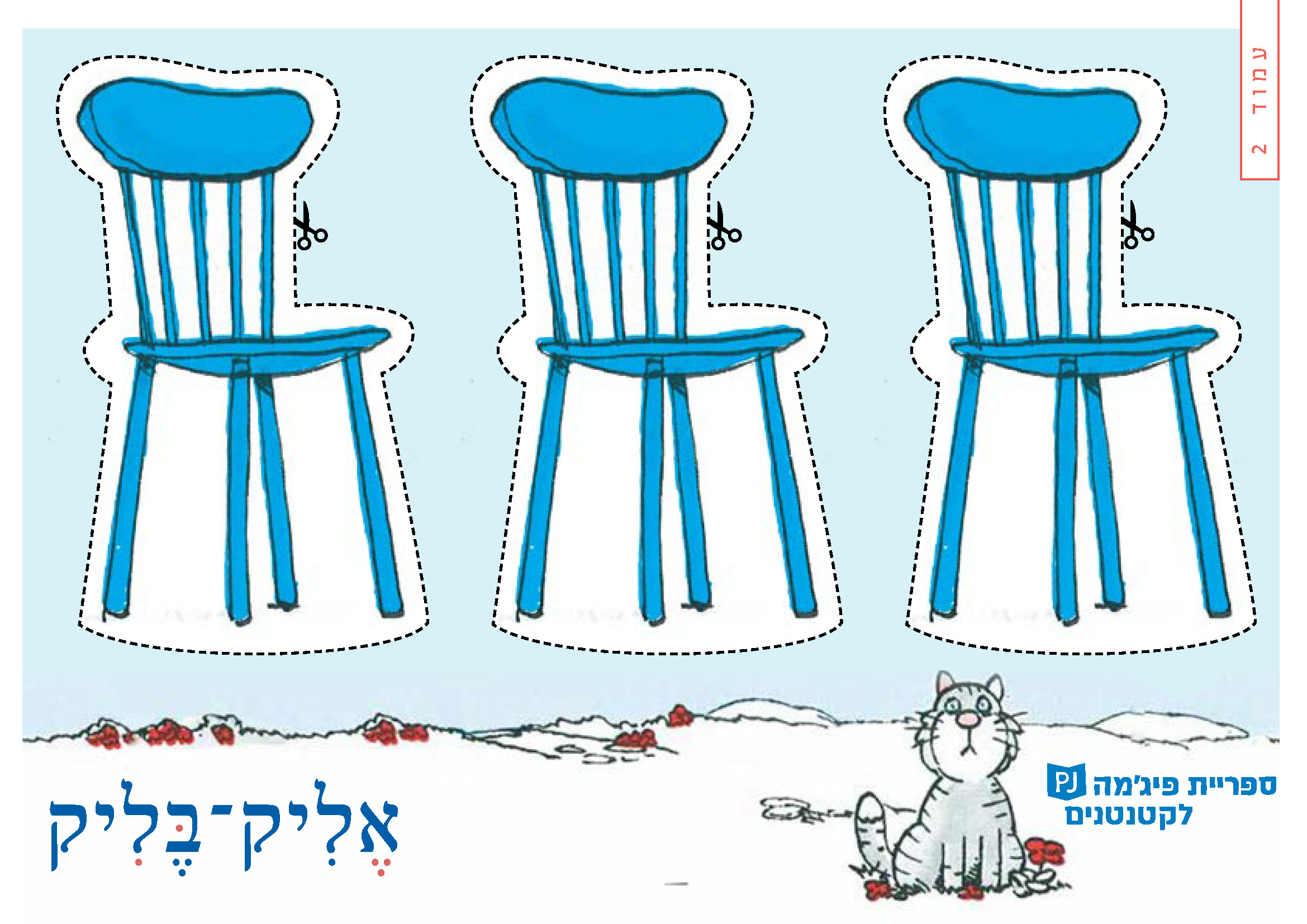
Reading Together
Do you also have little friends visiting your home? Are they imaginary friends, or maybe a beloved doll? It is worthwhile to talk about it with the toddlers and hear what do they like doing with the little friend. You can “bring in” the little friend to join and read the story.

How to Read the Story?
The story is slightly longer than usual, and in order to arouse interest and curiosity it is recommended telling it in a variety of voices: a voice for Dad, a voice for Yaeli and a different voice for Mom and for Elik Belik. You can look together at the illustrations and invite the toddlers to participate in the identification of details and repeat the words “Elik Belik”.

Hide and Seek
Where’s the doll? On the table? maybe underneath it? And where’s the ball? You can hide various objects, look for them and then say: “The ball is on the chair”, “The ball is under the bed”. You can also hide yourselves and look for each other.

From Small to Big
Dad has big shoes, Mom’s shoes – they are less big, Yaeli has little shoes, and Elik Belik’s? Tiny shoes! Go on a journey throughout the house, collect items of the same type and arrange them from the smallest to the biggest.
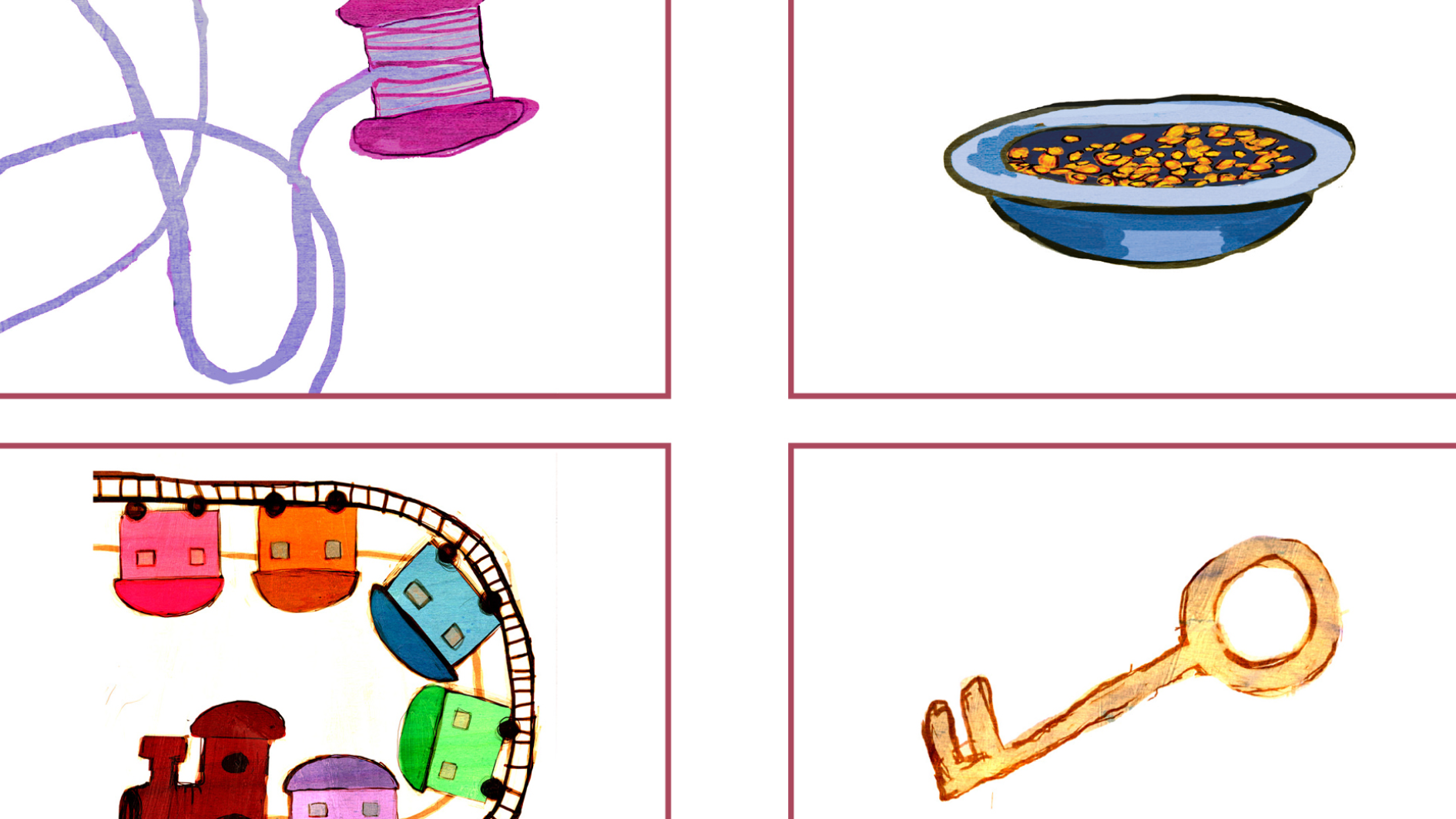
Reading Together
It is worth sharing the reading of the story with the toddlers: Where is the key? What do you do with the string, and what are the crumbs for? What surprise is hiding in the small pocket?

Guessing Game
Hide an object in a garment pocket and let the toddler guess what you hid with the sense of touch. You can provide clues, reveal a fraction of the object, and eventually disclose the item and demonstrate what it is used for.

Doing Things Together in the Family
Grandfather and the child are talking, sowing seeds, and feeding the rabbit. What do toddlers love to do with adults in the family? With grandparents and other family members?

What Goes with What?
“A key in order to open”; “A ticket to ride the train”; and what is a basket for? Or a spoon? You can walk around the house and choose items, then talk and check together what they are called and what they are used for. Matching Game –What Belongs to What – is waiting for you when you scan the code:

Pinterest – Crafts, songs and other activities on the “Grandpa’s Pockets” book page in Sifriyat Pijama on Pinterest
We can help too!
What can toddlers do at home? Many things! They can put glasses on the dining table, sweep with a small broom, feed the pets, and… offer cookies. It is worthwhile to talk and show what the toddler is helping with at home, and what else they want and can participate in.
Who is in the family?
The child in the story hands out cookies to other family members: grandmother, uncle, sister, cousin. Who are your family members? You can talk about family members, say their names and thier roles, such as: “Grandma Braha,” “Uncle Baruch,” use family photo, and use family photos.
Let’s make some refreshments together!
You too can prepare refreshments together, such as chocolate balls, a plate of fruit, or a sliced cucumber. You can prepare “pretend” refreshments using play dough and offer to the dolls at home.
Game: Grandma had cookies…
Do you know the game “Grandma made porridge”? “The child had cookies” can be played in a similar way, in which the toddler opens her, or his hand, and the parent begins to count: “The little boy/girl had cookies and gave one to Grandma (holding the thumb), and one to Uncle (holding the forefinger) etc. And so you count the fingers by allocating a family member to each one. Who will you give the last cookie to?
Reading and hugging
While reading a story, you can hug each time a new animal joins the group. You can also play the hugging game: move away from each other, count “three, four,” and then run to each other, and hug!
It’s crowded but that doesn’t matter!
Invite the rest of the family to sit together with you on the couch, on the carpet or on a mattress. You can also include dolls or pets. Sit close together, then further away, and check: how pleasant is the closeness?
What sound do I make?
How does a dog bark? How does a cat meow? and how does a cow moo? – Toddlers can join can join in to the animals in the story.
Would you like to bring another animal in? And what sound would that animal make?
Sing about cabbage
“I sat on a cabbage” is a song that you can sing, add movements to, dance to and clap your hands to.
The song will upload when you scan the code:
QR – I Sat On a Cabbage – Scan the code and sing together!
Discussion
Parents may want to share the stories they liked while growing up: Was there a particular story you enjoyed hearing over and over again? Who was your favorite protagonist? You could ask your child which stories they like. Are they fictional or true stories?
Dual role illustrations
When do the illustrations tell the story of Leo and Mr. Zinger, and when do they complement the story the two of them made up? You may enjoy taking a look at the illustrations together, noticing the various styles, and thinking of ways of discerning what the illustrations refer to, and what they are telling us.
The story in the hat
Which stories are hidden in the hats you own? how about choosing one of your favorite hats and telling the story that is hiding in it: one player looks into the hat and starts inventing a story. After one or two sentences, they pause, and the next player picks up the story, and so on, until all players have added their part to it. Bashevis Singer could serve as a source of inspiration for telling a family story that has been passed down in your family.
A game – Who am I?
Would you like to play a game? Perhaps you would enjoy writing the names of your favorite characters from books on pieces of paper, and taking turns wearing a hat bearing the name of the character. Whoever wears the hat does not see the name written on the piece of paper attached to it, and must guess who it is using questions, such as: Is it a fictional character? Is it an animal?
Discussion
You may want to discuss your experience of acquiring Hebrew: What were the first words you said as toddlers? Did you invent any words? Do you, parents, know what the first words you said were? Did you acquire another language? If you learned to speak Hebrew at a later stage, you could discuss the experience of learning the language, and discover what language you speak when you dream at night.

A family dictionary
Which word does your family like, and why? Are there any words that you have invented, and only your family members understand? Perhaps some of those words have a special story behind them? You may enjoy collecting stories from family members: a word of friendship, a special term of endearment, or secret family codeword.

Name, place, animal, thing (a game)
In Hebrew the game is called Chai, Tzomeach, Domem (animal, vegetable, thing). Select a letter, and participants must name animals, vegetables and things starting with the letter selected.

Haftaa [surprise], boreg [screw], glida [ice cream]
Rakevet [train], mapuhit [harmonica], and kruvit [cauliflower] are just some of the words that Eliezer Ben Yehuda invented. Others appear on the second to last page of this book. You could take turns to choose two words from this page and use them in a sentence: a sentence containing the words haftaa [surprise] and ganenet [kindergarten teacher], or ganenet [kindergarten teacher] and tizmoret [orchestra], or how about tizmoret [orchestra] and nazelet [nasal mucus]? Do you think you could put a small story together featuring all the words on this page?

The revivers of the Hebrew Language
Rabbi Yechiel Michel Pines (1843–1913) was involved in the purchase of lands, setting up the Academy of the Hebrew Language with Eliezer Ben Yehuda. Rabbi Pines invented new Hebrew words, such as agvania [tomato] and shaon [clock/watch].
Nissim Behar (1848–1931) founded the Torah Umelacha School in Jerusalem where Hebrew was taught in Hebrew. Eliezer Ben Yehuda was a teacher at this school.
Hayim Nahman Bialik (1873–1934) – the national poet was a key activist at the Academy of the Hebrew Language, inventing professional terms in fields such as music and the playing of musical instruments. Matos [airplane], matzlema [camera], and etzbeoni [thimble] are some of the words he invented.
Many others actively contributed to the revival of the Hebrew language. You could learn more about them by visiting the Academy of the Hebrew Language website.
Words of emotion
The letters in the story describe feelings: missing someone, loving someone, feeling happy…
How about making some cards with words of emotion, as well as phrases that describe these emotions, and connecting each word with the sentence describing it?
Missing someone: I wish we could see each other again
Loving someone: It feels good when we’re together
Feeling happy: This tune makes me want to jump up and dance
Feeling thankful: I’m so glad we met! Thank you for coming round!
Having a party
Would you like to party like Rosalinda and Aaron? You could use the invitation they made to write an invitation of your own, prepare one of the dishes they had at their party, play some party music, and dance together.
You could even take some photos during your party, and save them in an envelope inside the book you’ve received.
Discussion
Which perfect gift would you like to get for your birthday? How would you feel if you did not get it? Have you ever wanted something very badly but did not receive it? This book prompts us to discuss our expectations – why this specific gift? Do we really need it or are we simply jealous because we saw someone else has it? You may also want to discuss disappointments, and the things that help us cope with them.
Perfect gifts
How well do you know members of your own family, and what do you think would be the perfect gift for them – would it be something you buy or an experiential gift, such as time spent together, or perhaps a trip somewhere? How about playing a game and finding out? In each round, all participants try to guess what one participant would really like to get as a gift. Those whose guesses are the closest win… the perfect family hug.
A human car game
Whoever said only cars drive round and round with a cord attached? People could too! Two of you could hold the two ends of a long cord, leading one another left, right, backwards and forwards. If you get tired, make a pit stop, and start again.
Time together
“A car with Dad is the perfect gift”. And what would you consider to be the perfect gift? What would you like to do with your father or other family members? You could fix broken items, build or assemble something, or perhaps draw, bake, plant, or dance together. In fact, you can do whatever you want, as long as you get to spend time together.
Discussion – What does it mean to be considerate?
“It’s important to be considerate toward our environment” – What does being considerate mean? How can we be more considerate of one another at home, within our own family? And how can we care for our environment? You could discuss these questions with your child, and come up with suggestions on how to be more considerate of other people as well as the environment.
An invitation for an observation
You’re most invited to embark on an observation on a piece of nature in your immediate surroundings: A park near your home, or field, or yard, or even a planter on your balcony. What would you discover if you sat down quietly and watched? You may want to bring a magnifying glass along with you.
Learning from one another
What can adults learn from children? Lots of things! How to play their favorite game, engage in arts & crafts, find out more about a subject they learned about in preschool, or just share an interesting thought. And what can children learn from adults? To find out what we can learn from one another, all we have to do is sit together, and pay attention.
Catching colors
The sky is blue, the earth is brown, and vegetation is green. You may enjoy going outdoors and “catching colors”: Take turns to say a color, while the other players quickly find an item around them that is the same color, and point to it.
Discussion
Nuri and Grandpa spend time together, and it’s nice. You may want to discuss and discover the following with your children: What do they like doing with their grandfather, grandmother, or other family members? Is there anything that they wish to learn from them? Perhaps they have a question that they wanted to ask and were too embarrassed to do so?
Looking at the illustrations
Which treasures can be found in Grandpa’s cave? You may want to look at the illustrations and think about how they ended up being buried in the ground, and to whom they belonged. You could also imagine what might be hidden in the ground underneath your own home.
Introducing the mole
What is a mole? Moles are rodents living in underground burrows. The shape of their bodies is suitable for living in burrows as it is long and cylindrical. The moles’ touch and hearing are evolved, and they eat plants that grow in the ground. If you want to know more, please look for information on moles online.
You could also be a mole for a day!
Make a tunnel out of sofas, bed sheets or pillows, go into it carefully and crawl out. You could also turn off all the lights at home, and use a flashlight to go left, right, backwards and forwards, overcome various obstacles and… reach your destination!
What's the question?
You may enjoy playing the following game and finding out what happens when we answer before we ask: One player says an answer, and the other players try to guess what the question was. for instance, the answer “My name is Nuri” will be met with the question “What’s your name?”. Which questions match answers such as “I’m five years old” or “a purple monster”?
Discussion
How many rooms does your house have? And what do you do in each one? You may want to look around and think: What do we really need, and what could we forego? You could discuss your own home, or imaginary ones. You parents could tell your children about the house in which you lived when you were their age: What are the differences and similarities between your childhood home and the current one?
Building houses
You can be builders too! You can build a house of Legos, cardboard boxes, pillows, or any other material. How about decorating the structure you’ve built, and asking your parents to help you write the name of the street it’s on. And who would you want to invite over to the house you’ve built?
An illustrated story
You may enjoy looking at the illustrations and discovering the other houses that appear in them: Who is building a house? And who is carrying one on their back?
One room
Look at the final illustration at the end of the book, where the main character is living in a single room: Which items does it contain? Would you have removed any of them, and brought in others in their stead? Which items found in your home would you have added to the room depicted in the illustration? You could take turns and have each family member pick an item in the illustration and decide whether or not they would leave it in the illustrated room, and if not, which item from your own home they would have placed there instead.

Just before bedtime...
How do you get ready for bed? What helps you fall asleep? You can talk about it together and think about creating a set ritual that will engender calm, and let you share the day’s experiences and thoughts that come to mind.

My notebook of thoughts
Isn’t it lucky that there’s a way we can remember our thoughts and stop them from getting away? How do we do that? Keep a notebook and pencil by your bed, and just before falling asleep, before your thoughts scatter away, draw them. You can color in your drawing in the morning, because now… is time for bed.

It's lucky that... It's good that...
“It’s lucky that a pot has two handles, and not five… if it did, how would we hold it?”, “It’s good that the windshield is made out of glass, not cardboard”. What do you imagine? Which things make you happy just as they are? Each member of the family can bring a certain object and talk about it: “It’s lucky that…”, “It’s good that…”.

Melodies, sounds and colors
The world is filled with melodies and sounds. Which melody do you like? Try singing a favorite melody together wile clapping your hands, moving parts of your bodies, singing, or playing instruments.
The world is also filled with diverse colors and shapes. You can draw as you listen to the music. Which shapes and colors will you choose for your drawing?
Illustrations tell a story
The illustrations in this book demonstrate how Itamar and the rabbit imagined one another versus what they really look like. You may want to check and compare: Do the monsters resemble the real child and rabbit? Are there any similarities between the monsters both Itamar and the rabbit had imagined?
Discussion
Were you, parents, also afraid when you were younger? Perhaps you could tell your children what you were afraid of, and how you grappled with your fear. You could also listen to your children as they tell you what scares them, and together, think of ways to overcome the fear.
Pleased to meet you: Monster
What does a scary monster look like? How about drawing one together, and then trying to imagine: What is the monster’s name? Who are its friends? What does it enjoy doing, and what is it afraid of? Now that you’ve gotten to know the monster, it may be worth asking yourselves whether it is still as scary as it was before.
A family magic word
“Jimalaya Jim! Zuzu buzu Yam Pam Puzu!” Each of the characters in this book has a magic word it uses when something scary happens. What is your magic word? You’re welcome to chose a family magic word together, and think of times when it would be appropriate to use it.
Discussion
Who are your friends? What do you like doing together? You can have a conversation about this and look into these questions: Do you like sitting together with other people quietly, like the penguin? Perhaps you like running, like the tortoise? How about thinking together about how you can bring some joy to friends who need you.
What story do the pictures tell?
Through the unique drawings in the book, you can read the story together even on the pages that have no words. Look, together, at the pages with the drawings, and tell each other what those drawings are expressing. Is there an illustration that you liked in particular?
Hello, Red Balloon
Which drawings does the red balloon appear in? When does it disappear? You can look for it in the book, and play some games with balloons, too, like hitting a balloon between your hands, tossing it into the air and trying to prevent it from touching the floor, or inflating it , releasing the air, and seeing where it ends up.
Visiting the sick
Amos McGee takes care of his friends, and they take care of him when he’s sick. Think along with your children about how you can make a sick friend or relative happy (through a phone call, a hand-drawn card, a small gift, and more).
Pinterest – Arts and crafts suggestions on the book’s page in PJLibrary’s Pinterest account

Discussion
The family in this book is rushing to make the train and celebrate Grandpa Dov’s birthday, and yet its members remember to be considerate toward others, and care for animals and the environment. Perhaps you would like to try and discuss what being considerate means – how would you like others to be considerate of you? Who could you offer to help in your immediate surroundings or family? Which actions can you take to make the older members of your family happy?

Playing "fast or slow?"
You may enjoy playing a game called “fast or slow”: take turns to choose a certain action and tell the other players to perform it quickly or slowly. For instance, clap your hands… quickly, and now… slowly; sing a song extra slowly, and then super-fast! After you’ve played, you may want to discuss and discover what you enjoyed doing quickly, and what was more fun to do slowly.

Hidden illustrations
The illustrations in this book are extremely detailed. How about choosing your favorite page, and looking for the tiny details in it? Perhaps you could take turns to ask each other whether you can spot a particular detail in the drawing: Where’s Grandpa Dov’s gift? Where’s the football? Who can find the teddy bear?

Types of…
This book specifies types of plants, toys, cats, and musical instruments. Perhaps it can inspire you to take turns choosing a subject, and having the other players list as many items associated with it as they can. You could choose topics such as clothing, friends’ names, types of toys or musical instruments.
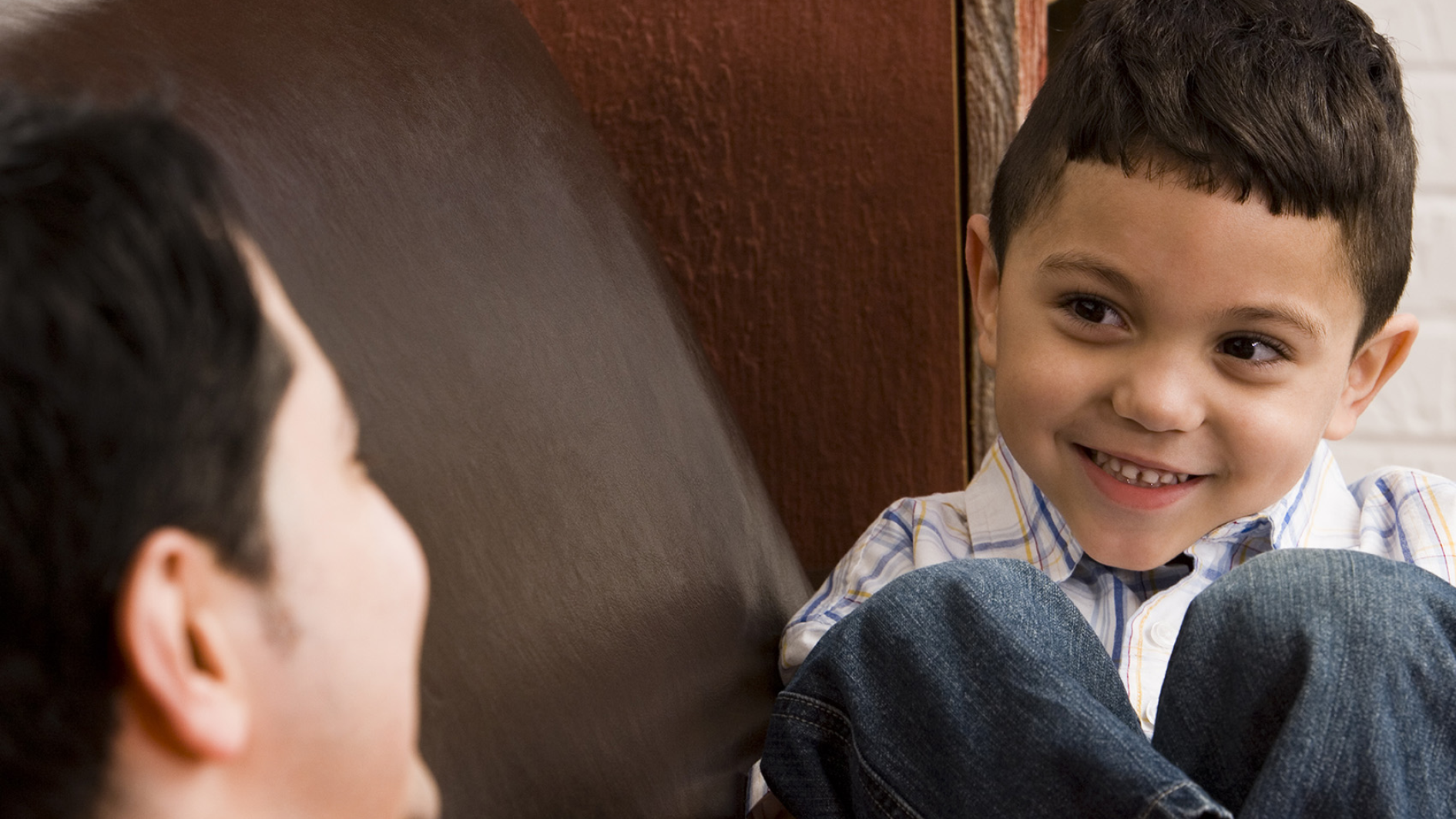
Discussion – With someone and on my own
What can we do on our own? What’s better done together? You may want to discuss the things we can do with others with your child, and then come up with the things that they can do themselves. Who do they enjoy sharing experiences with? Family members? Friends? Perhaps their pet?

A game – On one foot
Can you also stand on one foot? Let’s check!
Throw a die, stand on one foot and count to the number shown on the die: One, two, and… Are you about to fall? Reach out and allow whoever is next to you to help you stay upright.

Cooperation
You may enjoy putting a list together of all the activities that are best done together, in collaboration with someone: Tidying up your room, making dinner, or reading your favorite book. Then, take some cards, write each activity down on a separate one, and decorate it. You could keep all the cards in a special box, pick one out every day, and ask: How about cooperating today and sweeping the house? Why don’t we engage in a family game of catch? Or how about joining forces in some other activity?
Movement – On one foot or two
You may want to assemble a movement course at home, and complete it on one foot, two feet, all fours, or perhaps even three… Design a track on the floor using skipping rope, and take turns completing it in a different way each time: Hopping on one leg, while keeping a cushion balanced on top of your head, crawling, in pairs, with your arms crossed, because it’s easier to jump on one foot in pairs.

Pinterest – Movement games, collaborations, arts & crafts and songs are on the On One Foot page on the PJLibrary Pinterest.ּ
Discussion
This story prompts a discussion about neighbors and relationships: You may enjoy asking one another which neighbors you know, and come up with an activity that would help you get to know a family that lives nearby better. You, parents, are welcome to share stories about the neighbors living near your childhood home: Who were they, and what did you do together?
Pleased to meet you – Getting to know your neighbors
You could, perhaps, prepare something together to give to your neighbors: It could be something to eat, a drawing, or a letter that you could leave by the door. You could even just visit them and ask them how they are doing. And the simplest suggestion of all: Smile when you see your neighbors, and say: “Hi, how are you?” and “Have a great day!”
Fun at home
The characters in this book do lots of fun things at Yael’s house! You could look at the illustrations, choose an activity that interests you, and do it yourself, or with the rest of your family.
A home of your own
The children in this book make a building out of boxes. You can do the same! Find different-sized boxes and build a home from them for yourselves or your toys. Don’t forget to invite your neighbors over to visit!
Discussion
You may want to discuss and share what you enjoy doing with grandma, grandpa, or other family members, and have the parents talk about their own childhood experiences. You could even do stuff remotely and still feel close: some suggestions for activities that bring you closer while being carried out from afar can found in the “granny’s stories” section on the PJLibrary website.
What do we see in the illustration?
You could check out the drawings on the aprons at the end of the book, and even create your own “family doodle”, with each member of your family adding to the artwork. When you’re done, you can look together to find out whether any shapes of objects or characters are hiding in the doodle you made.
Illustrations – look for me
Look at the illustrations together and find out what the cat does on each page or where there are strawberries. You could search for certain items, or choose a color and look for details painted in that particular color in all the illustrations.
What did you do today?
Paint stains on palms, sand in shoes, or food stains on clothes are all indications of what your child did in kindergarten today. Together, you could look at the traces left by their action-packed day. Can you, parents, use the signs to try and guess what your child has done today, and discuss their experiences with them?
Pinterest – Suggestions for arts & crafts, games, doodles and strawberry growing are available on the Ronnie’s Stories: Ronnie’s Apron page on the PJLibrary Pinterest.
Getting [into] the picture
Would you like to go into one of the illustrations in the book? You could choose to be a guest at the home of one of the families described in this story, and imagine how it would feel to be next to the whale, or in the kangaroo’s pouch. What would you want to happen when you meet some of the characters depicted in the illustrations?
Guessing the animals
One family member can make the sound of an animal, or draw a picture of it, imitate it, or give some other kind of clue about it – and the rest can try to guess which animal they were hinting at!
Sound – imitate the sound made by this animal
Pantomime – act the animal out, walk like it or try to look like it
Picture – show or draw a small part of the animal: a tail, wing or foot.
Clue – describe some detail about the animal: where it lives, what it looks like, or the sound it makes.
Couldn’t guess? Help each other by providing additional clues.
Discussing – Why? How? What?
How did Guy feel when he destroyed Omer’s circus? And how did Omer feel when he discovered what had happened? Were you ever in a situation where you or someone you cared about ruined something for the other? How did you feel, and what did you do? Were you able to fix it? Perhaps you could discuss the feelings that emerge when something is ruined, and when you discover it can be fixed.
Toy Improvement – Time to fix some toys
Is one of your games broken? Has the paint peeled off? Perhaps a nail has come loose? Then it’s time to fix it! Make a list of all the things that need to be repaired around the house, then pick an item at a time, and fix it. You could even make new things out of old ones. An old sock can become a puppet! An old box can be painted and decorated with colorful paper and stickers…
A home circus
Circuses make children’s and adults’ imaginations run wild, and can be the setting for many fascinating occurrences. You may enjoy building your own circus at home, and acting the story out using the appropriate outfits and accessories. You could even be inspired enough to write a brand-new script about what goes on in a colorful circus.
Fixing yourself some arts & crafts
Torn pieces of paper can be turned into a piece of art! Color some pages in various colors, then tear them up into small pieces. You could also use newspaper cuttings or scrap paper. Next, make a painting together on a blank piece of paper by sticking the colorful, torn pieces onto it, and creating a mosaic!
Discussion – Parents ask "why?"
What sort of questions would you like to ask, and of whom? This may be an opportunity for both parents and children to share the questions that interest them the most. You could also raise questions that you would have liked to ask Shu the Vixen and Tut the Snail.
Being creative – The question box
What can we do with all the questions waiting to be answered? How about preparing a special question box, decorating it, and filling it with all the questions you find so intriguing. You could write them down on some notepaper and put them into the question box. Anytime you like, pick one, and look for the answer together.
Question games
Why at home? – Go around the house collecting “why?” questions about everything you encounter.
Questions about friendship – inspired by Tut and Shu’s friendship, you may enjoy asking: What do you think about Shu’s friends’ behavior? Has a friend of yours ever gone far away, or have you ever left a friend behind? Who were your parents’ friends when they were younger? What did they play or like to do together? What does your child like to do when their friends are around?
Questions about pictures – You may want to look at a picture together, and try to think of as many questions as you can to ask about it. You could then go out searching for the answers to your intriguing questions. You may even enjoy challenging yourselves, and looking for questions to an answer you already know: look at the picture (for instance: a gift, blue, moon), and instruct your child to think of a question to which this detail in the picture is the answer.

Discussing – The giving that never ends
Annabelle was a happy child. What, do you think, made her happy? How do you feel when you give to others? Can you think of something like Annabelle’s yarn – things you can give others many times over?
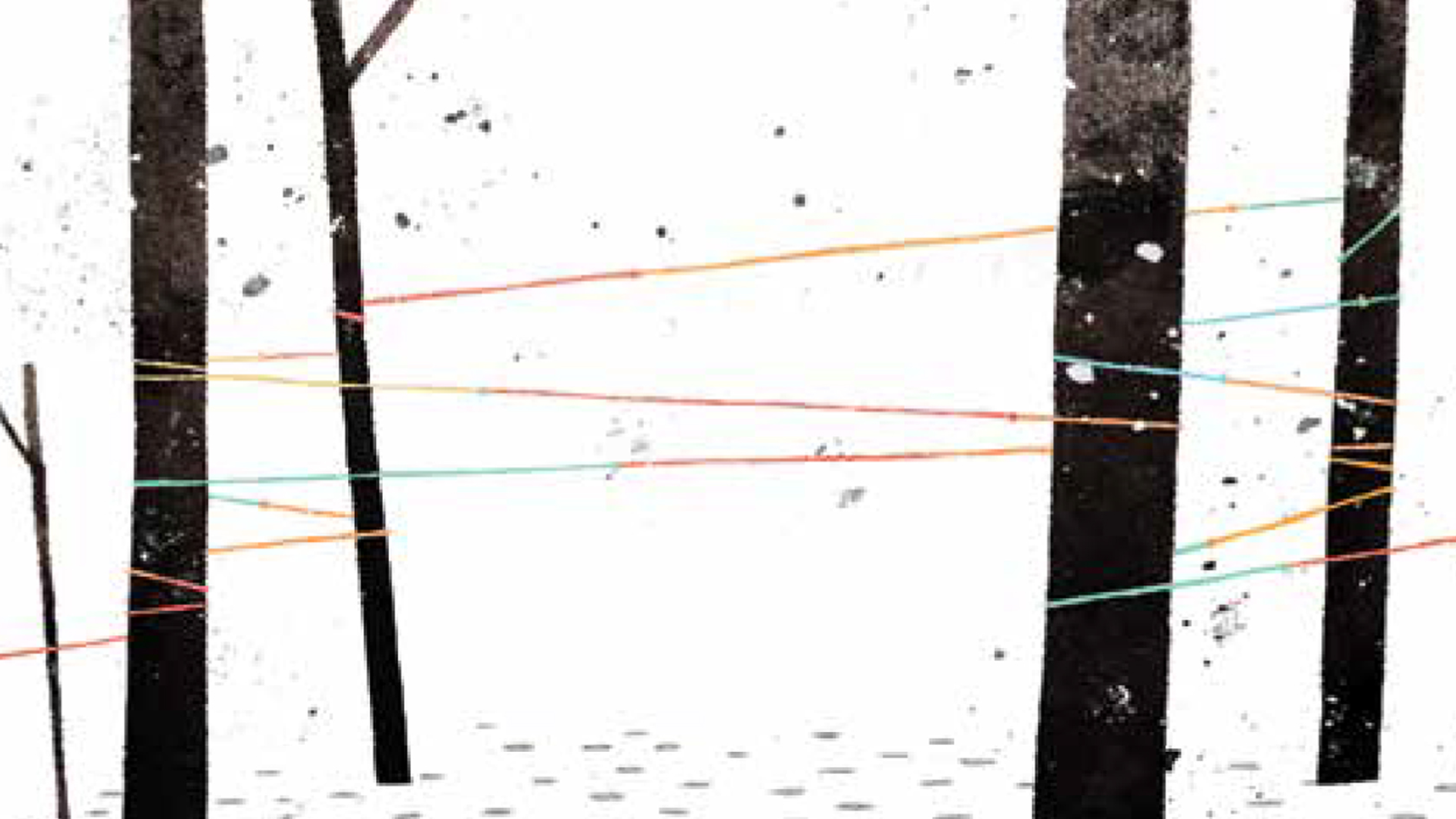
Playing – Don't touch the yarn
Yarn can be used to create a track for a single-rule game “Don’t touch the yarn!”. How do you play? Tie lots of pieces of rope, string and lace together to create long “yarn”, and wind it round the furniture and other objects in the room. Create an obstacle course that players must follow without touching the yarn: you can jump over it, crawl under it, or choose any creative way to avoid it, as long as you don’t touch it!

Doing some arts & crafts – familywear
Annabelle knit more and more colorful clothes that made all her townspeople happy. Like her, you too could create your very own attire as a family fashion statement. Think of the kind of special piece of clothing you would like to make: Should it be a certain color shirt? An interesting brooch? A bracelet, adorned hat, special socks, or other item of clothing your entire family agrees on?

Some more arts & crafts
Annabelle loves knitting. Are there any kinds of arts or crafts that both you and your child enjoy doing? Perhaps o
ne of you loves to cook, while the other is a plasticine sculptor? You may enjoy asking each family member what kind of art or craft they like to engage in, and suggest joining then to gain some hands-on experience.
Suggestions for arts & crafts activities using yarn can be found on our website and the PJLibrary Pinterest page.

יש לכם קופסה? יש לכם משחק!
יש לכם קופסה? יש לכם משחק! צפו בסרטון וגלו איך להכין משחק קופסה מתוק מדברים שיש בכל בית, בעקבות הספר “המתנה” מאת אַנְיֵיס לָרוֹשׁ!

Reading & discussing
Once you have finished reading the book, you could discuss what Michael (originally: Nicodème) did: Why did he want to give his mother a present? What do family members give one another? And what would you like to get from yours? Would you like to receive material gifts, such as toys, or are there “gifts” of conduct, intimacy, and friendship that you would like to give and receive?

Looking at the illustrations
Some of the special illustrations in the book are black and white, while others are colorful. You may enjoy looking at them with your child and discovering: which illustrations did the illustrator choose to color? Why did he choose to color those items instead of others? Would you have chosen to color a different item?

Creative fun – What's in the box?
We readers do not know which gift is contained in the box that Michael (originally: Nicodème) gives his mother. Perhaps the book is trying to tell us that it’s the act of giving that matters most. However… wouldn’t you love to know what was in there? Well, how about making a giftbox by taking a box, decorating it, and covering it with giftwrap. You could use the box to play a game called “What’s rattling in the box?”: Collect some “rattling” items, and place one in the box at a time. Then let each of the participants shake the box, listen to the item rattle inside, and try to guess what it is.

The gift of waiting
Michael (originally: Nicodème) waited patiently for this day to come, but many children find the wait a difficult challenge. You may want to share some waiting experiences together at home: making pastries with yeast, baking cookies, etc. or playing waiting games like the staring game. How patient are you?
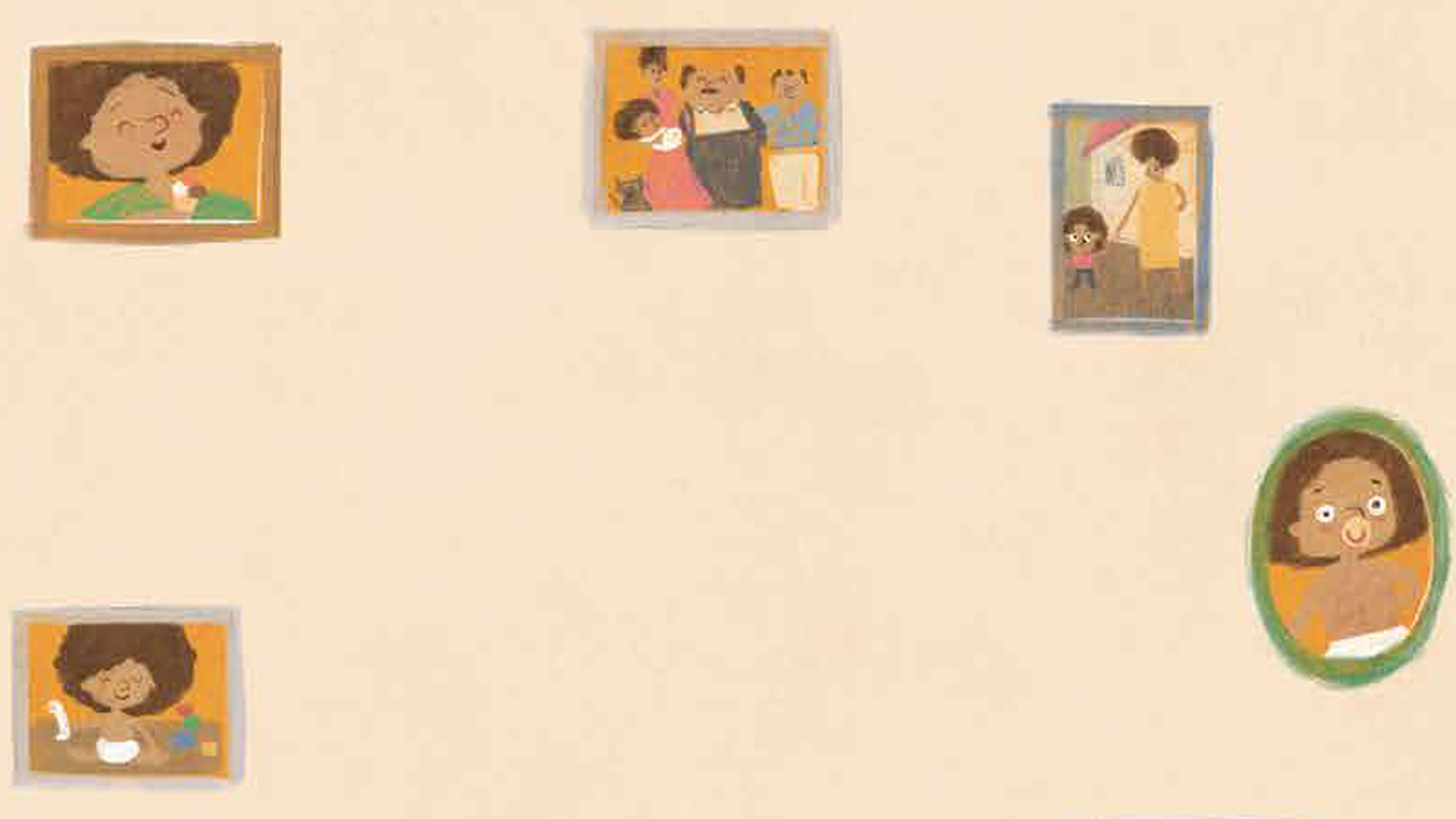
Discussing – Names and stories
Who likes their name? What is the story behind your family members’ names? Are there other family members who have the same name? or strange names? Are you named after anyone? You may want to do some research among your extended family. Who knows the stories you will uncover…

Observing – Where is Arie?
Shahar Kober’s illustrations invite us to follow Arie, and join him as he enters his family story. Can you find Arie in the different pages of the “Book of Aries”?
You may enjoy looking at old family photos of events that happened “once upon a time”: look through the pages of a photo album together, listen to the stories behind the events depicted in them, and choose one photograph you wish you could enter.

Doing some arts & crafts – A family book
How about creating your own family book, an album that will tell your story and that of your children, just like the Book of Aries in this story. Take a blank notebook, and collect stories from your grandparents, aunts, and uncles. Write down their memories from the time you were babies, funny words you said, or some special behavior. We recommend collecting such stories about both parents and children in your family. You should put in old photos and mementos from kindergarten, daycare, and the time when you were tiny babies.
Proposed Family Activities:
- You may want to leaf through the book and look at the illustrations together. You could ask your child to tell you the story in their own words, according to the sequence of illustrations.
- Perhaps you could build a tent out of bed sheets and blankets, go into them with your child, and read the book together there.
- You may enjoy playing a “reverse role” game: have your child read you a bedtime story, sing you a lullaby, tuck you in, and kiss you good night.
- You may want to act the story out using two puppets, representing Amalia and Mommy, as well as other puppets or stuffed animals. In your show, who will fall asleep first?
- You could share childhood memories with your children: did you share a room with your siblings? Who put you to bed? Did they tell you stories or sing you lullabies? Did you sleep with a certain stuffed toy or teddy bear?
This is the last book you and your child will be receiving from PJ Library this year. You may want to walk over to your bookshelf and be reminded of all the books you received. Do you have a favorite one? We wish you a wonderful storyful summer. See you next year!
Proposed Family Activities:
- You may want to ask your child to leaf through the book and look at the illustrations. You could ask them what the sparrows are doing on each page, how they travel to their aunt, and where each of them falls asleep at night.
- Perhaps you could play the following game: take turns pointing at an illustration, while the other attempts to mimic the sparrow depicted.
- You will find many new words in this book! It may be fun to repeat the verbs used to describe the sweet sparrows’ actions. Does your child recognize the names of the musical instruments and modes of transportation?
- Do sweet sparrows fly in the vicinity of your home too? You may enjoy going for a walk around the neighborhood, looking up at the skies, and searching for birds. Can you hear them tweet too?
- Every member of the family can chip in and help run the family home. Many children find joy in the performance of simple tasks. You may want to ask them to set the table for dinner, help clear the plates away when it is over, put away their toys, and more.
- Does your child know the song Hineh mah tov uma naim? Perhaps you could sing and dance together. Or how about setting up a family band with home-made musical instruments? A rattle made of a jar full of dried beans, a guitar made of a shoebox and some elastic bands, and drums made of pots with wooden spoons for sticks will make for a fabulous family performance!
Proposed Family Activities:
- You may want to snuggle up and leaf through the illustrations together. You could ask your child to show you what Toto and La La are doing on each page. What kind of expression does Toto have on his face when La La refuses to share her bucket and spade with him? When are both friends smiling?
- Perhaps you could take some stuffed animals or puppets and act the story out together.
- At the end of the book, Toto and La La “party”. You may want to think of things that make you want to party, and how you enjoy partying with friends.
- Perhaps you would like to discuss the difference between personal items and those that belong to your entire family with your child. You could walk through the various rooms in your house, and identify those items that are “only mine”, such as a toothbrush, versus those who belong to the entire family, like the living room couch.
- Does your child enjoy playing with sand? You could do so at the beach, or even in your own garden or backyard. Use items found in every home along with your bucket and space: plastic boxes, sieves and strainers, spoons, funnels, etc.
- When friends come over, it is sometimes hard to share our toys with them. Perhaps you could decide in advance which toys to offer them, and which to keep aside. You may want to encourage your child to be kind to their friends when they come and visit, and share their games with them. You can later discuss the warm feeling you get when you make friends happy by sharing with them.
Proposed Family Activities:
- You may want to leaf through the book together. Did you find anything about the illustrations amusing? You may want to ask your child to use them in order to identify the different characters’ activities.
- At the end of the book, the entire family sits down for a Shabbat meal together. Can your child identify each character as it sits round the table? You may want to ask them to point at some of them, and try to remember the two activities each of them likes to do.
- You may enjoy holding a Shabbat meal for some toys using plastic dishes. You could ask your child who to invite, what the toys should have, what they can do while dining together, and what is best not to do while sitting around the table.
- You may want to try doing different things at the same time, like singing and playing ball, showering while listening to a story, or putting toys away while clapping. Were you able to do both?
- You could discuss your family with your child. Ask them when you usually get together for a meal, and what you usually do on Shabbat.
Proposed Family Activities:
- You may want to snuggle up and look through the book together. You could follow Tani’s facial expressions and ask your child: How, do you think, Tani felt when his sister chose to give Mama a flower?
- We suggest pausing at the page on which Tani announces that he, too, needs a box for his gift, and asking your child: what will Tani’s gift for his mother be, do you think? What gift would you like your child to prepare for you?
- You could act the story out using puppets. Together, you can imagine what the puppets will do with their mother at the end of the play.
- Perhaps you could play a game called “what’s the gift?”. Each player in turn picks a toy or small object and puts it in a box. The other players try to guess what is in the box by asking questions and receiving clues. For example: Is the gift an animal? Is it something yummy? Is it made of wood?
Were you able to guess which gifts were hiding in the boxes?
- You may want to tell your child how you honored or are currently honoring your own parents, and remind one another of the ways in which your child honors you. Together you can think of an older family member you could honor – perhaps by giving them a flower or hug, or surprising them with a phone call.
- How about choosing a box and decorating it with stickers, drawings, and ribbons? Perhaps you could decide together to whom you will now give it.
Proposed Family Activities:
- Pepper’s nose is blocked and he has a terrible cold (or as the Hebrew original puts it “betsudad dora”). Can you understand what he says? Try blocking your nose and reading Pepper’s dialog. You could also ask your child to translate “cold” into Hebrew, and invent new “cold” words.
- The story is long and suspenseful. You may want to pause at the point where Joezer announces “We’re in trouble”, let your child guess the rest of the plot, and resume reading another day.
- You could ask your child who, in their opinion, had invented the story – Jo or Pepper? You may also enjoy making up your own story, and taking turns to do so. Start the first sentence, then ask your child to add one of their own. Keep going, taking turns, until an entire story comes together. You could even write it up, and draw some illustrations to go along with it.
- Pepper (as well as Marheshvan) is a funny name for a bunny! Does your child know that the month of Heshvan is also called Mar-Heshvan? Mar is Aramaic for drop, and during the month of Heshvan we expect rainfall. Some say the word Mar was added to the name of this month because it is the only one in which we do not mark a single Jewish holiday or fast day. Can your child name all the Hebrew months of the year? You may want to check the Hebrew birthdays of all your family members, and create a Hebrew birthday calendar for the entire family.
- Are any of your child’s classmates unwell? Perhaps someone around you is feeling a little sick? You could think of ways of making them feel better together, like making them a hand-drawn greeting card, calling them, taking over something yummy, or properly visiting them, story and all!
Proposed Family Activities:
- You may want to snuggle up to each other and look at the illustrations together. What does Big Wolf do before Little Wolf comes along? Perhaps you could suggest that your child leaf through the book, and tell the story in their own words. You could also try to tell the story from Little Wolf’s perspective.
- You may want to ask your child to look for the illustrations in which Big Wolf helps Little Wolf. What does he do for his friend throughout the book? You could think of your friends together, and remember the little things you do for one another.
- You may enjoy tying two inner toilet paper rolls with some string to make binoculars. You could climb up a hill, and try to locate various objects using the binoculars you made. What is the furthest thing each of you was able to spot?
- When Big Wolf first sees Little Wolf, the latter is no more than a dot on the horizon. You may want to take a blank sheet of paper, and draw together – start off by making a small dot, then ask your child to add some detail to the picture, and keep on taking turns as you go along. What has your dot turned into?
- Big Wolf misses Little Wolf, and awaits his return. You may want to remind your child of a friend with whom they have not spent time recently, and suggest inviting them over.
Proposed Family Activities:
- You may want to act out the story using puppets, and invite each character to explain how they ended up being friends.
- There are two illustrations of the house in the final pages of the book. You may want to ask your child if they can spot the difference between them. What’s been added to the second illustration?
- Is there a teacup, piece of furniture, or photograph that’s been in your family for a long time? Perhaps there is an interesting story associated with this item. If so, you may enjoy sharing it with your child.
- Your child may like to draw your home and loved ones. Together, you can make a frame for their drawing, and hang it up on the wall.
- Have new neighbors come to your neighborhood recently? Perhaps you know new Olim who have arrived in Israel not too long ago? You may want to make a greeting card for them in the spirit of this book, and print the word “welcome!” on it.
- Where does your family originate from? Perhaps you could open an atlas, and show your child the journey made by your family on their way to Israel. You may want to tell your child about your own childhood home, and show them photographs of homes in which you have lived over the years.
בדיוק אותו דבר – דתיה בן דור – מתוך "פרפר נחמד"
בדיוק אותו דבר – דתיה בן דור – מתוך “פרפר נחמד”
הכנת קיפוד מנייר – סרטון הוראות הכנה
A recipe for Tali's Grandma's apple pie
Ingredients
2 eggs, whisked
2 apples, peeled and diced
2 tablespoons of brown sugar
1 tablespoon of cinnamon powder
I cup of self-raising flower (or 1 cup of regular flour and a teaspoon of baking powder)
2/3 cup of white sugar
½ cup of oil
A pinch of salt
Method
Pre-heat the oven to 180 degrees.
Mix the diced apples with the cinnamon and brown sugar.
Whisk the eggs and white sugar together, and add the rest of the ingredients.
Mix the batter well.
Bake for 30-40 minutes until the pie is firm and golden.
Serve hot next to a scoop of vanilla ice cream.
Proposed Family Activities:
- You may want to look at the illustrations closely together. You could ask your child to pick a character, and tell the story from his/her perspective.
- Perhaps you could ask your child what Shira did by joining Tali under the table. You could share ideas for ways out of situations in which you feel angry, sad, or upset. You may want to share an experience in which you helped cheer someone up.
- It is not always easy to discern how others are feeling. You may enjoy standing with your child in front of the mirror, taking turns to make faces, as the other guesses which emotion those faces are designed to convey.
מה עשתה שירה
אפשר לשאול את ילדיכם מה עשתה שירה כשהיא הצטרפה לטלי מתחת לשולחן. אפשר גם לשתף זה את זה בשאלה מה עוזר לכל אחד מכם לצאת ממצבי כעס, עצב או עצבנות. תוכלו להיזכר בפעם שעזרתם למישהו ושיפרתם את מצב הרוח שלו.
לא תמיד קל לזהות את הרגשות של האחר
לא תמיד קל לזהות את הרגשות של האחר. תוכלו לעמוד עם ילדיכם מול המראה, כל אחד בתורו יעשה פרצוף מול המראה, והשני ינסה לנחש איזה רגש הוא מביע.
Proposed Family Activities:
- This book is based on a true story. Perhaps your child could read it with a member of an older generation, such as a grandparent, uncle or aunt. Wouldn’t it be wonderful if by doing so, you will learn some family stories you had not heard before? It may be advisable to make an audio, video or hand-written record of them!
- You may enjoy leafing through the book together and pointing out signs of the time that have been incorporated into the illustrations. Perhaps you could look for old photographs of family members at home, and focus on the clothes, hair styles, and various objects they had back in their homelands.
- Where has your family come from? How many generations has your family been living in Israel? You may want to open an atlas, place some tracing or parchment paper on top of the world map, and draw arrows on it to mark the journey made by your family before coming to Israel. You could also use online software, such as Google Maps, to take a virtual tour of your family members’ homelands.
- Do you also have a personal or family dream? It may be fun for each member of your family to write down their dream on a piece of paper, insert it into an empty bottle, and seal it with a cork or top. You can return to your bottles in a year, and check whether the dreams you wrote came true.
- The new olim in this book have different customs, languages, and clothes. Sometimes, different customs, clothes, and traditions can be found within the same family. How about teaching your children some words in their grandparents’ mother tongue? Or reminding one another of your special family traditions and songs.
- The two new olim in the book sing a liturgic song together, originating in Psalms and found in the Hallel prayer:
“בצאת ישראל ממצרים בית יעקב מעם לועז…”
Do you know the tune to this song? How about singing it together? You could also look up other tunes online at www.zemereshet.co.il.
Proposed Family Activities:
- You may want to look at the illustrations together. Can your child find Rosie (Hadsas) among her classmates in the first illustration? What kinds of inventions did Rosie’s (Hadas’) friends make? Do you have a particular favorite? What is special about it?
- Perhaps you could make a list together of things that you have tried and failed, and another of things you have not yet tried, and would like to try some day. Could you maybe make it if you worked together?
- You may enjoy inventing, planning, and building your own “gizmo” together using building blocks, Legos or Playmobile. Your invention may consist of other items found in your home or backyard.
- Do you or did you also have a meaningful aunt with a vision who has left a mark on your childhood? You could look for photographs of her, and tell your child about her.
- You may want to compare the responses of Uncle Fred (Zvi) and Aunt Rose (Hadassah) to Rosie’s (Hadas’) inventions. Perhaps you would enjoy thinking of sentences or phrases that family members say to cheer one another up. You could write them down on pieces of paper, and put them in various places around the house.
- Young children often have excellent ideas and original thoughts. You could tell your child about a great inventor, in Israel or elsewhere, and remind them that s/he too was once a child brimming with ideas.
לערוך יחד רשימה של דברים שניסיתם והצלחתם
תוכלו לערוך יחד רשימה של דברים שניסיתם והצלחתם, ודברים שעוד לא הצלחתם לעשות ושאתם רוצים לנסות בעתיד. אולי אפשר להצליח בכוחות משותפים?
לבנות יחד "פטנט" משלכם
תוכלו להמציא, לתכנן ולבנות יחד “פטנט” משלכם ממשחק הרכבה כמו קוביות, לגו או פליימוביל. אפשר לשלב בתוך ההמצאה שלכם חפצים שונים שתמצאו בבית או בחצר.
דודה משמעותית ובעלת מעוף
האם גם לכם יש או היתה דודה משמעותית ובעלת מעוף שהשאירה חותם על ילדותכם? תוכלו לחפש תמונות ולספר עליה לילדיכם.
כדאי להשוות בין תגובת דוד צבי לתגובת דודה הדסה
כדאי להשוות בין תגובת דוד צבי לתגובת דודה הדסה להמצאות של הדס. אפשר להמציא יחד משפטים או ביטויים שבני המשפחה אומרים זה לזה כשמישהו זקוק לעידוד. תוכלו לכתוב על גבי פתקים מילים ומשפטים מעודדים ולפזר את הפתקים ברחבי הבית.
לילדים צעירים יש רעיונות גדולים
לעיתים קרובות לילדים צעירים יש רעיונות גדולים ומחשבות מקוריות. אפשר לספר לילדיכם על ממציאים גדולים, בארצנו ובעולם כולו, ולהזכיר שגם הם היו פעם ילדים שופעי רעיונות.
גם איינשטיין נכשל:
גם איינשטיין נכשל: למה חשוב ללמד על כישלונותיהם של אנשים מעוררי השראה – הגיע זמן חינוך
https://www.edunow.org.il/edunow-media-story-254706
מאמר באתר מכון דוידסון
החוקרת שפענחה את סוד החיים – מאמר באתר מכון דוידסון על פרופ’ עדה יונת
https://davidson.weizmann.ac.il/online/sciencehistory/—-
מה מסתתר מאחורי סיפורה של הדודה הדסה
מה מסתתר מאחורי סיפורה של הדודה הדסה: “אנחנו יכולות לעשות את זה!” מכריזות הדס והדודה הדסה – דודה הדסה בנתה מטוסים כשהיא לבושה בבגדים כחולים ולראשה מטפחת אדומה מנוקדת בלבן. הכרזה נוצרה בזמן מלחמת העולם השנייה בארה”ב במטרה לעודד פועלות בתעשיות שסייעו למאמץ המלחמתי. בשנת 1982 זכתה הכרזה לגילוי מחדש בכתבה של הוושינגטון פוסט. היא נפוצה והפכה לסמל מחודש של עוצמה ויכולת נשית. עוד על סיפורה של הכרזה בערך בויקיפדיה We Can Do It!
https://he.wikipedia.org/wiki/We_Can_Do_It!
Proposed Family Activities:
- How about packing this book along with some refreshments and a blanket, finding a beloved tree in nature, and reading the story there together. Afterwards, you may enjoy collecting pine cones, tree bark, leaves, and more. When you return home, you can use them to make a piece of artwork together.
- You may want to snuggle up and look at the magnificent illustrations closely. Can your child identify some familiar trees by their illustration?
- After you finish reading the story, you may want to ask your child what they think Giora will do now, and what will happen to the trees. Perhaps you would enjoy writing up a creative follow-up to the story told, and illustrating it.
- Baobab, loquat, Tamarisk, Pecan… Giora knows every tree by name. what kinds of trees grow near your home? How can you identify them? How can you tell them apart? You may want to take go tree-spotting together, learn about the trees you see, and make an illustrated tree guide together.
- How about taking a walk near your home? Are there any open spaces or dilapidated courtyards nearby? Perhaps you and some friends could clean them up, and make them look nicer. You could even plant a community garden with your neighbors.
- Do you know any other stories or poems about trees (like Zuta and the Apple Tree by Orit Raz, What’s it like to be a Tree? By Datia Ben Dor, The Abba Tree by Devora Busheri, What Does it Take by Gianni Rodari)? You may want to look for them at home or in the library, and read them together.
This is the last book your child will receive from PJ Library this year. We hope you have enjoyed reading, discussing, and doing the activities together. We wish you a summer full of wonderful experiences and story times. See you next year!
Proposed Family Activities:
- You may enjoy looking at the special illustrations together while reading the book. You may want to discuss whether letters can indeed have feelings, and whether you recognized the boy who received the letter at the end of the book.
- What is known and unknown in the book? Perhaps you can guess: What did Nitay’s mother, Lily, whisper in his ear at night? What did the letter say? Why was the man on the bus angry? And why were the old man and his daughter sad? Remember, there are no wrong answers – that’s the magic of the story!
- The illustrations combine photographs with drawings. You may want to print out a family photo or a picture of your child on a black and white printer, and then color in the printout using color pencils, enriching it with color and a creative imagination.
- Sometimes we keep special letters for a long time – official letters, love letters, or letters we received from friends. Have you also kept any special letter? Perhaps you could share such a letter with your child, and tell them who wrote it to you, and what it is about. Inspired by this book, you could start writing letters to one another, and keeping them in a special place.
- A letter need not be long, and does not necessarily require an envelope. You could surprise your child by sticking notes on their lunchbox or bathroom mirror, or placing them under their pillow. Whichever way you choose – spreading a good word wherever you go is the best!
- Who would love to receive a “magical letter” from you? Perhaps a member of your family, a neighbor or classmate? You can go ahead and write one together, put it into an envelope, and mail it. You would not believe how much happiness a letter can bring.
- How about writing a letter in invisible ink? Squeeze a lemon, dip a cotton swab into the lemon juice, and use it to write a note on a white sheet of paper. Your hidden message will only be seen by those who shine a flashlight under your letter.
Proposed Family Activities:
- Shulamit’s facial expressions change throughout the book. Perhaps you can look at the illustrations together, and pay close attention to those changes. When does her smile disappear? And when does it reappear?
- In the illustrations depicting the story that Shulamit tells herself, she seems very small compared to the tall buildings and her surroundings. You may want to ask your child for their opinion as to why Ora Ayal chose to draw Shulamit so small, inquire whether they ever feel small, or alternatively, when, if ever, they feel big.
- Perhaps your child could “read” the story to you, even if they cannot yet read the text. You could also act the story out together. Try switching roles: you can play Shulamit, who goes from room to room, asking members of her household to read her a book; while your child can play the other characters, explaining that they are currently unavailable.
- Many children find it difficult to keep themselves busy while waiting for their parents to spend time with them. You may want to use an alarm clock or hourglass to mark the end of your child’s “alone time”, and plan which book you will read together when it is over.
- Perhaps you could invent your own story, taking turns. One of you begins with “Many years ago in a faraway land…”, and you go on taking turns, adding characters and plotline, until you reach the end of the story. You could even write up and illustrate the story, and make a small book out of it.
- A Girl all be Herself is about experiencing both loneliness and togetherness. Having read the book, you may want to discuss feeling lonely with your child. You could tell them that we all feel that way sometimes, and think of coping methods together.
- Do you know any other books written or illustrated by Ora Ayal? You may want to look for more of her books at home or in the public library, and read them alone or together.
- Shulamit asks her household members to read her a story in the afternoon, “just like she always does”. Do you also have a certain time for reading books and storytelling? Is it the right time for everyone? Having read this book, you may want to schedule a “family story time”, starting a new family tradition.
Ora Ayal
Ora Ayal 1946–2011
Ora Ayal wrote and illustrated more than 70 children’s books. She illustrated many books written by top Israeli children’s authors, such as Miriam Roth (Tale of Five Balloons [Maʹase Ba-Chamisha Balonim], Hot Corn [Tiras Ham], and Yael’s House [HaBayit Shel Yael]), David Grossman (the book series on Itamar), and Ronit Haham (Five Witches Went for a Walk [Hamesh Mekhashefot Halkhu Letayel]). Among the books Ora Ayal both wrote and illustrated are: One Tuesday Morning [Boker Bahir Ehad]; Ugbu; and The Great War [HaMilhama HaAdira]. Her illustration style is simple and easily identified, and her well-loved books have been a source of delight for thousands of Israeli children. Ora Ayal has won many awards, among them the Andersen Children’s Literature Award, and the Ben-Yitzhak Award.
read this book together
You may want to read this book together, pause, and ask your child to tell you what they think is happening at that point in the story. How far along were you when you figured out where the grandmother and grandson were going, who the people in the black suits were, and what their cases contained?
• The grandmother and grandson in this book are spending time together
The grandmother and grandson in this book are spending time together. A special connection is often forged between children and their grandparents, that is unlike the relationship between parents and children. Can you recall a special time spent with your grandma or grandpa? You may want to share your childhood memories with your child, and discuss their relationship with their grandparents, aunts, or uncles.
playing a game
The authors depict the concert in the sand through a detective story, in which the grandmother does not tell her grandson where they are headed. Having read the book together, you may want to suggest playing a game in which your child will take you somewhere without disclosing your destination. Your child can prepare clues along the way, much like a treasure hunt.
What kind of music do you like listening to?
During the first concert, the orchestra played pieces by Schubert, Brahms, Mendelssohn, and others. What kind of music do you like listening to? Does anyone in your family play a musical instrument, or is learning to play one? Having read this book together, you may also enjoy attending a concert together, or even holding one of your own at home. There are many roles to be played at a family concert – musicians, conductor, and audience.
Bronislaw Huberman
Not too many people know the story of Bronislaw Huberman. Numerous men and women have been courageous and done great deeds for which they have not become famous. Perhaps you can think of another historical figure that you have heard about or known personally, whose story you would like to share with your child. You could even make a short storybook about them, and send it to us.
Proposed Family Activities:
- You may want to snuggle up and look through the book together. Ask your child some of the following questions: did any of the illustrations make you smile or sad? Are you familiar with all the animals in the book? Do you think they all make suitable pets? Try to imagine being able to have an unusual pet: which one would you choose?
- We suggest taking a moment at the page on which the boy and his tiny elephant reach the pet club, and reading the sign out loud. You could discuss what, in your opinion, is the reason why elephants are not allowed into the club. How does that make the boy and his tiny elephant feel? Before you go on reading, you could perhaps hazard a guess as to what the boy would do next.
- How about making a model pet club from a shoebox, and acting the story out together using some puppets. You could enhance the story by making up conversations between characters.
- “Because that’s what friends do” – you may want to share a special friendship you had during your childhood with your child. What did you enjoy doing together? Which games did you play? Who are your child’s friends, and how do they like to spend their time together? Is there a boy or girl from kindergarten who has never been round to your house? Perhaps you could have a gathering of friends of all ages – because all are welcome to the family club!
- You may enjoy making a sign for your child’s bedroom together, and writing a welcoming greeting on it, such as “all are welcome here”, or “welcome, one and all”.
Enjoy reading and discussing the book together!
Proposed Family Activities:
- You may want to leaf through the book together, enjoy the colorful illustrations, and look for the various animals. Can your child name them all? Have you noticed who waits for the animals on the final page? You may enjoy making different animal sounds each time, and asking your child to look for its illustration in the book.
- Once you have read the story over several times, your child may be able to answer questions such as “how does a dove coo?”, or “how does a duck quack?”. You may also want to play a game: you could each make an animal sound, and ask the other to name the animal.
- Perhaps you would like to make simple puppets with which to act out the story. Take some old socks, stuff them with cotton wool, sew on a button for a nose, draw a pair of ears and eyes, and make any animal puppet you like – your very own mouse, snake, or turtle.
- You could play with stuffed or plastic animals, arranging them in pairs in a long line. Perhaps an old shoebox can be turned into Noah’s ark, sheltering the animals from the oncoming storm.
- Does your child also like to hold your hand when you’re out on the street together? How about this novel way of walking hand in hand: let your child place their feet on yours, now hold their hands, and walk together.
Proposed Family Activities:
- You may want to leaf through the book together, and look for all the animals: the hedgehog, rabbit, squirrel, and mouse. Have you discovered any other animals hiding in the woods?
- It may be advisable to read the story several times to allow your child to remember the sequence of events, and join you as you read the recurring lines: “רעבים ביער לא חסר, כדאי מאוד להסתתר” [“Many in the woods are hungry, it is best to hide”], and “התפוח גדול, אפשר גם לכבד” [“It’s a big apple, we can share it”].
- You may enjoy discussing moments in which we share with or give to others together. Remind your child how we host friends, share toys in kindergarten, or offer others some of our yummy snack.
- Each animal has a unique way of walking: the hedgehog takes small steps, the rabbit hops, the squirrel skips, and the mouse pitter patters. You could play charades together, imitating the various characters in the book: one of you does the imitation, while the other guesses which of the characters they are pretending to be.
- You may enjoy acting the story out using stuffed animals you have at home. You could also make animal costumes using old fabrics: cut various shaped ears, attach them to hair bands, and become hedgehogs, rabbits, squirrels, and mice.
- The friends in the book enjoy a meal together in which each of them gives and gets from the others. You may enjoy organizing a picnic with some friends or neighbors, in which each of you brings something from home, and shares it with the others.
- You could make a pinecone hedgehog with your child, and ask them to paint it with some paints and a paintbrush. Who will be the happy recipient of this colorful gift?
Proposed Family Activities:
- Have you noticed how the illustrator chose to depict the cat and rabbit as children in disguise? Does your child also like to play dress-up? You may want to put on some ears and tails and take a trip together.
- You may enjoy looking for the pages on which the cat and rabbit eat. What sounds do they make while eating? Try to listen to the sounds we make when we drink from a straw, have an ice-cream, or eat a crunchy apple.
- Perhaps you could act this story out using rabbit and cat puppets. You can use leftover fabrics or old socks to make your own.
- Do all of your family members like eating the same food? Which of you drink from a bottle, and which of you have hot coffee in a mug? You may want to suggest that your child try out new dishes every once in a while. Did they like them? Remember, there is no accounting for taste.
- You may enjoy inviting a new friend home, and finding an activity to do together that will make both friends happy: taking a walk, drawing, building something, or reading this book.
Proposed Family Activities:
- Perhaps you would enjoy taking a look at the illustrations together: can your child name all the shapes on every page? While reading the story, you may want to pay attention to the shapes’ facial expressions. When are they happy? And what makes them smile?
- You may enjoy using some colored paper to cut out shapes, or playing with a ready-made game of shapes. Together, you could invent other combinations of shapes, and create more things.
- Perhaps you would enjoy going on a search, and discovering the shapes that are hidden in books, toys, and various rooms of your home, such as the square floor tiles of your living room, or the round holes in your sieve.
- You may want to play with building blocks, and use the different shapes to create various artistic structures together. For although it is sometimes nice to be alone, it is so good and pleasant to play together!
- Does your child know the song Hinneh ma tov uma naim (“Behold, how good and how pleasant…”)? Perhaps you would enjoy singing it and dancing together.
- On the final page of the book, the shapes create a windmill together. Has your child ever seen a windmill? You may want to make a paper pinwheel, blow on it, and see how the rush of air moves its wings, just like a windmill.
Look Together
You may want to look at the illustrations together, and compare Gal’s home and kindergarten to the area in which Grandpa Raphael lived so many years ago. Together you may enjoy imagining what your life would have been like had you lived in another place, at another time. If you happen to have old pictures documenting the roots of your own family, you could show them to your child, and try to identify your family members together, as well as the places in which they lived back then, and now.
The Meaning of My Name
Does your child know why they were so named? Having read this book together, you may want to share the meaning of their name with them, and the story leading up to choosing it for them. You could also tell them what made your parents so name you.
Our Village Todgha
Do you know the tune to the song Our Village Todgha by Yehoshua Sobol performed by music group Habreira Hativ’it (The Natural Selection)? Perhaps you would like to sing it together with your child
Remember Together
Just like Gal, many children enjoy listening to stories about the past. Do you remember any festive occasion from your days in kindergarten and school? Perhaps you could share your learning-related childhood memories and family traditions with your child.
Fun with letters
Young children learn from enjoyable activities, such as licking honey-dripping letters. There are many ways of teaching the alphabet: you could put names and words together from various materials, cut out letters from newspapers, identify familiar letters that appear on signs and packages, play word games, and so on. The most important thing is to have fun while you learn!
Have a Great Summer!
Sweet Aleph-Bet is the last book on the PJ Library books list for this year. We hope you have enjoyed the books, and wish you an enjoyable summer, and a smooth beginning in your new kindergarten or school!
A recipe for sweet Aleph-Bet letters
Ingredients:
2/3 cup of soft butter
2/3 cup of sugar
1 egg
1 teaspoon of vanilla extract
2 cups of flour
1 teaspoon of baking powder
½ teaspoon of salt
Method:
- Whisk the butter and sugar until you get a somewhat fluffy batter. Fold in the egg and vanilla extract.
- In a separate bowl, mix the flour, baking powder and salt.
- Combine the two mixtures and knead until dough is crumbly. Knead crumbs into a ball, cover it with saran wrap, and keep refrigerated for an hour.
- Pre-heat oven to medium heat (180°C).
- Flour your worktop and use a rolling pin to flatten your doughball. Use letter-shaped cookie cutters to cut cookies out of the dough.
- Place the cookies on a baking pan, and bake in the oven for 10 to 12 minutes, until edges turn golden.
Proposed Family Activities:
- You may like to read the story together, look closely at the illustrations, and pay attention to all the little details they provide. You may enjoy finding the father and dog who are accompanying the little boy on every page. Did you find any of the illustrations amusing? Did you guess where the little boy was headed?
- Just around the corner from Grandma’s house, the little boy starts counting to ten. You may enjoy searching for the digits the illustrator hid among the pages. Did you notice a match between the number of items in the illustration and the number the boy says? Can you count how many pigtails the little girl has? Or how many birds she feeds? And how many cats are being sold?
- In the illustration depicting grandma’s house, what do we see as the door opens? What and who are waiting for the little boy? You could ask your child what they think the little boy will be doing while at his grandmother’s house. What would he eat? What and who would he play with? You may want to use puppets to act out the encounter between the boy and his grandmother, and add another page or two to the story.
- Perhaps you would enjoy going for a walk outside your own home and taking a fresh look around: what does your own front door look like? And the handle? Do you also have a road behind your door? Go outside, stand still for a minute and listen. Can you hear the cars going past? Birds tweet, or cats meow? What do you smell? Who do you see? You could also play a guessing game, taking turns to describe a sight or sound encountered on the way, while the other tries to guess what it is.
- On the final page of the book is a heart-shaped map of the route from the little boy’s house to his grandmother’s. Perhaps you would also enjoy drawing such a map, be it heart-shaped or otherwise, of the way from your house to kindergarten.
- Sometimes we cannot walk to our grandmother’s house, to a close relative or much-loved friend, because they live too far away. How, then, do we keep in touch with them? You may want to think together of ways of keeping in touch – telephone calls, sending photos or videos, letters and greeting cards.
Reading the illustrations
You may enjoy sitting comfortably, looking at the tender illustrations, and identifying the various ways in which Bear helps his friends. Perhaps you could ask your child to tell you the story by the sequence of illustrations, or imagine what story Bear was going to tell his friends before winter came along. You may also enjoy inventing another Bear story, and illustrating it together.
Acting the story out
You could act the story out using puppets and stuffed animals. Invite the rest of your family to watch the play!
Mutual help
Bear is a good friend, who realizes what his friends need, and helps them. You may want to remind one another how you have helped each other throughout the day. You could choose a family member, neighbor or kindergarten friend, and think together about something they may need a hand with, and how to lend it to them.
Oops, I forgot…
Have you ever forgotten what you wanted to say? You could play charades together. Try to remind one another of shared experiences using familiar songs, hand gestures, or drawings.
Help your toys get ready for winter
You may want to allocate a corner of your child’s bedroom to serve as a winter corner for their stuffed animals. Perhaps you would enjoy using pillows and blankets to make burrows or caves for comfy, cozy hibernation.
What's the story?
Bear turns his experience into a story to tell his friends. You may enjoy making a little book together entitled The Day we have had, and fill it with drawings of the experiences you had today. You could read the book together before bedtime.
Just one more story
Is your child always asking for one more story during bedtime? You could place a small box or basket by their bed, containing some of their favorite books, for your child to look at on their own after saying good night. You may want to go through the basket every once in a while, and select new books with which to fill it together.
Winter is coming
You may enjoy taking a walk in your neighborhood together, collecting colorful fallen leaves, and making prints out of them: place a piece of paper over a leaf, and color over it using red, orange and brown crayons. Hang your leaf prints around the house.
The illustrated story
You may have noticed that the illustrations tell a slightly different story than the text in this book. You may enjoy looking at the illustrations together, comparing the text and image on each page, and asking: what is happening in kindergarten while the boy tries to fly? Who is the fairy eating with, and who is the knight? Perhaps you could make up a new story based only on the illustrations. What are the differences between your story and the one you read in the book?
Dressing up as superheroes
Dressing up as superheroes: You may enjoy making a cape, wand or wings, just like the ones the boy and girl have in the book. You could act the story out, and head off on your own adventures. Perhaps a cat in the backyard, a crying infant, or someone in your family needs help? If you join forces with one another, you just might be able to “save” them.
Who saved whom?
Who saved whom? You may want to read the end of the story again. Who, in your opinion, saves whom? Have you ever helped a friend in need? Has anyone ever “saved” you? Maybe you would like to imagine the little girl meeting her parents at the end of the school day, and the conversation they might have. You, the little girl’s parents, might ask: “How was your day in kindergarten?”. Later you may enjoy thinking up a similar conversation between the boy and his parents.
Make-believe
Make-believe: Many children enjoy playing with superhero action figures, and imagining they too have super-powers. You could join them as they play, express an interest in the super-powers of your child’s favorite character, and let your imaginations run wild. If you also pretended to be superheroes when you were a child, you could share those memories with your child, and compare your childhood superheroes to today’s characters.
Sometimes alone, other times together
Sometimes alone, other times together: You may want to look through the book and find the times when the boy and girl prefer to be on their own, and the times when they enjoy playing with others. Perhaps you could share with one another: what sort of things do we enjoy doing on our own, and which do we prefer to do together? Following your talk, you may want to think of a new fried and invite them over to play at your house.
We are all superheroes
We are all superheroes: You may enjoy using your imagination together. You could think of various situations in which our imagination would help us in our everyday lives, and ask questions such as: “If I were as tall as a giraffe…”, “If I could fly high up in the sky…”, “If I could be in two places at once…”. You may want to draw these imaginary situations, and make a scrapbook entitled If I were a Superhero.
Proposed Family Activities:
- You may enjoy reading this book together and asking for your child’s opinion – do they think this story really happened? How did the friendship between the shoemaker and the Emir “save” Jerusalem? Perhaps you could choose one elderly friend or member of your family, and suggest that your child interview them about their childhood. The interview can be recorded, drawn or written down, to be kept for posterity.
- This story takes place in Jerusalem at the beginning of the 20th Which characteristics of Jerusalem can you identify in the illustrations? You may want to look for other pictures of Jerusalem from the same period, and compare it to contemporary ones: does Jerusalem still look this way? What about it has remained the same, and what has changed?
- The narrator’s grandfather was a craftsman, a shoemaker. Perhaps you would enjoy discovering the occupations in which your family members engaged in past generations. Is any of the professions passed down from one generation to the next? You may want to create a family tree, and draw a symbol of each family member’s profession alongside their name.
- Many last names provide information about one’s family history. Does your last name hold a clue about an ancestor’s occupation? Or the place from which your family immigrated to Israel? Or any other past family characteristic?
- By squeaking, the boots remind the Emir of the help he received from his friend, the shoemaker. Perhaps you can remember someone who once helped your family. What reminds you of them? Together, you may want to think of ways to make them happy.
- Many past professions are disappearing – milkmen, watchmakers, blacksmiths, streetlamp lighters, etc. Can you think of any other occupations that no longer exist? Perhaps you could imagine together what the world would be like if other professions we now have will no longer be required. Which occupations might come in their stead?
The five senses
The five senses: You may enjoy reading this book together, and trying to discover with your child how sight, hearing, taste, smell and touch help Alicia’s mother preserve her memory of the snow she misses so much. Can you find where all five senses appear in the story together?
When we were kids…:
When we were kids…: Alicia’s mother misses her childhood snow. What do you miss? Which of your childhood stories does your child know? What has changed since you were kids, and which of your child’s experiences are similar to the ones you have had? Perhaps this story could prompt you to share your childhood memories with your child, and compare your experiences.
Aliyah stories
Aliyah stories: You may want to search for your family members’ country of origin in the atlas together, and trace their journey to Israel. Which challenges and successes did they experience on the way? What do they like about Israel, and what about their faraway country do they miss? You could look for old pictures, clothes or other items, and share family immigration stories with your child.
Remembering with your senses
Remembering with your senses: Alicia’s mother says snow has a taste and smell. Perhaps you would like to close your eyes and go on a journey together; remembering the scents, flavors, sounds and sights of the swimming pool or beach in summer, of rain on the window pane in winter, of home on the eve of a Holiday, and so on. You could choose one shared memory and draw it together.
A personal gift – not just on your birthday
A personal gift – not just on your birthday: how do we pick a good gift? We try to understand what others like, and might make them happy! Perhaps you could think of a family member or neighbor, and make them a special, personal gift that would surprise and delight them.
Memory box
Memory box: Perhaps you might like to take a walk around your house and yard, and try to think what you would remember about them in a few years’ time. What would you miss? You may enjoy making a memory box together, and filling it with the scents and tastes of home – a much-loved family recipe, soap-scented stationary, a family photo, and other memories that would be fun to remember in the future.
Proposed Family Activities
- You may want to look closely at the illustrations. Were you able to find all the people and objects that went missing on their way to the nameless street? Was there anything about the illustrations that you found particularly funny?
- Does your street have a name? Do your children know it? Who or what is it named after? Sometimes streets are named after typically Israeli flowers, leaders, or historical events. You may want to research the source of your street, and adjacent streets’, names together.
- You may want to look for street signs in the illustrations. What do the street signs in your neighborhood look like? On many street signs, the name of the street appears in three languages. Can you read all the names? You could make signs for various rooms in your house, and design them in the form of street signs.
- Perhaps you would enjoy strolling around the neighborhood, and getting to know the names of the streets and their meanings. You may want to look for different things, such as: are there lampposts, benches, nice-looking trees? Is there a bus stop on your street? Where are the crosswalks? Maybe you could draw a map of the neighborhood and its streets together.
- It is very difficult to explain how to get from one place to another without using street names. Try describing how you would get from your house to school without using street names, only landmarks. You could then draw a map of the route and walk/drive according to it. Did you get lost along the way?
- We can all change things for the better – even in our own homes or neighborhood. You could hold a family discussion, or share your thoughts with your neighbors, about anything that might require improvement or repair. You could even take a vote, choose one issue to take care of, and go ahead and fix it.
- And perhaps there are some problems you cannot solve, and you would like to contact your mayor about? You could find the e-mail address for public petitions, and send an e-mail containing your request or suggestion. Maybe the mayor will pay you a visit too!
- You may want to think about how streets get their names. Think about the discussions, selection, and decisions reached. What is your opinion on the way the decision was made? Is that how all decisions are made? When is it a suitable way, and when is it not?
The breathtaking illustrations add another level to the story
The breathtaking illustrations add another level to the story, and you may want to take a closer look at them. What is the fox doing on each page? How do the children’s facial expressions alter throughout the story? Have you also noticed how the pond changes as pages are turned? Perhaps you would like to select your favorite part of the book, and draw it whichever way you like.
pretending to be one of the children's parents
You may enjoy role-playing, pretending to be one of the children’s parents. It’s night-time, and the children return from the orchard in high spirits. Perhaps you could ask them how their day at the orchard had been, and let them describe their experiences in their own words.
Anything's possible when you use your imagination
Anything’s possible when you use your imagination: carobs become swords, olives turn into delicious salads, and half a pomegranate serves as a royal crown! You may want to play the following game: pick an item and pretend to do something with it using nothing but gestures, no speaking allowed. Your child should try to guess what the item has become, and think up other uses for it when they have. Take turns picking items and guessing.
Fighting and making up
Fighting and making up: after reading the story, you may want to discuss quarrels among friends, and share stories of fights and make-ups you have experienced. After fighting, each of the children in the book played on their own. You may wish to speak with your child about times when being alone is pleasant and desirable, and other times, when it is more fun to play together.
Do you have an orchard, vineyard or forest nearby?
Do you have an orchard, vineyard or forest nearby? You could take a walk in them together! Just like the children in the book, you could also pick olives, and squeeze oil out of them, play with carobs, or hide behind trees. You may also enjoy collecting leaves of all colors, and crushing them onto a sheet of paper when you return home. Discover the different color liquids that come out of them, and use them to paint naturally colored paintings.
Family Activities
- Perhaps you would like to look at Daniella Dekel London’s amusing illustrations, and use them to follow the plot. What do the animals like doing together? Did you find the three ants running away? Have you managed to identify the various animals concealed in Good Mood Bear?
- You may enjoy acting this story out together. Who can be the bear, and how will you disguise yourselves? And who will play the part of the other animals? At the end of the show, you could make some sandwiches and eat them together in a special friendly picnic.
- Many things can put you in a good mood: playing with friends, singing and dancing, or hugging. Perhaps you would like to discuss the various things that make you happy, and choose one that fills your heart with delight – like singing and dancing together, going for a walk in the neighborhood, or reading your favorite books together!
- The bear in the book makes new friends, and the group has a great time together. Following this story, you may want to invite a new friend home, and try out new things together. Have you made a new friend? Did spending time together put you in a good mood?
- “I’m bored and have no one to play with!” Just like the bear, we have all felt sad or bored at times, and do not always have friends around. You may enjoy preparing a “good mood kit” together: decorate a shoebox, and put little prizes in it, such as stickers, crayons, or small games. Keep the box hidden, and take it out when you’re lonely or bored.
- Perhaps you could make little bears from various items. What could you use for round ears? And how will you give it a chubby belly?
- You and your child can also dress up as bears, other animals, and even various family members. You may want to create a costume and prop basket, filled with various materials, hats, glasses, and household items. Dress up, guess each other’s costumes, and get in a good mood!
Proposed Family Activities:
- In Gilad Soffer’s illustrations the piano turns into a shark, and the umbrella is transformed into an eagle. You may want to look at the illustrations together, and notice the various household items, and the amusing shifts between reality and make-believe. Perhaps you would like to pick an item or piece of furniture in your own home, and draw what it turns into in your imagination.
- Which rooms and pieces of furniture are on your child’s way to bed, what is their route to the bedroom? You may also enjoy making a game out of bedtime, and choosing a funny walk, dance or other movement – perhaps even carrying your child on your back. Who would buy your “sack of flour”?
- Yonatan is deterred by the elephant drawn on the carpet. Sometimes items look different in the dark. You may want to ask your child whether there are any items or pieces of furniture in your house that look different at night. You could discuss their fears together, as well as ways to overcome them.
- How does your child get ready for bed? Do you have a special ritual – a hug and kiss, a prayer, or a song that accompany your transition from daytime to nighttime? Do you read a bedtime story together? Following this book, you may want to invent a new ritual by which to say goodbye to the departing day.
- Perhaps you would like to share some childhood memories with your child: Did you share a bedroom with any of your siblings? Who put you to bed? Were you told any stories or sung and lullabies before bedtime? Did you sleep with a specific doll or teddy-bear? Perhaps you can think of a funny story about bedtime from your past to tell your child.
- At Yonatan’s house, a piggyback is called “a sack of flour”. In some Israeli homes, it’s called “Abu Yoyo”. Does your family have any special names for childhood games? Did you have any special childhood games where you came from? This may be an excellent opportunity to teach your child these games.
Who Wants a Piggyback is the last PJ Library book you will be receiving this year. We hope you have enjoyed the books, and wish you a wonderful summer, and a smooth transition to kindergarten or school!
Perhaps you would like to observe the cats on your street.
Perhaps you would like to observe the cats on your street. How do they walk? What sounds do they make? What do they eat? Are they domesticated cats or street cats? You could place an empty cardboard box in the yard. Maybe a cat would use it to sleep in?
Proposed Family Activities:
- You may want to join Noga and her father by acting the story out. Every time Noga meets an animal, you could do as she does: spread out your wings like a butterfly, crawl like a tortoise, or roar like a lion.
- Guess who: you could play charades, mimicking an animal, and letting the other guess which one you are.
- Reading the illustrations: you may want to suggest that your child leaf through the book and tell you the story by the order of the illustrations.
- Do you drive to kindergarten together, or walk? What do you see on your way? Who or what do you come across? Perhaps you might like to pay attention to flowers, trees, buildings, or even find large and small animals.
- Do you also have a game that helps you pass the time enjoyably on your way to kindergarten?
Here is a list of ideas for games you can play on your way:
- Parent hums a tune and child tries to guess it and sing along.
- You could decide what to look for on your way (certain color cars, a cat, bird, or police car).
- You’re welcome to gallop, skip, or jump all the way to your kindergarten gate.
- Perhaps you would like to pick a certain mode of transportation (airplane, tractor, motorbike), and parent can put child on their shoulders and pretend to get to kindergarten on it.
- You could play a memory game to familiarize yourselves with the route: what will we be seeing next? A store, a tall building, a tree, and so on.
- You could collect something on your way, such as special shaped leaves or rocks.
Family Activities
- Duvshan and Mummy do all kinds of things together. You can go over the illustrations in the book with your children and with their help, tell the story in your own words. Invite your children to “read aloud” the story from the point of view of little Duvshan, and you can tell the same story from the perspective of Mummy Bear. At the end, you may ask your children to choose one joint activity that is described in the book, and do it (or a similar activity) together.
- Honoring one’s parents: The story presents a wonderful opportunity to share your own experience with your parents, by recalling ways in which you honor or honored your parents. Be sure to let your children know how they honor you too!
- Duvshan helps Mummy with gardening work and in the kitchen. Your children can also honor you and help out around the house. They can help set the table, match socks from the laundry, or help dust the furniture. For very young children this is a wonderful opportunity to feel needed and learn that they are capable of helping out with household chores.
- Like Duvshan, many children like to prepare little “surprises” for their parents and show their independence. They can get dressed by themselves, wash themselves, pick up and organize their toys. And just like Duvshan’s Mummy, you too can marvel at your children’s desire to help you – and in return prepare a small surprise for them!
- A “patience clock”: We all know how difficult it can be for young children to be patient. Setting an alarm clock or an hourglass can help your child know when the “being patient” time has ended. If you plan what you’ll do together when the time is over, it might help the time pass even quicker.
- Many young children have a hard time thinking up ways of being on their own. For such instances you might want to prepare an “I Can Do It All By Myself” album together with your children, including a collection of drawings that describe ideas for independent activities. Each page can contain a different activity. Your child can color the pictures and you can add short sentences such as “I can draw”, “I can cut”, “I can water plants”, etc. Looking through the album will help the children choose an activity to carry out on their own while they’re waiting for you, and afterwards, just like Mummy Bear, you can say: “Oh, my little one, you are so talented!”
Family Activities
- Jack Kent wrote and illustrated this story. If you pay attention you’ll notice that the illustrations don’t always match the text of the story. When reading the words, “There’s no such thing as a dragon”, ask your children to check to see if “There’s no such thing as a dragon” also appears in the drawings. You may want to discuss with the children: What describes the reality better – the words of the story or the pictures?
- The pictures in the story present details beyond the plot that is described in the text. It would be fun to go over the illustrations with your children and point out the dragon’s actions in each
- Billy sees something that his parents don’t see. Is it possible to see something that nobody else sees? You may want to play “What’s Hiding in the Scribble?”: Each person in turn draws an abstract picture and the next person tries to identify in it a familiar image or object, add missing details to it and color
- Take this opportunity to discuss the feelings of the various characters in the story with your children. You may consider together: Why didn’t the mother want to relate seriously to what Billy had to say? How, in your opinion, did Billy feel when his mother didn’t believe him? You can expand the discussion to include something that happened to you or your children. Did any of you ever experience an incident in which someone didn’t believe you?
- You are invited to invent your own “dragon” or scary creature. Billy’s dragon mostly likes to eat and to sleep, and he calms down whenever someone pats him. What does your creature like?
- How is it possible to cope with scary dragons? Many tales have been written about heroes who fight with dragons and overcome them. Do you know any other stories about dragons? Following the reading and activities with this story you can tell them to your
- Concerns in a person’s heart – should we ignore them, or deal with them directly? How do you tend to cope with things that concern you? Use this opportunity to share something that worried you when you were a child, and tell your children how you overcame your
Family Activities
- Notice the special illustrations in the book. Mommy and Yossi have various “accompaniers”. Which accompany Yossi each time he goes out? Which items “accompany” Mommy when is waiting at home? In your opinion, do you think there is any significance to the various “accompaniers”?
- Collage artist Liat Yaniv added to the song-story through rich illustrations, using the craft of pasting small pieces of colored paper. Young children, too, can prepare a picture by pasting pieces of paper. You can either tear or cut pieces from newspapers and journals and prepare from them a colorful
- Yossi found a harmonica and played for Mommy. You can prepare a harmonica from a comb and specially waxed paper for baking (in Hebrew, “pergament” paper): Cut the baking
paper to a width that is double the space of the comb, wrap the comb with it and blow. You may even want to create a “comb orchestra”.
- In what area or way is your child successful? It would be nice to create a medal on which is written “My Successful Son” or “My Successful Daughter”. Write or draw onto it something that the child has done successfully. You may also want to prepare a “Reward Note” about the successful things that the child did during the week, and to read it during Friday night
- “Educate a child in the way he should go”: You can discover a lot about your children if you follow after their “special steps”. You may want to join them as they engage in all kinds of entertaining and amusing activities, each following along “in the way” that he “goes”. For example, rules for various games, a dance that they invented and silly and funny songs that they made
- Are you familiar with the melody of the well-known song “Yossi, My Wonderful Child”? This is a fine opportunity not only for reading the story together, but also for singing it!
Family Activities
- In our story there are things that don’t fit into place, things that are ridiculous and the opposite of what one expects. You can thumb through the pages together, examining the illustrations and discovering these things.
- The children can draw pictures of the grandfather, grandson and the donkey and paste them onto the backs of small magnets. The three characters are invited to set out on a “journey” on the refrigerator door or any oother metal surface. They can take turns, sometimes galloping and sometimes being carried.
- Instead of riding on the donkey, the grandfather and the grandson carry the donkey on their shoulders! Select an object, and use it in a different way than for what it was originally intended. Place a number of household objects with which the children are familiar in a box. Each participant takes out an object and uses it in a way that is different from its intended use.
- Who can keep a straight face? Each person in turn tells the next one: “My donkey, hee-haw,” and tries to get him to laugh. Continue saying this back and forth, faster and faster, until one of you bursts out laughing.
- Grandmother waits at home for Grandfather and the grandson. When they return, she is sure to ask them, “How was your journey?” You and your child can be the grandson and grandfather, and explain in your own words what happened on the way to the city.
- Share funny stories with your child. Think back to funny events that happened to you and share stories from the family lore. Be sure to explain the difference between “laughing at someone” and “laughing with someone”!
Sofma’asehbimachshavatechila (Think before you act)
“Sofma’asehbimachshavatechila” or, “Think before you act,” is an expression taken from the Shabbat hymn “LechaDodi” that Rabbi ShlomoAlkabetz wrote in France about 400 years ago. The hymn tells of G-d’s creating the world in six days with the thought that the Sabbath will arrive at the end of the week and will be the height of the creation.
A person who knows where he wants to go will have an easier time getting there. Is it possible to adopt every suggestion we are offered? How do we know which suggestion is the right one for us?
- When a donkey knows the path he will not stray from it. This is how he brings his rider to his destination in the safest way. Together you’re your child, look at the expression on the donkey’s face throughout the story. What, in your opinion, does he feel on hearing all the advice he receives?
- Each person who passes by gives the grandfather and the grandson advice, and the two become very confused. At the end of the day Grandfather says, “We can’t please everyone.” You can discuss with your child: Who knows us well? Whose advice should we accept? Whose opinion should influence us the least? When should we stand up for our rights and not be drawn into something we know is wrong, on the advice of others?
- Sometimes we feel that what others say is more important than our own inner sense of right and wrong. This is a good opportunity to help your children develop their self-esteem and trust their instincts. The absurd ending of the story illustrates with humor the price of going along with others without giving thought to one’s own beliefs.
- From start to finish: Using toy figurines, you can plan the route of Grandfather, grandson and the donkey with your child. Place pieces of Lego, blocks, or even pillows throughout the room. Before setting out, consider the route together, from the planning stage until the completion of the journey, and move the characters along the way from the stable to the city gate and back home again.
Activities You Can Do at Home
- Amy and Louis became friends because they were neighbors who enjoyed the same things, so when Amy moves far away, she’s faced with a big challenge. Talk with your children about how you manage to keep in touch with faraway friends and family. After you finish reading this story, your children might get in touch with people they miss: they could write or draw a letter to send them, or talk to them via phone or the Internet.
- Amy and Louie don’t merely miss each other; they recall the things they used to do together. You might talk with your children about things we can do to help keep memories alive. If you have photos, letters, or other items that remind you of friends and shared experiences from your past, you could share them with your children.
- Children are introduced to this book near the end of their kindergarten year. You could talk with your children about good-byes, transitions, and new beginnings. Maybe talk about the friends they’ve made in kindergarten and the things your children like to do with them. Your children could also draw pictures or write letters to give to a friend, teacher, or other staff member at the kindergarten, as a memento.
- Have you ever traveled to a foreign country, “half a world away?” Do you, like Amy and Louis, have friends who live in a faraway land? Using a globe or an atlas, you could show your children the countries you’ve visited or the places where your friends and family live. You could also explain time differences, intercontinental travel, and much more. “Amy and Louis” is the final book in PJ Library’s list for the year. We hope you have enjoyed these books and send you our best wishes for a successful summer and transition to kindergarten and beyond. Please keep in touch!
Activities You Can Do at Home
- Flip through the pages of the book together and ask your children to tell you the story in their own words, using the illustrations as guides.You may also choose dolls or stuffed animals to represent Aliza and her friends, and enact the story together.
- Everyone feels lazy at times. You can discuss this together: when do we find it hard to do things? Maybe it’s when we first get out of bed in the morning, or when we have to do chores we don’t like?
- Sometimes young children are actually mature enough to perform certain tasks by themselves, but they don’t do sobecause they’reaccustomed to getting help. You and your children could brainstorm about which tasks you tend to do for them—and then choose one task that they can now do all by themselves. Be sure to give them positive feedback when they show you how independent they can be!
- Who are Aliza the duck’s friends? Who are your children’s friends? And who are your friends? Think of the things that Aliza and her friends enjoy doing together, and then share how you spend time with your friends, and have your children tell you what they like to do with their own friends.
- You could bake a cake together and invite friends over for a tea party, just as Aliza the duck and her friends do at the end of the story.
- If you know the fable: “The Grasshopper and the Ant,” you could tell it to your children.
We hope you enjoy reading and discussing together this book!
Suggested Family Activities
- You can flip through the illustrations with your children and identify the work that the brothers do together. In every home there are tasks that invite collaboration. Which household chores are easier and more pleasant to carry out together?
- There are many verbs that describe the work of the farmer. Do your children know them? You can act out the different actions using pantomime.
- Each of the brothers considers the other’s needs and gives up his share without being asked. Together with your children, you can make an illustrated list of examples where members of your family share and are considerate to one another.
- Like the brothers in the story, you too can prepare a surprise for your children in the middle of the night. Following your example, your children may surprise you too!
- The brothers in the story understand that fair does not always mean equal. How true this is in family life as well! You can demonstrate this principle using clothes: Gather up different pieces of clothing belonging to the members of the family and ask your children to sort them. Would it be fair to give Mommy’s blouse to a child, or Daddy’s slacks to a baby? This can lead into a discussion of the needs of members of your family, and to your assurance that their needs are met, even if they don’t always get exactly the same thing as their siblings.
- “Everyone has a city named Jerusalem” (Natan Yonatan): After reading together the tale of the Temple, you can show your children pictures of Jerusalem (or visit!), sing songs about Jerusalem, and relay to your children stories about “your Jerusalem”.
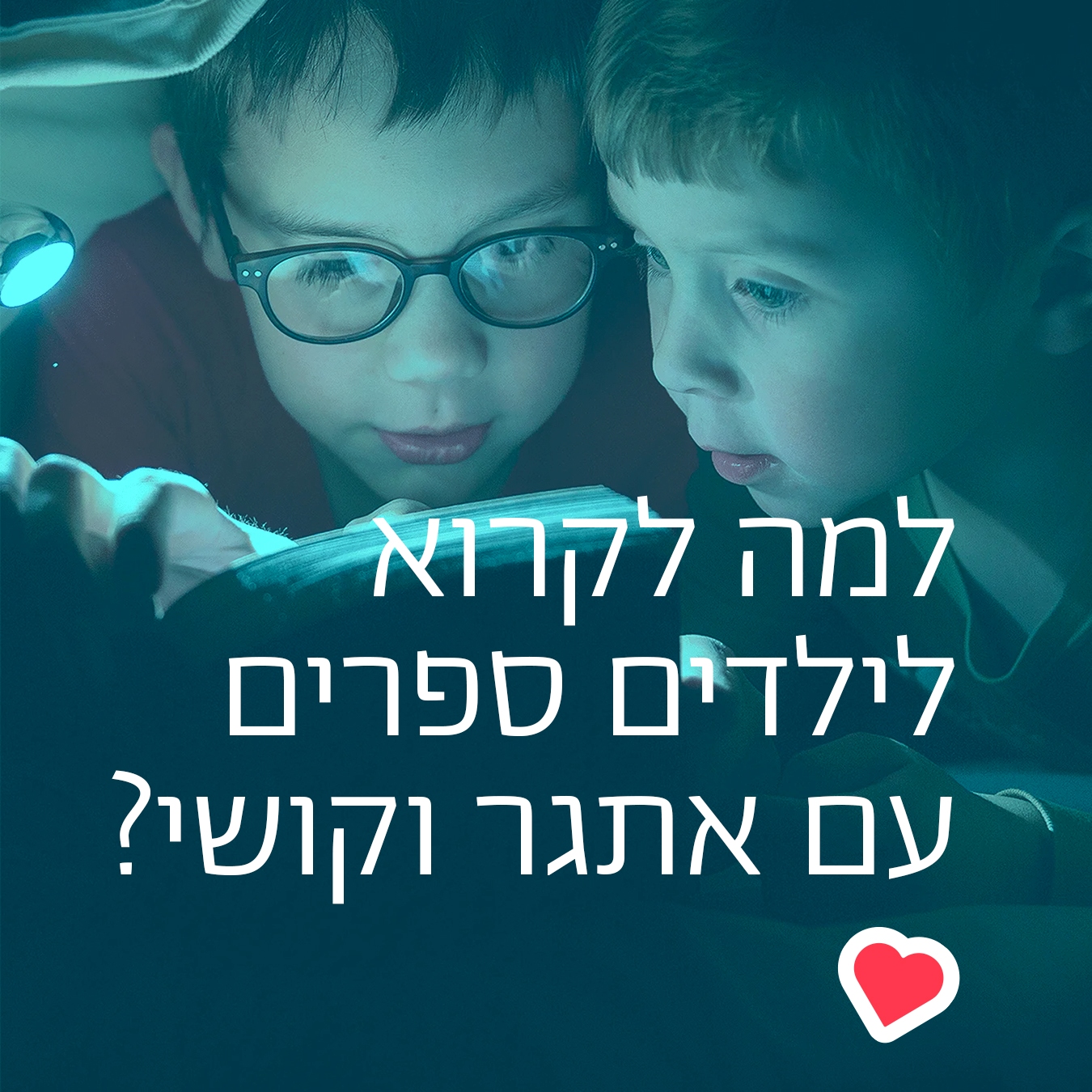
Suggested Family Activities
- It all began with a misunderstanding and hurt feelings, and then “Now you’ll see what’s going to happen!” After reading the story together you may discuss intentions and misunderstandings among friends, and share experiences with one another.
- Like Kramer the cat, we all feel big at times and small at other times. You can ask your children when they feel big and when they feel small, and talk about the advantages and disadvantages of each.
- “Scratches, bites, jumps and somersaults” – that’s how the author Meir Shalev describes cat games. You can flip through the book, select one of the animals and act out that animal’s movements.
- Kramer is very fearful of the large animals he meets in the forest. This can be an opportunity to discuss with your children caution and safety rules, fears, and ways to overcome fear.
- Kramer’s friends teach him an important lesson in friendship: A good friend is one who knows how to forgive and to apologize. You can look for the illustration where Kramer’s friends meet him in the forest, and note the expressions on their faces.
- Yossi Abulafia’s rich illustrations depict an array of animals – some domestic, others wild. You can look at the illustrations with your child and see how many of the animals you recognize. Does your child know all the animals’ names? Which of them can be found near your house? You can go for a hike. Which animals, large and small, do you meet on the way?
- You can act out the story using stuffed animals and toys. Allow your children to select the dolls to represent Kramer, his friends from the garden and the forest animals. The animals can be happy, be afraid, play together and quarrel – and, in the end, make amends and apologize.
- After reading the book together you can look at the picture of Kramer sleeping in his bed, choose a doll or stuffed animal and guide it to sleep by reading a “Sifriyat Pijama”
bedtime story.
Family Activities:
- If you carefully follow the text and illustrations of the story, you will surely note the different paths taken by the words and the pictures. Read the story again with your child. Each time you arrive at the sentence “Meanwhile, Hannah Banana rushed on her way…” ask your children to describe what they see in the picture. Is Hannah Banana really rushing? What does she do and whom does she meet along the way to Granny’s house?
- Did you notice the cat who accompanies Hannah Banana on her way to Granny’s house? You can ask your child to point out the cat on each page, and ask them how they think Granny will greet him when he arrives at her house.
- You can play the finger game “One Little Piggy” with your child. According to the story, who “had none” at the end of the rhyme?
- Hannah Banana’s Granny Cooked Porridge is actually two stories that happen at the same time. You can act out the stories with your child. First ask your child to be Hannah Banana on her way to grandmother’s house, while you pretend to be Granny. Then you can change roles. If other family members or friends are with you, they can be included in the skit as well and take on the roles of the neighbors.
- “To each his own”: At the end of the story we discover that Hannah Banana doesn’t even like porridge! You can ask your children if they believe this, and discuss which foods they like in particular and what they don’t really like.
- You can explain to your children that “Hannah Banana” is a nickname. Do your children have a nickname or a special name that only some people use when addressing them? If so, do they like their nickname?
Here is a simple recipe for delicious, sweet porridge:
Ingredients: 1 cup water, 2 cups milk, 3-4 tablespoons semolina, 3 tablespoons sugar, cinnamon, butter
Preparation: Cook the water, milk, semolina and sugar over a low flame, stirring constantly. Bring to a boil. The porridge is ready when the mixture is boiling and the semolina is cooked. Sprinkle with cinnamon and add a dab of butter. Bon Appetite!
Suggested Family Activities
- Do your children have a favorite doll or stuffed animal? After reading together the story about Maya and her kangaroo, you can discuss the special feelings we have toward objects, toys or stuffed
- You can take a picture of your children holding their stuffed animal, print out the photograph and decorate a frame for it. The framed photograph will serve as a memento in future years and will remind your children of the special relationship they had with the doll when they were
- The illustrations that accompany the story hint at changes in the blue kangaroo’s feelings, as more and more stuffed animals join him in Maya’s bed. You can flip through the pictures with your child and ask them to describe how they think the kangaroo feels on each
- Each night before going to sleep Maya recites “I love you, Blue Kangaroo”. Even when new dolls and toys are added, she ends her recitation with the same line. How do you get ready for bed? Do you have a special bedtime song, recitation or ceremony?
- You might want to discuss with your children why they think Maya agreed to share so many toys with her baby brother, but woulddn’t give away the blue kangaroo. Do your children have toys or dolls that are easier to share, and others they refuse to part with?
- Together with your children you can look for the pictures of Maya’s baby brother. You can tell the story through his eyes, and try to think how he feels as the story
- Maya and the blue kangaroo have a special relationship, which is not weakened as new dolls are added. Do you and your children have special relationships with family or friends? You can talk about this with your children, and reinforce their confidence in your feelings toward them.
- The gifts that Maya receives throughout the story are new and shiny, while the old kangaroo is old and worn. Sometimes we too prefer things that are new and shiny, and it can be hard to decide what to give up. The story can lead into a family discussion on loyalty, weighing considerations and making difficult
- The blue kangaroo feels crowded in Maya’s bed, but many times it is warm and cozy to lie together in bed! You can cuddle up and read books together in bed, and following this story, add more and more dolls and stuffed animals. You can also sing together fun songs like “Shovavim Bamita” by Datia Ben-Dor:
Family Activities:
- Ruthi proclaims that “there’s no other coat like this in the world!” You may ask your children what it is that makes Grandmother’s coat so special. Ask them to describe the coat in their own words. Don’t forget to note the soft material and the surprise-laden pockets! Do you have special clothes or objects that help you feel better? This is an opportunity to remind children of blankets, stuffed animals or a special cloth that help them feel calm in times of distress.
- Dressing up in costume is a wonderful way to foster one’s imagination. You can provide old clothes, hats and other props to encourage your children’s make-believe play. You may dress up in a big old coat and, adding a few other relevant props, can act out the story together.
- Many of us have childhood memories connected to touch. Do you too have a distant recollection of a special piece of clothing? You can share this childhood memory with your child and tell them about the special connection you had with the clothing, or with your grandparents, aunts or uncles.
- The “It’s Like” game: The author Miriam Roth compares the feel of Grandmother’s coat with the fur of a cat. You can make up a word game to play with your children: Place objects made from different materials – e.g., metal, plastic, cloth, etc. – into a large bag. One by one, each player removes an object from the bag and describes the object declaring “It’s soft like…”, “It’s cold like…”, “It’s coarse like…”
- Ask your child to show you the picture depicting Ruthi sick in bed. You can ask them how they feel when they’re sick. What helps us feel better? Do you have any special “family remedies” that were passed down from generation to generation? You can ask a grandparent, aunt or uncle what they recommend to overcome a sad mood or a mild cold.
-
If your child has a grandparent, aunt or adult friend who lives nearby, reading the story together could be a special treat for both of them, and lead to closer relations between the generations.
Miriam Roth
Miriam Roth (1910-2005) was a well-known children’s author and educator. In 1998 she won the UNICEF Smile Award for her book “A Tale of Five Balloons”, and in 2002 was awarded the prestigious Bialik award for literature. Roth’s books include Israeli children’s classics such as “Tiras Cham”, “Maaseh shel Hamisha Balonim”, and “Habayit shel Yael”.
Family activities:
Leaf through the pages with your child and look for instances of giving in the book. Who gives openly and who gives in secret? The title of the Hebrew version of the story is “The Hidden Circle”. Why do you think the author chose this title?
Draw your child’s attention to the items on each page that are filled in with color. Why do you think the illustrator chose to highlight these pictures?
The facial expressions depicted in the illustrations convey the characters’ emotions (e.g. – the face of the child watching the old man sleeping, or the face of the old man eating the muffin). How can we “read” others’ feelings by observing their facial expressions?
You can play the game “Identify the Feeling” with your child. Make an expression that conveys a certain emotion and let your child guess which emotion that is. Then change roles and try guessing the feelings your child is conveying.
Look at the illustration of the old man crumbling a bit of his muffin for the birds. In the Talmud the rabbinical sages say: “Even a poor man who himself survives on charity should give charity” (Gittin, pg. 7b). What is the logic of this commandment?
“A Circle of Friends” is a story about everyday actions that are familiar to all of us. In the book of Deuteronomy (chapter 30, verses 10-14) it is written: “This mitzvah… is not in the heavens… or across the ocean… Rather (it) is very, very close to you, upon your lips and in your heart to perform it”.
In other words, good deeds are within all of our reach. Even young children can perform mitzvot, or good deeds. Take the time to think together with your children about some of the good deeds they have done (and things they would like others to do for them), for example: sharing toys with a friend, helping their siblings or friends at school…
At the end of the book the boy receives a surprising gift that brings him joy. Draw a big, yellow sunflower together. On each petal draw a gift that appears in the story. In your opinion, does the cycle of giving end with the blossoming sunflower outside the boy’s window? Invent together with your child a continuation to the story and illustrate it.
מסיבת פיג'מות בגן
כדאי לערוך מסיבת פיג’מות בגן, יחד עם ההורים אחרי שעות הגן או עם הילדים בלבד בשעות הבוקר, ולקרוא יחד את הסיפור. אפשר לקשט את הגן עם תפאורה של כוכבים וירח ולהזמין את כולם להתכרבל יחד, ליהנות מהאיורים הרכים שמלווים את הסיפור ולעקוב אחר מסלול החיבוק.
חיבוקים
אילו סוגי חיבוקים מקבלת לוסי מבני המשפחה השונים? בקבוצות קטנות אפשר לשאול את הילדים אם גם הם אוהבים לתת ולקבל חיבוקים, ממי ומתי?
להזמין את הילדים לחשוב על דרכים שונות להביע רגשות
חיבוק הוא דרך ללא מילים להביע אהבה. אפשר להזמין את הילדים לחשוב על דרכים שונות להביע רגשות כשאוהבים (חיבוק, אמירה, ציור, פרח, מתנה…), ולהכין יחד הפתעה להורים בעקבות הסיפור – ביטוי בלתי צפוי של אהבה.
להציע לילדים והורים לצייר את מסלול הפעולות הקבועות לפני שהולכים לישון
מה עושים בני המשפחה של לוסי לקראת שעת השינה? כדאי להיזכר בפעולות של כל אחד מבני המשפחה בסיפור. האם הילדים יכולים לנחש מה עושה אבא של לוסי, ומדוע הוא מרים את הידיים באוויר? מה עושים התאומים כשלוסי ניגשת אליהם? האם משהו משתנה אחרי החיבוק? אפשר להציע לילדים והורים לצייר את מסלול הפעולות הקבועות לפני שהולכים לישון (למשל: צחצוח שיניים, סיפור, חיבוק ונשיקה).
חיית מחמד בבית
הכלבה אנני מתוארת כ”שובבה”. במה מתבטאת השובבות שלה בסיפור? אפשר להמציא דברים “שובבים” נוספים שהיא עושה. האם גם לילדי הגן יש חיית מחמד בבית? אפשר להזמין אותם להביא תמונות ולספר עליהם.
האם הבית של לוסי דומה לבתים של ילדי הגן?
כדאי להסתכל על העמוד שבו רודפת לוסי אחרי אנני. נסו לנחש ולדמיין מה יש בכל חדר. האם הבית של לוסי דומה לבתים של ילדי הגן? במה הוא דומה, במה הוא שונה? בהמשך אפשר לבקש מהילדים וההורים לצייר או לצלם תמונה של פְּנים הבית שלהם. מי ישן באיזה חדר? אילו צעצועים וחפצים משותפים לסיפור ולבית שלהם?
כדאי להתכרבל יחד
כדאי להתכרבל יחד, ליהנות מהאיורים הרכים שמלווים את הסיפור ולעקוב אחר מסלול החיבוק. אילו סוגי חיבוקים מקבלת לוסי מבני המשפחה השונים? אפשר לשאול את ילדכם: האם גם החיבוקים במשפחה שלכם שונים זה מזה? האם כולם נעימים? האם ילדכם אוהב לתת ולקבל חיבוקים?
חיבוק הוא דרך ללא מילים להביע אהבה
חיבוק הוא דרך ללא מילים להביע אהבה. אפשר לחשוב יחד על דרכים שונות להביע רגשות כשאוהבים (חיבוק, אמירה, ציור, פרח, מתנה…), ולהפתיע זה את זה בביטוי בלתי צפוי של אהבה.
מה עושים בני המשפחה של לוסי לקראת שעת השינה?
מה עושים בני המשפחה של לוסי לקראת שעת השינה? כדאי להיזכר בפעולות של כל אחד מבני המשפחה בסיפור. האם ילדיכם יכולים לנחש מה עושה אבא של לוסי, ומדוע הוא מרים את הידיים באוויר? מה עושים התאומים כשלוסי ניגשת אליהם? האם משהו משתנה אחרי החיבוק?
שובבים
האם לפני שראיתם את האיור של אנני ניחשתם מי היא? אנני מתוארת כ”שובבה”. במה מתבטאת השובבות שלה בסיפור? אפשר להמציא דברים “שובבים” נוספים שהיא עושה. האם גם לכם יש חיית מחמד? האם גם היא אוהבת חיבוקים? האם לפעמים גם היא מתנהגת בשובבות?
לנחש ולדמיין מה יש בכל חדר
כדאי להסתכל על העמוד שבו רודפת לוסי אחרי אנני. נסו לנחש ולדמיין מה יש בכל חדר. בהמשך אפשר לצייר או לצלם תמונה של פְּנים הבית שלכם. מי ישן באיזה חדר? אילו צעצועים וחפצים משותפים לסיפור ולבית שלכם?
לשוחח על המשפחה שלכם
בתמונה האחרונה בספר רואים את הילדים ואת אנני ישנים, ואת אמא ואבא של לוסי יושבים יחד על הספה עם התינוקת. אפשר לשוחח על המשפחה שלכם. מי הולך לישון קודם? במה עסוקים המבוגרים אחרי שהילדים הולכים לישון?
האם למשפחה שלכם יש פעולות קבועות לפני שהולכים לישון
האם למשפחה שלכם יש פעולות קבועות לפני שהולכים לישון (למשל: צחצוח שיניים, סיפור, חיבוק ונשיקה)? האם תמיד הולכים לישון בלי ויכוחים? בעקבות הסיפור אפשר לשוחח על שעת ההשכבה אצלכם, ואם רוצים – ניתן ליזום מנהג חדש למעבר בין יום ללילה.
Family Activities
- Spend some time together examining Gad Shkedi’s illustrations. Notice the many different animals featured in the illustrations, alongside the trees. Compare the various trees: how many trees are mentioned in the story? Which are fruit trees, and which don’t bear any fruit? Did you notice that the end of the story is toldusing only illustrations? Tell the story in your own words.
- Do you perhaps have a favorite tree in your own yard, or near your home? Does your favorite tree have a “story”? You could take your children on a “tree tour” in your neighborhood. Can you spot any of the trees that appear in the story? Can you identify other types of trees? Compare the various trees you find: what is the benefit of each kind? Which trees are decorative, and which bear fruit? How do we know if a tree is young or old? You might pack this book, a blanket, and a light picnic, and read the story together in some lovely spot outdoors, under a tree. Then (if local environmental regulations allow) you could gather fallen pine-cones, bits of tree bark, leaves, etc., and use them to create a work of art when you get back home.
- In the story, Hannah wants to climb a tree “now,” and her father wants to rest “now.” For many families, this situation is all too familiar. How do you respond when there are conflicting desires in your family? You might discuss things we want immediately vs. things for which we must wait, along with the need to consider others’ wishes and to be patient.
- Trees provide us with an abundance of good things. You could go from room to room in your home and try to identify everything that comes from trees, for example: furniture made out of varying kinds of wood, olive oil that we use in cooking, maple syrup from the sap of the maple tree, wine and raisins harvested from grape vines, and so on.
- Do you know any other stories about trees (for example: the traditional tale of “Honi the Circle-Maker and the Carob Tree,” featured below; the poem “The Tree Man” by Shlomit Cohen-Assif; “Mr. Mini and the Apple Tree” by Orit Raz, or “What Do We Need For…” by Gianni Rodari)? Look for these books at home or at the library, and read them together.
- In Jewish tradition, it is customary to plant a tree to mark important milestones in one’s life. How does your family celebrate or remember important occasions and people? Does your family plant trees to mark a birth and/or other major occasions in your lives?
- Various Jewish source texts compare humans to trees. Talk with your children about your family’s roots, about the” seeds” you are planting for the future, about the different branches of your family, and so on. You might also draw your own family tree, from the grandparents’ generation down to your children’s generation.
- Just like trees, we humans also need a firm foundation in order to grow and flourish. After reading the story, you might have a conversation with your children about the things that matter most to you —your values, deeds, traditions, and beliefs—that strengthen the “foundation” of your family’s tree and support your collective growth.
Have fun reading and discussing this book!
A discussion on imagining together
Children love to play “make believe”. They enjoy pretending that they are grown up: “Driving” a car, making mud “cakes”, or playing with an imaginary friend. You can play this game with your child using a prop, such as a doll, pot, or toy car, and ask: Where are we going? What are we cooking together? What is the doll saying?

Family Activities:
- You might ask your children to flip through the pages and “read” the pictures to you in their own words. See if together you can discover all the things the illustrator added to the written text. Did you or your children find anything funny? Were there objects that your children did not recognize? You can ask them to point out the pictures that show the ant and the cricket helping one another. Then you can draw your own picture of the ant and the cricket, as you imagine them. Does your ant wear eyeglasses too?
- Go to the ant… consider her ways and be wise (Proverbs 6,6): Discuss with your children the characteristics of the ant and the cricket in the story. The ant is industrious and plans ahead, while the cricket sings and dances. After reading the story, you can talk about the different traits and tendencies of everyone in your family and note the distinct contribution of each member.
- Who are your neighbors? Do you help one another? After reading the story, you might think of a small act of kindness that you and your children can do for one of your neighbors. How does it make you feel? Have you, like the ant, ever felt that there are times when “it’s even better to give than to receive”?
- Are you acquainted with Aesop’s fable about the ant and the grasshopper? In that version, the ant refuses the grasshopper’s request for food. You can share the fable with your children and compare it with this story. Do you like one version more than the other? Why?
- “What goes around, comes around”: Sometimes children feel that family life is not fair, when they are asked to help out and their siblings are not. You can discuss how the ant responded to the cricket’s repeated requests for ingredients, and ask them how they think she felt after working hard and saving up all week. It is important to point out that in the end, the ant benefited by helping the cricket. This is often the case in families – there are many opportunities to help others and to be helped, each one according to his or her ability and to the circumstances.
- You too can bake a cake for Shabbat! It is fun to work together in the kitchen, and even more fun to share what you made with neighbors and family! You might want to invite some neighbors or friends over to eat your cake and sing songs with you, just like the ant and the cricket in the story.

Recipe for Orange Cake:
Ingredients:
150 grams butter or margarine
1 cup sugar
4 eggs, lightly beaten
1 tsp vanilla
Grated rind of two oranges
1 cup squeezed orange juice
2 1/2 cups flour
3 tsp baking powder
Powdered sugar for decoration
- Beat together the butter and sugar until smooth and fluffy.
- Add the beaten eggs, vanilla and orange rind and continue mixing.
- Add, alternating liquids with solids, the orange juice, flour and baking powder until smooth.
- Pour the batter into a lightly-greased cake pan and bake at low-medium heat (170 degrees) for 35-45 minutes.
- When completely cool, dust the cake with powdered sugar.
Bon appetite and shabbat shalom!
The Game of Thanks
The Game of Thanks: One player begins a sentence with the words, “I want to say thank you for…”, and tells about something good in his or her life. It may be something that has happened to them, or anything – small or big – that he or she has seen, heard, tasted or smelt. The next player completes the sentence as he or she wishes, and so on. The whole family can play this game at dinner or at bed-time.
Gratitude can be expressed through songs!
Gratitude can be expressed through songs! Sing together songs of thanks that you know, for example: Toda (by Uzi Hitman), Elohim Natan Lecha Bematana (composed by Eitan Masori), Hallujah (preformed by Gali Atari.
Many people help us every day
Many people help us every day: The guard at the entrance to the shopping mall, the cashier at the supermarket, housekeepers, etc. Closer to the children’s lives there are neighbors who play with us in the park, our relatives, kindergarten teachers, and more. Sometimes just saying “thank you” is enough, and sometimes people would enjoy receiving a letter or a drawing. Think of a person you would like to thank. Use the letter or a drawing to describe the good times you have had with this person, times when they helped you, or simply the happiness that they bring to your life.
How does one thank God?
How does one thank God? This question bothers Benny. He chooses to thank God in the synagogue, because he believes it is there that most people talk with God. Like Benny, many young children ask big questions: Does God exist? Where does he live? Will he hear me if I speak to him? Discuss your beliefs with your child.
All’s well that ends well!
All’s well that ends well! At the end of the story, Benny is disappointed to discover that it was the poor man, and not God, who ate the bagels. But Grandfather explains that thanks to Benny, “the world has become a better place… and what better thanks than that can God receive?” Discuss with your child the story’s surprising ending and Grandfather’s words. How can we understand the connection between Benny’s good deed and thanking God? Together with your child, try to remember a time when they did a good deed and helped someone. Link this incident to the story, and think about how your child’s good deed also contributed to making the world a better place.
Bagel-shaped Buns Recipe
Bake “if only we had…” bagel buns together.
This is how you play: “Let’s make bagels! If only we had flour… we would have wonderful bagels”. The child brings the flour and you thank him or her happily, then continue by saying: “If only we had sugar…” and so on. Accept every ingredient (flour, sugar, oil, etc.) into your bowl with happiness and thanks. Bake the buns and give them to people you would like to thank or please.
Ingredients:
2 cups of flour 2 spoons of sugar
1 teaspoon of quick-rising yeast 1 teaspoon of salt
1 cup of water 1 ½ spoons of oil
Instructions:
Mix all the ingredients together until a ball of soft dough is formed. If necessary, add a bit of flour. Set the dough aside and let it rise. Once the dough has doubled in volume, divide it into smaller portions, and form bagel-shaped buns. Brush the buns with an egg, and scatter sesame seeds on top. Let the buns rise again. Bake at 190°c degrees, until golden.
Bon Appétit!
Activities to do at home
- At the start of the story, Grandpa is sad and lonely, but the guests who come to visit him cheer him up. Are your children always happy when their friends visit? Discuss what gives them pleasure and what might be hard for them whenthey entertain guests.
- “A Person’s giving eases his way” – Grandpa’s circle of happiness grows wider and wider as each guest arrives. Even the illustrations in this book bring this point home. Together with your child, you can leaf through the pages of the book and notice how the small circle grows—and how, at the end of the story, it shrinks back down to its original size.
- Turn the story into a play, using toys and dolls. Together with your children, decide which doll will play Grandpa and which dolls will play the guests who come to visit. Tell the story in your own words. You can also continue the story yourselves, imagining what happens after the guests say good-bye to Grandpa and return home.
- Grandpa enjoys a visit from his grandchildren: “For no particular reason, on a weekday, my granddaughter comes over to eat.” Talk with your children about who visits your family, and what you like to do together with them. Do you have set times for such visits, or special customs for entertainingguests? Maybe there’s a special dish you serve to your guests, fancy plates and glasses you use, or a designated room you use to entertain your visitors?
- Many children love to help preparefor entertaining guests. You can work together on hand-made invitations, fold napkins for the table, or draw a welcome sign for the front door.
- Hospitality in Abraham’s tent: After reading the book, you could tell your children the biblical story of Abraham and then suggest they make their own “tent” by spreading a blanket over some chairs. They can sit in the tent and receive their friends as their guests—playing together and serving them a snack they’ve prepared themselves.
- Just like Grandpa in the story, you too can make soup and serve it to your guests. Maybe your children will also want to invite some of their friends who haven’t visited your home before?

Grandpa’s Soup Recipe:
Ingredients:
2 large onions, chopped
3-4 cloves garlic, mashed
4 carrots
3 squash (zucchini or marrow)
Vegetable oil
3 potatoes
2 cups cubed pumpkin
1 bunch of celery
1 bunch of parsley or coriander
Salt, pepper, turmeric
Directions:
- Saute the onion and garlic in a pot with a littleoil on medium low heat until golden.
- Cut the squash, potatoes, carrots, and pumpkin into cubes and add to the pot. Stir.
- Chop the parsley (or coriander) and the celery and add them to the pot. Stir.
- Add seasonings and stir.Continue stirring until all the vegetables have been cooked and softened a bit.
- Add boiling water – twice the volume of the vegetables – and cook till the vegetables are completely soft.
- Taste, adjust seasonings, and serve.
Bon Appetit – Bete’avon!
מבשלים פנקייקים עם רות סירקיס!
צפו במתכון המיוחד לפסח של רות סירקיס לפנקייקים! מתאים לכל ימי השנה!
Family Activities
The story of the three butterflies was first published in 1938, and has since accompanied many generations of Israeli children. Do you know of an earlier version of the book containing other illustrations? You may want to take a look together at Orit Bergman’s illustrations. Have you noticed that the butterflies’ wings are multicolored? You may like to consider why the illustrator chose to paint the butterflies this way.
The three butterflies look out for one another and refuse to be separated. You may want to discuss friendship and mutual obligation together, be it between friends or family members. Perhaps you’d like to share stories about your friends and your child’s, and the things you enjoy doing together. Following the story, you might want to ask your child if they or their friend had ever been prevented from joining in a game, how that made them feel and what they did in response.
The flowers are only willing to allow those who are of a similar color in. You may want to compare the illustrations of the flowers to those of the butterflies. What similarities and differences can you find between them? You may like to ask your child what they think of the flowers’ behavior.
You may also want to act the story out as a family by dressing up in the colors of the flowers and butterflies. You could also create a puppet theater, with characters for the butterflies and flowers, using popsicle sticks and cellophane.
You might enjoy going outside and looking for butterflies and flowers! Just like in the story, flowers and butterflies in nature differ from one another, each having their own particular color and shape. Have you come across a tulip or lily? How many types of butterflies have you found, and what color were they? Do you happen to know the name of any butterfly? Perhaps you’d like to mimic the way butterflies move, and invent the Butterfly Dance together.
Levin Kipnis wrote hundreds of well-loved children’s poems and stories that form an integral part of Israeli culture. You may wish to look for them at home, in kindergarten, or at the library, and read them together.
Levin Kipnis
Levin Kipnis was one of Hebrew children’s literature’s founding fathers. He wrote and translated many literary pieces for children, and also set up and managed the first children’s theater in Israel. In addition, Kipnis edited numerous journals, anthologies and text books.
He was born in the Ukraine in 1894 and immigrated to what would later become the State of Israel in 1913. He felt there were not enough holiday songs and stories in Hebrew suitable for young children, and proceeded to collaborate with generations of kindergarten teachers in Israel, compiling preschool curricula and authoring hundreds of children’s stories and poems. Among his songs for the Jewish Holidays are: Svivon Sov Sov Sov (“Spin Spin Spin, Dreidel”) for Hanukkah, Ani Purim (“I am Purim”) for Purim, and Saleinu Al Ktefeinu (“Our Baskets are upon our Shoulders”) for Shavuot. His literary pieces contain messages of helping and consideration of others, such as in the famous Eliezer Vehagezer (“Eliezer and the Carrot”), Hamitriya Hagdola shel Abba (“Daddy’s Big Umbrella”), and… Shloshet Haparparim (“The Three Butterflies”).
Levin Kipnis was a particularly prolific author, and won many awards, including the Israel Prize in 1978, and the Hans Christian Andersen Award in 1988. He passed away in 1990.
ראיון עם המאייר אסף בן ארוש על תהליך יצירת הספר
ראיון עם המאייר אסף בן ארוש על תהליך יצירת הספר
Oded Burla [1915–2009]
Israeli author, poet, painter and illustrator, Oded Burla was born in Jerusalem to a Sephardi family who lived in Eretz Israel for more than 13 generations. His father, Yehuda Burla, wrote adult books and won many awards. Oded Burla attended the agricultural school at Mikveh Israel, followed by the Bezalel Art Academy. His first book was published when he was 45, and he since wrote and illustrated more than 70 children’s books, which, he claimed, contained 346 different animals! Burla was named the father of nonsense in Hebrew Children’s Literature. His humorous books are sophisticated and filled with surprising and amusing wordplay. Oded Burla has won awards for his work: the Zeev Award, ACUM Award and Bialik Award.
Family Activities
- How do we portray a melody? You may want to notice how illustrator Assaf Benharroch chose to draw the melody, and how it changes throughout the story. Perhaps you’d like to suggest that your child draw your melody together with you.
- Do you sing lullabies at home to your children? Do you remember a lullaby your parents sang to you when you were young? Share a lullaby you know with your child. You may want to renew this beautiful family custom, and sing together before bed.
- Do you know melodies that have no words? You may want to sing some with your child. To complete the experience, you may enjoy dancing together, and even making up your own words to this tune.
- Oded Burla wrote and illustrated many children’s books, among them A Smile in every Corner and Oded Burla’s Big Book. You may want to look for his works in the library or online, and enjoy reading them together.
- The plot of the story is straightforward and can easily be turned into a play. You may like to act it out with your child. Your child can play the part of the melody, and other members of the household can be the different characters in the book. You may want to add some more dialog to the story, in which the melody explains to the various creatures why they should sing.
- The mountain in the story has no need for the melody because “mountains don’t sing”; whereas the trees tell the melody: “We have our own songs”. According to Rabbi Nachman of Breslow, each blade of grass has its own song. By this he means that every creature in the world has a voice and melody of their own. Naomi Shemer wrote a beautiful tune to Rabbi Nachman of Breslow’s Song of the Grass. You may enjoy listening to it and singing along.
Family Activities
You may want to look at the illustrations that accompany the story together, and notice the many details that are not specified in the text. What do you think of Bonny’s ideas and Pop’s inventions?
You could invent, plan and build your own “magnificent tree” using building blocks or Lego, or various objects around the house or yard. Are “all sorts of things jutting out” of your work too? Send us a picture of your magnificent tree, we’d be happy to post it on our website.
Bonny and Pop realized that birds were attracted to trees and looked for an idea that would encourage the birds to visit them. The story may inspire you to make a bird feeder together: rinse a large, empty bottle thoroughly, cut a large opening out on one end of it, hang it in the balcony or on a nearby tree, and fill it up with pieces of cut fruit, seeds and breadcrumbs. Follow the birds, watching quietly from afar as they approach the bird feeder and eat from it.
“Bonny and Pop always had lots of ideas…” Little children often have big ideas and original thoughts. You may want to tell your child about some important inventors, in Israel and around the world, and remind them that they too were once children, brimming with ideas. Together you could think of a situation in your own lives that you’d like to change, and make suggestions. Are your ideas implementable?
“Just as their faces are not identical to one another, so their opinions are not identical to one another” (according to the Midrash on the Book of Numbers, chapter 21): family members and friends do not always think or act the same way, and sometimes differences in style and character can bother us. You may want to remind each other of each of your family members’ special talent and inclinations, and make note of the unique contribution each one makes.
Does your child have a special connection with a grandparent, aunt or uncle, like Bonny does? You may want to sit your child down with a beloved family member and invite them to engage in an activity that requires cooperation, such as putting together a jigsaw puzzle, or even baking a cake. How well did they work together? Did they have similar ideas or different ones? Remember, none of this matters, as long as we have fun spending time together!
Classroom discussion and activity ideas:
- “Strange, what is happening here?” the beggar asks. You might want to stop the reading mid-way and allow the children to express their thoughts and opinions: What is happening in the town? Why does no one invite the beggar into their home? The children can take turns pretending to knock on the doors of the townspeople and ask them, “How are you? Why aren’t you opening the door to the beggar?” The children can invent different responses that the townspeople may give.
- Young children should not open the door to a beggar, or to any stranger. In today’s world, we need to warn children against opening the door to strangers. What is the best way to help others? Discuss the ways in which we can help others without inviting them into our homes. Think together how and whom children can help.
- After eating the soup, the townspeople sing, laugh, and dance. They even invite the beggar to sleep in their homes. Re-read the description of the townspeople together. What did the townspeople gain from their contribution to the soup that made them so happy? Try to think of a case when something new and better is created as a result of every person giving up something.
- Draw or paint a community center (real or imaginary) on cardboard. Cut the picture to create a jigsaw puzzle, which can then be put together. Show the children how each piece of the puzzle helps complete the picture.
- Prepare Bone Button Borscht with friends (but without the buttons!): You might want to divide the kindergarten children into groups of three or four, each of which would prepare soup at the home of a different child. Ask each group to write and illustrate their soup’s recipe, and compile a classroom soup cookbook.
- Prepare soup in the classroom: Ask each child to bring in a vegetable or a spice, to ensure that everyone takes part in contributing to the group effort of preparing the soup. The recipe of the soup prepared in kindergarten can be the first one to appear in the kindergarten’s cookbook described in the previous activity suggestion!
- In order to bring the abstract concept of a “community” closer to the children, start with the joys of being a part of our kindergarten community:Who is a part of it? What do we like to do together? What do we do together that we can’t do alone? What special or added value do we achieve by being a community as opposed to each person being alone in his or her home? What other thoughts do you have on the topic?
- One idea for solidifying the feeling of community is to sing with the children the song “HinehMah Tov U’MahNa’im, ShevetAchim Gam Yachad” (How goodly and pleasant it is for brothers/friends to sit together).
- Community institutions: Suggest to the parents that they take a walk with their children in the neighborhood in order to take specific note of the community institutions in it (community center, library, school, synagogue, etc.), and afterwards to draw these buildings. Ask the children to bring their drawings to the kindergarten. By hanging the children’s pictures on the wall, you can create a model of the actual community and its institutions, or even an imaginary community. Or, you may want to build a model of such a community by using blocks, Lego or some other construction material.
- What can five buttons achieve? Divide the children into two groups. One group draws a collective picture of the darkened town (houses, inhabitants) as it was when the beggar arrived in the beginning of the story, while the other group draws pictures of the town after the people ate the soup together. You can hang the two pictures on a bulletin board on the wall in order to emphasize the change.
- “Receive everyone with a kindly countenance” [Haveimikabel et kul ha-adamb’severpanimyafot(Avot, 1)]: At an in-service-training workshop, “Tali” kindergarten teachers discussed the difference between “Bone Button Borscht”, and Jewish tales that deal with the importance of receiving people with a kindly countenance and the mitzvot of welcoming guests (hachnasatorchim). The behavior of the townspeople in Bone Button Borscht demonstrates the exact opposite of welcoming guests and of “receiving everyone with a kindly countenance”.
Receiving guests is one of the most important and beloved mitzvot of the Jewish tradition. In the Book of Genesis (ch. 18), it is told how Abraham welcomes three strangers, feeds them, and invites them to stay as guests in his tent. Abraham’s behavior teaches us how we should behave in our homes.
- During the holiday of Sukkot it is customary to invite guests (“Ushpezin”), and for people to visit one another in their sukkot. And each year on Passover we invite guests to a meal and read: “Koldichfin yeti v’yachol, kolditzrich yeti v’yifsach” (Every hungry person may come and eat, every one who is in need may come and observe). We invite others to come and eat with us, in order that no one remains outside, hungry and alone on the Seder night.
- You can share with the children the tale relating that in the tents of Abraham, our forefather, the first Jew, there were four openings. Each opening opened out to a different direction in order that every guest, no matter where he came from, would feel comfortable to enter.
- How do we host a friend? What is the duty of the host or hostess, and what is the duty of the guest? Accepting guests is part of the everyday life of children, but sometimes it’s difficult for them to host because they don’t know what to do with the guest, or because it is difficult for them to share their possessions. You can take such an opportunity for discussing the ways in which to make the guest feel comfortable.
- The mitzvah of welcoming guests is most meaningful when inviting one who is needy. You can carry out a “campaign” in the kindergarten in which every child invites a new friend, someone who has not yet visited him or her at their home. This is an excellent opportunity for creating new connections between children, and to help children who have difficulties with social skills.
- “Bone Button Borscht” is distributed in the month of Adar. Purim is approaching, and with it, mitzvot that are directly connected to community action and to helping the needy – mishloachmanot and gifts for the needy. As a class you can prepare mishloachmanot for all members who serve the community (security guards, the kindergarten staff that works in the after-school/afternoon program, etc.). You might also organize gifts for the needy. Your classroom community can collect and organize food, games or any other useful items that come to your mind that could gladden the hearts of those who in need.

Activities to Do Together at Home:
- Notice the things Matan and Noah like to do together before they quarrel. Ask your children what they like to do with their friends, and when do they help one another?
- Examine Matan’s and Noah’s facial expressions in the illustrations. When do they look happy? When do they look sad, or angry?
- If Matan and Noah were friends of yours, what would you suggest that they do to prevent the quarrel from occurring, or to make up afterwards?
- Ask your children if anyone has ever helped them to make up with a friend after a quarrel. How would you want to be helped to make up after a quarrel? You could create a little book –write your own story and illustrate it together.
- You could brainstorm together and come up with an ad or slogan that promotes peace between people. Create a poster featuring your ad or slogan and hang it up in your home.
- The bridge that Elijah the carpenter built was made of boards and nails. Ask your children what bridges they know, and what are they made of? You could also build a bridge out of popsicle sticks or Lego blocks. After you finish building the bridge, you could use it to stage a play about the story, using dolls or Lego figures.
- Do you know the song, “The whole world is one narrow bridge”? If you do, you can sing it together with your children.
Look at the illustrations together
You may like to look at the illustrations together, where many details appear that are not mentioned in the story. What do the siblings like to do while their father works in the field? What are the animals in the story doing? Perhaps you’d like to find the illustration where the father tells them he does not remember where the treasure is buried. What do the children imagine finding there? You may want to ask your own child what they regard as a “treasure” and what they might have hoped to find in the field, had they been promised a treasure.
!Your child can work the land
Your child can work the land, even at home! Together you may enjoy making seeds sprout, or planting bulbs, avocado pits or potatoes, whether in a flowerpot or in the ground. Water it, look after it, follow its growth. It requires effort and cooperation, just like in the story – maybe in the end you’ll grow a “treasure” too?
!A treasure at home
A treasure at home! You may want to suggest that your child make their own treasure chest. You could hide the treasure in a room in the house and play “treasure hunt”. Draw illustrated notes with clues on them and help your child get closer to the hidden treasure from one note to the next.
Talk about the different roles in your family
The farmer’s three children work together, and each one makes suggestions and comes up with good ideas. Perhaps you’d like to talk about the different roles in your family: what is each family member good at?
"He who works his land shall have plenty of bread"
“He who works his land shall have plenty of bread” (Proverbs 28:19): In the field the brothers plough, sow, reap… in Hebrew there are many words that describe farming! You may like to look at the illustrations, and identify together which action is being performed in each one and compare the tools, then and now.
The story depicts the changing seasons
The story depicts the changing seasons: Does your child know which season is most suitable for sowing and harvesting? Which is yours and your child’s favorite season, and why? Perhaps you’d like to suggest that your child draw a picture depicting themselves in their favorite season.
Family Activities:
- Perhaps you would enjoy looking at the illustrations and finding clues for the holidays mentioned in the story: Sukkot, Hanukkah and Purim. You could discuss the holidays in your family together: what do you especially like about each holiday? With whom do you spend them? Does your child have a favorite holiday?
- When you read the story for the first time, did you guess where Grandpa was taking little Hannah? Does your child also share a special relationship with an older member of the family? You may want to ask the elderly members of your family how they used to celebrate Passover. Which special customs or dishes did they have at home? Did they also sing Ma Nishtana as children on Seder Night?
- How do you celebrate Passover in your family? Does your child also have a special role to play on Seder Night? You may want to create a holiday scrapbook together, and suggest that your child draw the family celebrating together on Seder night and throughout the holiday.
- Does your child know any Passover songs, traditional or new? Can they sing Ma Nishtana? You may enjoy singing Passover songs together.
- On Seder Night, Hannah realizes that being the littlest Levine is the best. You may also want to discuss issues of big and small in your family. Ask your child what they would have liked to do on their own, and think of tasks in preparation for Passover that your child can do themselves. Children are happy and love to help – it would be wonderful if you could give them the opportunity to feel all grown-up!
Family Activities
- Perhaps you could look for toys and stuffed animals at home, and use them to act the story out. You may want to keep the toys in a basket, and let your child continue acting the story out themselves.
- You might enjoy looking through the illustrations in the book together. You could take a look at the toy parade on its way to visit Rama. How are they supporting one another?
- You may want to ask your child who they think could use some medical attention aside from Rama. Shula the Doll is injured, her leg fell off a year ago… You may enjoy setting up a toy hospital: take all your “injured” dolls out of the closet, as well as the plastic toys that have lost their leg, or the soldiers who took a hit during playtime, and try to fix or “treat” them.
- Do you know anyone around you (a friend, neighbor, or relative) who is not well? You may want to think of ways ti make them happy together with your child, such as making them a get-well card, calling them up, sending them something yummy, or paying them a proper visit.
- You may want to look at the illustration depicting Rama lying in her bed, unwell but smiling following her toys’ visit. Do you think people who are sick feel better after their friends’ had been to visit them? You may like to tell your child about a visit you had made to a sick person, or one you received when you were unwell.
- Try thinking together – what happened then? What did Rama do once she was well again? What did she tell her toys? How did they welcome her back when she returned to play with them? You could use your own toys to act out the next scenes in the story.
Yemima Avidar-Tchernovitz (1909–1995)
Yemima Avidar-Tchernovitz (1909–1995)
Yemima Avidar-Tchernovitz was born in Lithuania, and immigrated to the Land of Israel when she was 12. She began writing when she was in her teens, and told her early stories to the children in the Tel Aviv kindergartens in which she taught. Her stories were first published in the weekly children’s magazine Davar Liyladim, and she also wrote radio skits, in which she also acted on the “youth corner” broadcasts. Generations of children and youth in Israel grew up reading the dozens of well-loved books she authored, among which are Muki is Angry with Mom, Stories for Nivi, Two Friends on the Road, Eight in Pursuit of One, and One of Ours. Yemima Avidar-Tchernovitz is a Zeev Prize laureate and was also awarded the Israel Prize for Children’s Literature.
Family Activities
- “Daddy says ‘Brush your teeth’ / Daddy says ‘Clean out your ears’…”
You may want to play charades and, rather than read the dialogue in the story, act it out without using any words. Can your children guess what the little boy’s daddy said?
- Perhaps you’d enjoy looking at the illustrations and discovering all the little boy’s stuffed animals and other toys. What sort of stuffed animals do you have? Do you also take them to bed with you at night? You may want to follow the illustrations and find out what happens to the toys when they lose the game (they go to sleep!)
- You can also play this game, often known as ‘Simon Says’: you each play the role of the king in turn and give others various instructions. If you begin by saying “The king says…”, the other players must follow your instruction; however, if the “king” orders you to do something without first saying “The king says…”, you do not follow the order. Did you get mixed up? You’re out of the game, and must wait until a new king assumes the throne.
- The little boy in the story pretends to be king and makes up new rules: in his kingdom you’re allowed to jump on beds, fly, be a giant, and ride wolves. You may want to use your imagination together, and think of things you’d like to change in your world. For instance, what would happen if we were to go to school at night and sleep in the daytime?
- The little boy in the story gets ready for bed having brushed his teeth, showered and kissed his father good-night. How does your child get ready for bed? Do you have a ritual, prayer or song that accompanies you as you transit between day and night?
- You may like to share memories from your own childhood with your child: did you share your bedroom with your siblings? Who tucked you into bed at night? Were you read bedtime stories or sung lullabies? Perhaps you went to bed with a doll or teddy-bear. Do you happen to remember a funny story from your past that is related to bedtime?
Family Activities
- Uncle Aaron and the tractor work the land together: they pull, mow, plow, harrow, fertilize, reap, and tug. There are so many words by which to describe working in the field! You may want to look at the book’s illustrations together, and try to identify which type of work is being carried out in each one.
- You may like to look at Uncle Aaron’s face. Does he seem to be enjoying his work? What do you think he finds enjoyable? Had Uncle Aaron invited you to join him, which type of work would you have wanted to perform with him, and why?
- You could ask Grandpa, Grandma or an older friend to do something with your child that requires life experience and knowledge. For instance: cooking, creating or building something together, learning a song or a few words in a foreign language, or planting some flowers.
- The red tractor went through several “phases”: it worked the soil; served as a children’s toy; and finally drove the kids to fieldtrips. Do you have an item or object that is no longer useful? You may enjoy finding a new use for it together (a cracked bowl can serve as a flowerpot, old clothes can form a costume, etc.).
- Perhaps you would like to build a tractor together using materials you have at home: cardboard tubes, bottle caps, old boxes, etc. You could paint it the most suitable color for a tractor, and get to work!
Enjoy reading and discussing the book together!
Family Activities
- This story is a fairytale, a work of fiction that comes to life through magical illustrations. The illustrator chose to place the kingdom inside a book, and have the characters be children playing “pretend” – making up the story about the imaginary kingdom. You may enjoy making a paper crown, cardboard scepter, and glamorous cape using a tablecloth or large scarf, and act out the story together.
- Perhaps you’d like to invent your own imaginary kingdom: What would it contain? What would it be made of? Would it have a king or queen? Would it also be teeny-tiny? You could write a story about your kingdom, or draw it.
- My own private palace: Using a simple, large cardboard box, you could create your own teeny-tiny kingdom. You could cut out doors and windows, and add (by drawing or using other accessories) towers and drawbridges to nyour heart’s content. Small toys can serve as king, advisors, and subjects. Who would you like to invite into your palace?
- The king chose to “change the rules of the game”: he stepped down, and left the comfort of palace life to win a friend. You may want to discuss your child’s friends with them. What sort of effort does your child put into their friendships? What do they like to do with their friends? Have they ever given anything up in order to stay friends with someone? You could share your own friendship experiences with your child.
- A kind deed for a friend: This story is full of longing. The subject misses his friend, the advisor misses the king… and the king misses his advisor… Do you also have a friend of the family or distant relative whom you miss? Perhaps you would like to send them a letter, e-mail, or picture by phone, or anything else that might make them happy. It could be a reminder of your true friendship, one that can overcome the physical distance between you.
- Do you know any other tales of kings and queens, princes and princesses? Perhaps you would enjoy inviting a friend over and reading those stories together.
Proposed Family Activities
- Your child might enjoy telling you the story according to the series of illustrations. They might want to pick a certain character, and look for it in each illustration throughout the book: Who did they choose? Why that character? What does it like to do in the field?
- You may want to share stories about the changes you have undergone since childhood with your child. Has a childhood puddle turned into a highway? What happened to the field you used to play in as children? Perhaps you would like to look at old photographs together, and compare them to today.
- Is your neighborhood, like the one in the story, expanding and undergoing changes? You may want to visit a construction site together, peek over the fence, and look for tractors and cranes. If tall buildings are being built there, you could try counting the stories together. Or perhaps you’d like to imagine the flowers the new tenants will plant in their gardens, and who they would be. Maybe new friends will move in there?
- Have you ever left a familiar, well-loved place behind? Did the change make you happy? Try to remember and share with your child: How did you feel before the change, and how did you feel once you had gotten used to it?
- The book describes the flowers and greenery typical for each season. You could take a walk with your child, observe nature, and look for flowers. Which flowers have you come across? What color are they? Do you know names of wild flowers? You could also take a picture of yourself with pretty flowers. Have you found a dandelion? Try blowing on it. Have you managed to blow its white “hairs” off and see them fall to the ground like snow?
Proposed Family Activities
- Each member of Ury’s family suggests another humor-filled interpretation of his utterings, all of which have been illustrated by Ora Ayal. You may enjoy looking at the illustrations together, and suggesting that your child draw their own interpretation of what Ury said.
- Jonathan hears half a word and understands what Ury meant. You too can be “interpreters”: pick an object in the room and say the first half of its name. The “interpreter” must then guess what you were referring to. Once they’ve guessed, you can switch roles.
- Jonathan is five years old, “which is exactly in between being small and being big”. This may be a good opportunity to ask your child when they enjoy being small, and when they prefer being big.
- Isn’t it fun to speak a language only you can understand? You could invent your own vocabulary and write it in your own private dictionary. How would you say “it’s dinnertime”? Or “good morning”? or “I’d like a kiss”?
- Brothers can help one another at any age. You may want to share a childhood experience with your child in which you experienced or did something with a sibling. Grandparents are also welcome to share sibling stories.
- Many remember their children’s delightful mispronunciations when they first learned to speak. Do you? Your children will surely love to hear them. You can write them down here for them to remember:
- After you have read the story, you may want to visit a nearby art museum or gallery with your child. You could also go online and look at images from art exhibitions across the globe.
- Bezalel Art School is well-known in Israel today, but few know the name Boris Schatz. Many people have done great things but are not remembered for them. Try to think of a person in history that you have heard of or know about, whose story you would like to share with your child. You could create a short book about this person and send it to us. Enjoy reading and discussing the story together!
Family Activities
- Throughout the book, illustrator Liora Grossman has depicted each of the objects lost by the characters in the story. You may want to look through it together, and search for all the missing items. Have you found them all? Have you ever looked for something and realized it was hiding “right under your nose”?
- Page by page, Aviv meets a tractor, princess, cloud and clown that claim “It’s mine!”, but none give all the signs describing the ball that he had found. You may want to play a similar guessing game: one player closes their eyes, while the other chooses a small object, hides it behind their back, and describes it using some identifying features. The first player then opens their eyes and tries to guess which object is being described and concealed.
- How can we refrain from losing things that are important to us? Ask your child to offer some ideas about how to take care of their property, and share some tips with them on how you make sure you don’t lose yours.
- Have you or your child ever lost something you loved? How did you feel? Have you found a lost object? Perhaps you too will have the privilege of returning it to its rightful owner! You may want to make a ‘lost object’ poster with a description of what you have found, along with your telephone number. You could go out on the street together and put the poster up in a public place. If anyone calls, don’t forget to ask them for signs to make sure you indeed return the object to its rightful owner.
- At the end of the story, Aviv and Yuval play ball together. You too can to play ball – passing it to one another, trying to shoot hoops, or kicking it toward the goal… just make sure you don’t lose it!
Proposed Family Activities
- You may enjoy looking at the illustrations together. Which toys do Noam and Elad play with? What does your child enjoy playing with – be it with their siblings, friends, or on their own?
- “Noam didn’t mean to fight with Elad, Noam didn’t mean to slap his hand”: You may want to ask your child how it is that Noam did not mean to fight and slap? Have you ever had a similar experience?
- We all make mistakes sometimes. You may want to share an incident with your child in which you felt the need to say you’re sorry. Was it difficult for you to do? How did you feel after apologizing?
- You may enjoy looking at the final illustration, and reflect together about the final lines of the story. Why are both brothers happy? Who, in your opinion, is happier?
- Noam and Elad are brothers, but they’re also best friends. Who is friends with your child? What do they enjoy doing together? After reading this story, you may want to invite a friend of your child’s over to play.
Do you know the tune to this song?
You can sing it together. You may want to put your fingers together as if you were pinching salt to form duck heads, and use your forearms as their necks.
קישור לשיר
enjoy hiding games
The illustrator, Raaya Karas, developed a search theme in her illustrations. You may wish to flip through the pages of the book with your child and notice where Grandma was looking for the ducks. Just like in the song, you could enjoy hiding games – peekaboo, hiding various objects around the room, and of course – hide-and-seek in or outside the house.
be reminded of more finger-play songs
This is a good opportunity to be reminded of more finger-play songs such as This Little Piggy, Itsy-Bitsy Spider and the Hebrew Grandma made Porridge (Savta Bishla Daysa) and I have Ten Fingers (Esser Etzba’ot Li Yesh). These involve tickling and bouncing on one’s knees. Do you remember the songs you were sung to as a child? Or songs in other languages?
Has your child seen a real duck?
Has your child seen a real duck? When visiting the zoo or looking at picture-books, you may become familiar with various types of ducks, and enjoy comparing them to the illustrations in this book. What makes them similar? What makes them different? What color are they? Are their necks long too?

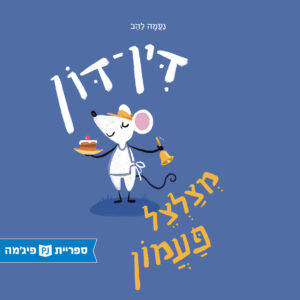 The Dinner Bell
The Dinner Bell 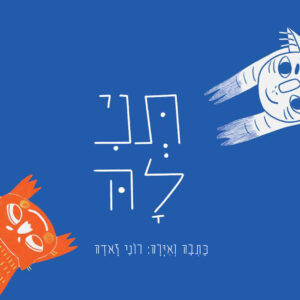 Let-Her
Let-Her 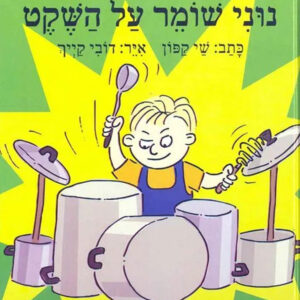 Nuni is Keeping Quiet
Nuni is Keeping Quiet 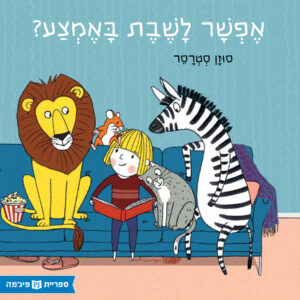 Can I Sit in the Middle?
Can I Sit in the Middle? 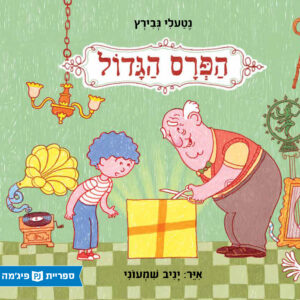 The Grand Prize
The Grand Prize 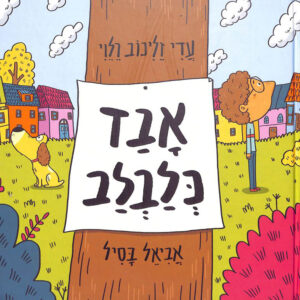 Lost Puppy
Lost Puppy  Things That Are Not
Things That Are Not 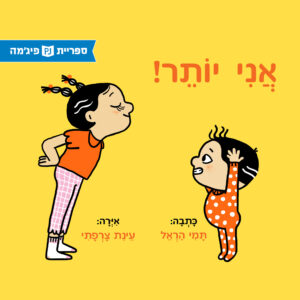 I’m More
I’m More 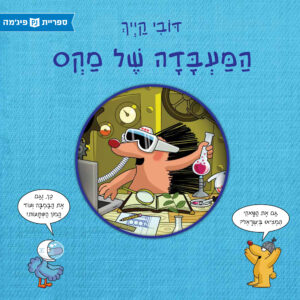 Max the Inventor
Max the Inventor 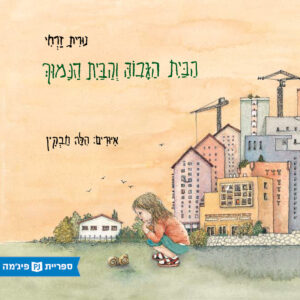 The Tall House and the Short House
The Tall House and the Short House 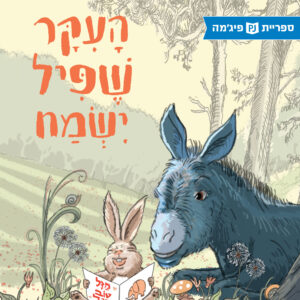 Making Elephant Happy
Making Elephant Happy 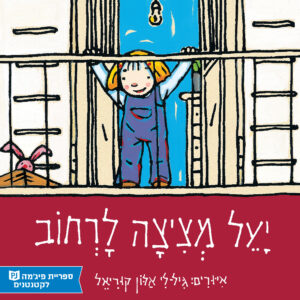 Who Is Passing By?
Who Is Passing By? 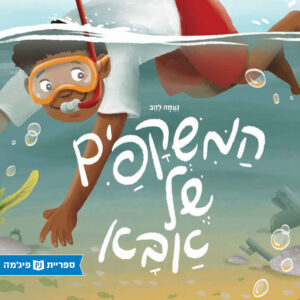 Aba’s Glasses
Aba’s Glasses 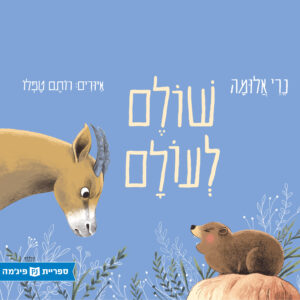 Peace to the World
Peace to the World 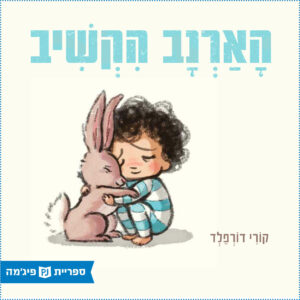 The Rabbit Listened
The Rabbit Listened 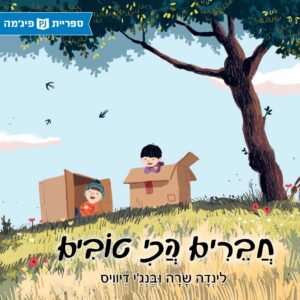 Best Friends
Best Friends 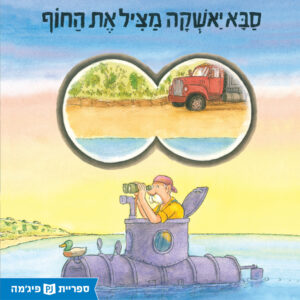 Saba Yashka Saves the Beach
Saba Yashka Saves the Beach 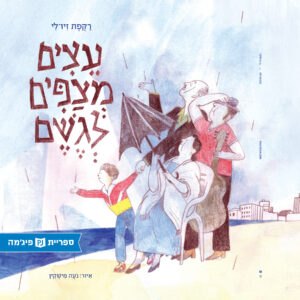 Trees Wait for Rain
Trees Wait for Rain 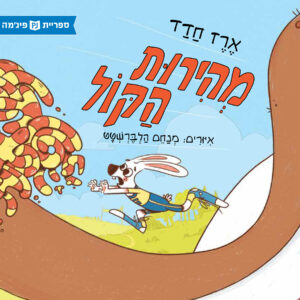 The Speed of Sound
The Speed of Sound 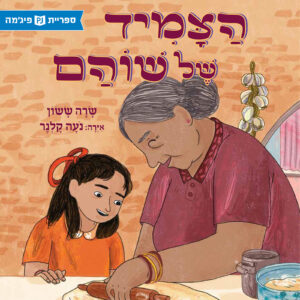 Shoham’s Bangle
Shoham’s Bangle 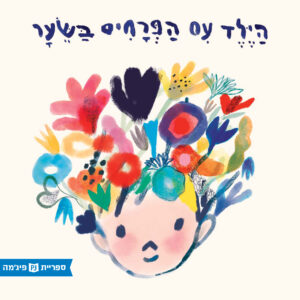 The Boy with Flowers in His Hair
The Boy with Flowers in His Hair 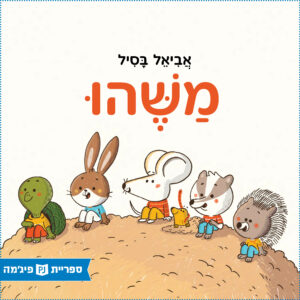 Something
Something 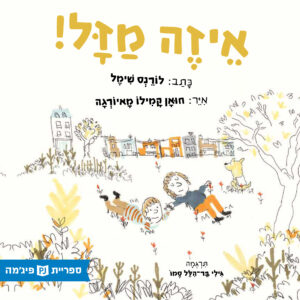 How Lucky I Am
How Lucky I Am 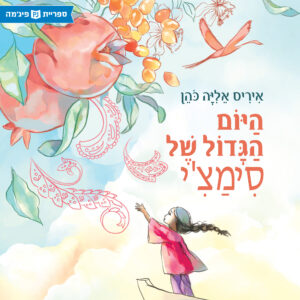 Simachi’s Big Day
Simachi’s Big Day 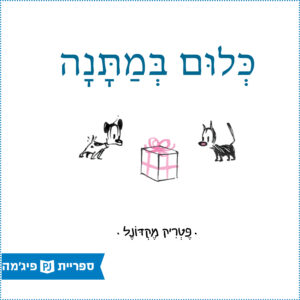 The Gift of Nothing
The Gift of Nothing 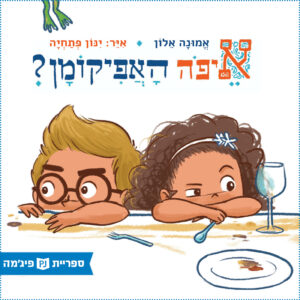 Where is the Afikomen?
Where is the Afikomen? 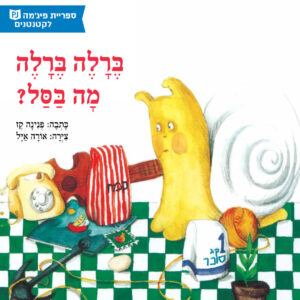 Berale Berale What’s in the Basket?
Berale Berale What’s in the Basket? 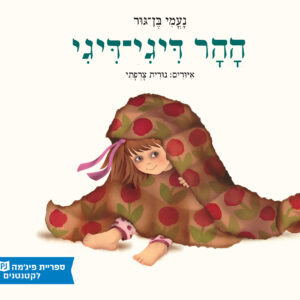 The Hill Tickle-Tickle
The Hill Tickle-Tickle 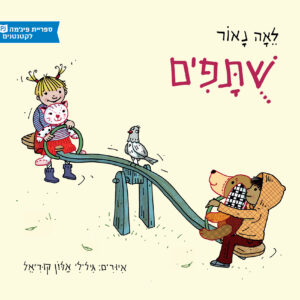 Partners
Partners 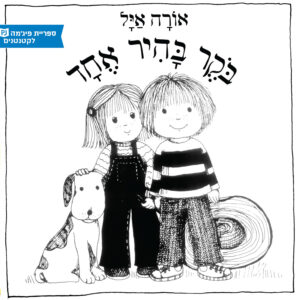 One Bright Morning
One Bright Morning 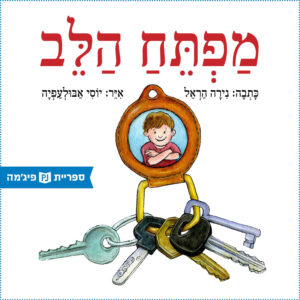 The Key to My Heart
The Key to My Heart 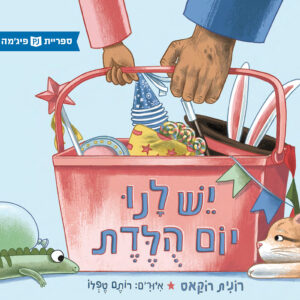 It’s Our Birthday
It’s Our Birthday 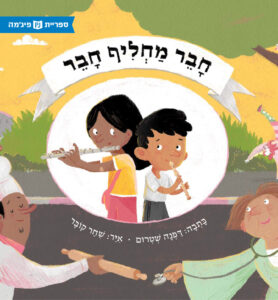 One Friend Takes Over for Another
One Friend Takes Over for Another 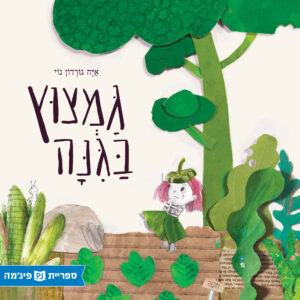 Morchella in the Garden
Morchella in the Garden 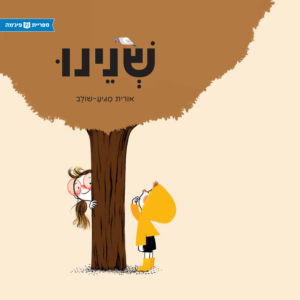 The Two of Us
The Two of Us 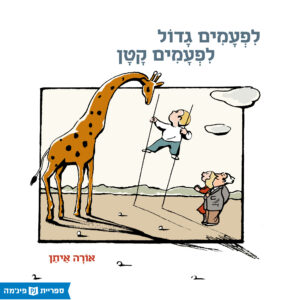 BIG OR SMALL
BIG OR SMALL 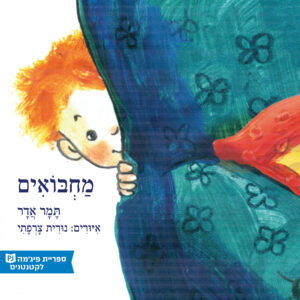 Hide & Seek
Hide & Seek 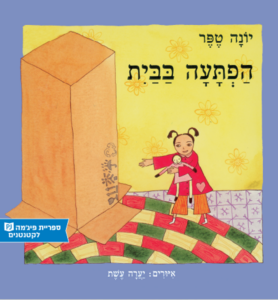 Surprise at Home
Surprise at Home 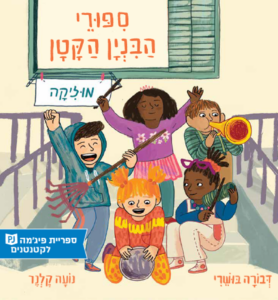 Music
Music 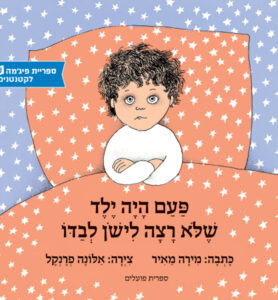 The Boy Who Wouldn’t Sleep Alone
The Boy Who Wouldn’t Sleep Alone 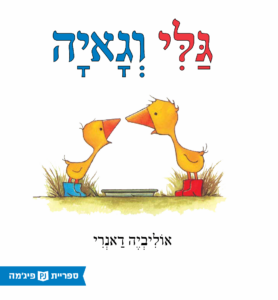 Gali & Gaya (Originally: Gossie & Gertie)
Gali & Gaya (Originally: Gossie & Gertie) 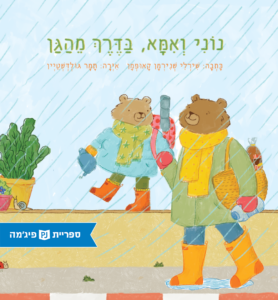 Noni and his Mom Walk Home from Kindergarten
Noni and his Mom Walk Home from Kindergarten 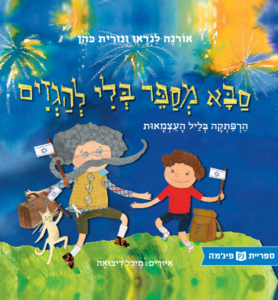 Grandpa Tells an Unexaggerated Story
Grandpa Tells an Unexaggerated Story 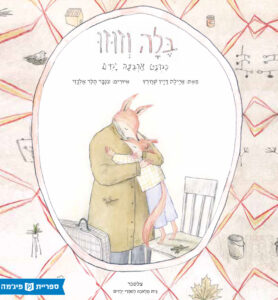 Bella and Zouzou
Bella and Zouzou 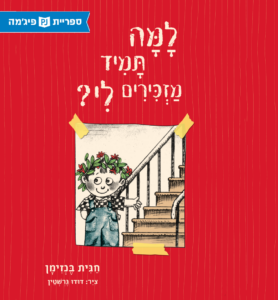 Why Do They Always Remind Me?
Why Do They Always Remind Me? 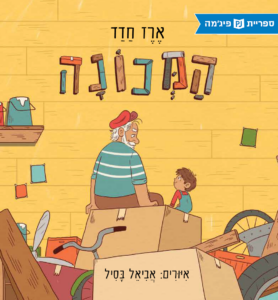 The Machine
The Machine 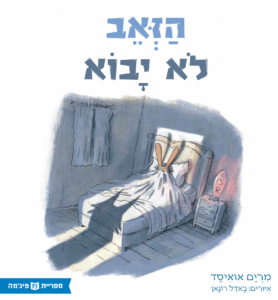 The Wolf Will not Come
The Wolf Will not Come 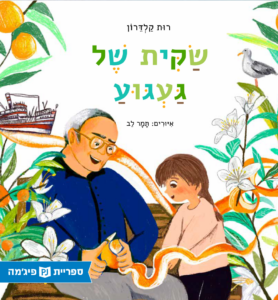 A Bag of Longing
A Bag of Longing 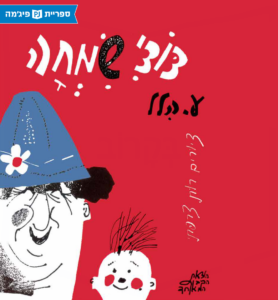 My Uncle Simha
My Uncle Simha 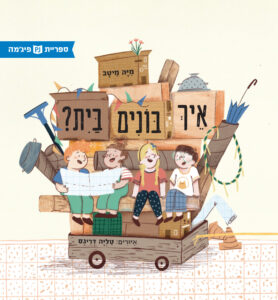 How to Build a House
How to Build a House 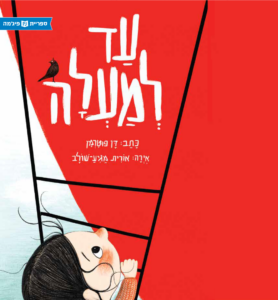 Up and Over
Up and Over 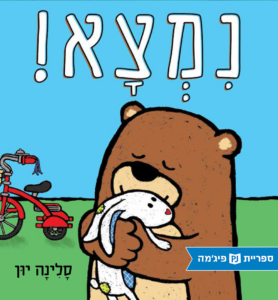 Found
Found 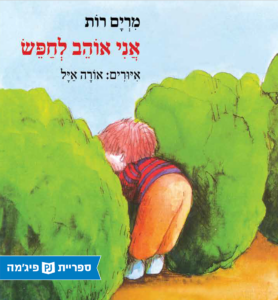 I Like to Look For…
I Like to Look For… 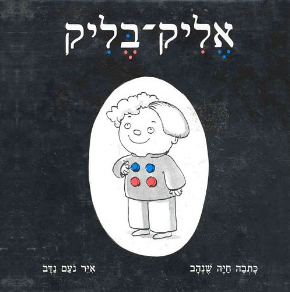 Elik Belik
Elik Belik 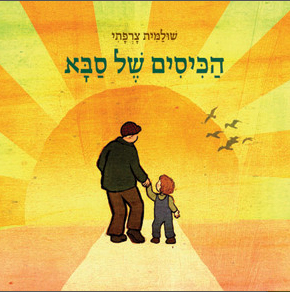 Grandpa’s Pockets – For Families
Grandpa’s Pockets – For Families 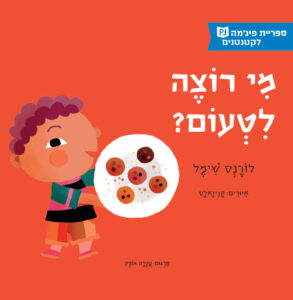 Who wants to taste?
Who wants to taste? 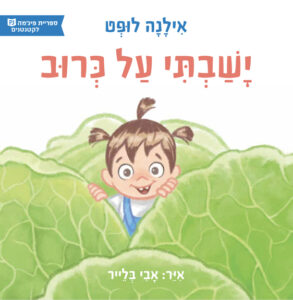 I Sat On a Cabbage
I Sat On a Cabbage 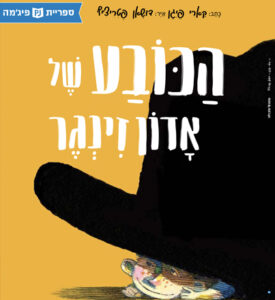 Mr. Zinger’s Hat
Mr. Zinger’s Hat 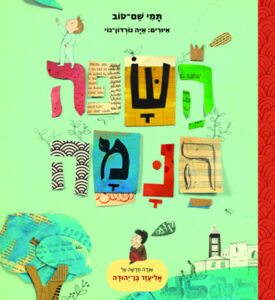 The Sleeping Language
The Sleeping Language 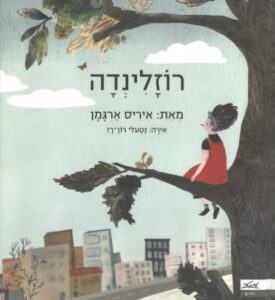 Rosalinda
Rosalinda 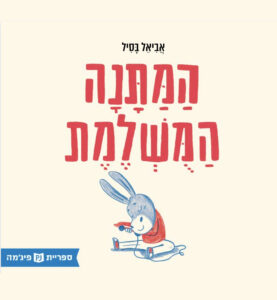 The Perfect Gift
The Perfect Gift 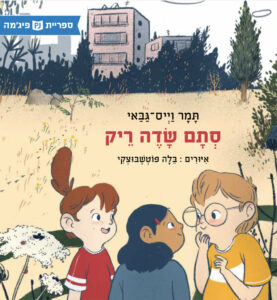 Just an Empty Field
Just an Empty Field 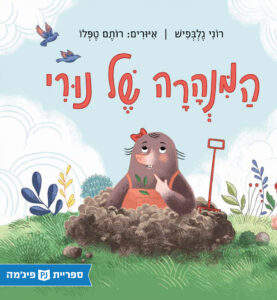 Nuri’s Tunnel
Nuri’s Tunnel 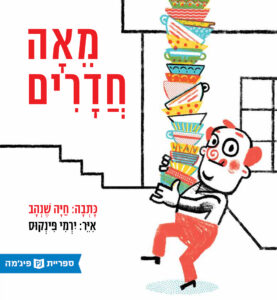 One Hundred Rooms
One Hundred Rooms 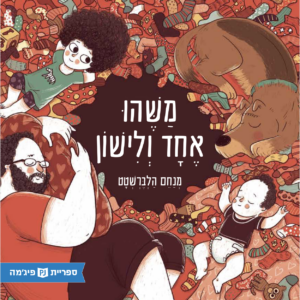 One Last Thing before Bed
One Last Thing before Bed 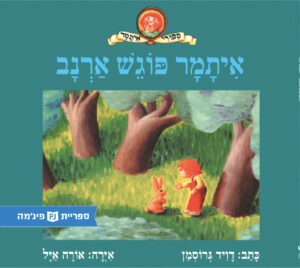 Itamar Meets a Rabbit
Itamar Meets a Rabbit 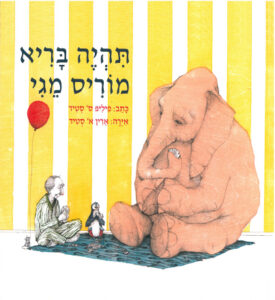 A Sick Day for Amos McGee
A Sick Day for Amos McGee 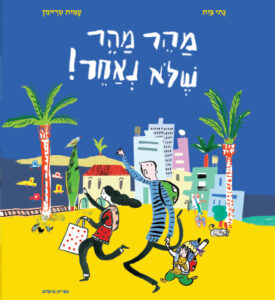 Hurry Up!
Hurry Up! 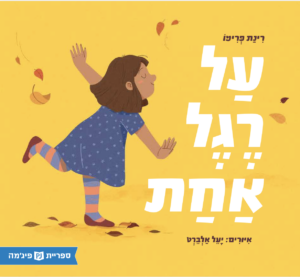 On One Foot
On One Foot 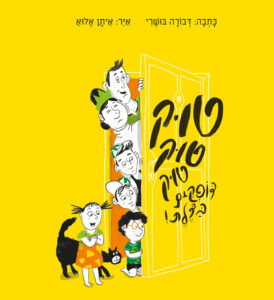 Knock Knock Knock – Knocking on the Door!
Knock Knock Knock – Knocking on the Door! 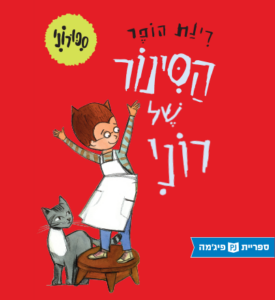 Ronnie’s Stories: Ronnie’s Apron
Ronnie’s Stories: Ronnie’s Apron 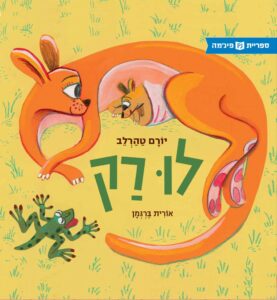 If Only
If Only 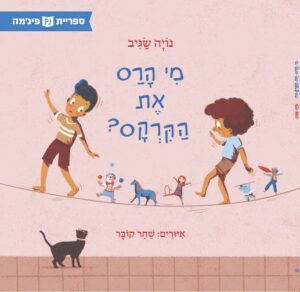 Who Destroyed the Circus?
Who Destroyed the Circus? 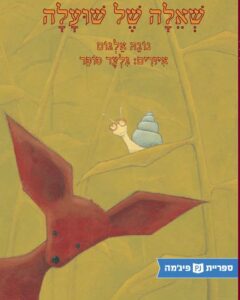 Why Not?
Why Not? 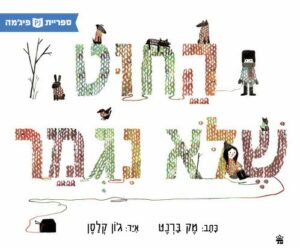 Extra Yarn
Extra Yarn 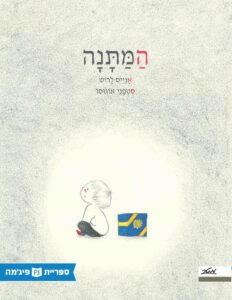 The Gift
The Gift 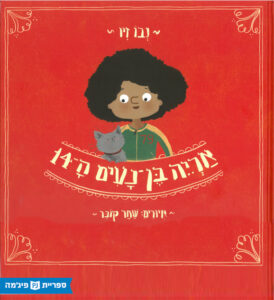 Arie Ben Naim XXIV
Arie Ben Naim XXIV 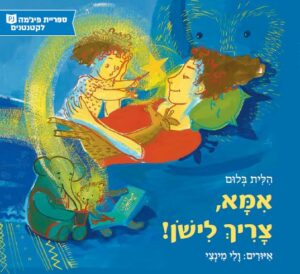 Mommy Time to Sleep
Mommy Time to Sleep 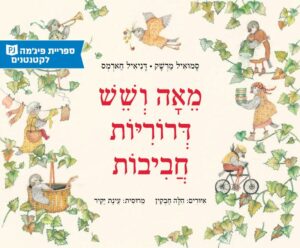 One Hundred and Six Sweet Sparrows
One Hundred and Six Sweet Sparrows 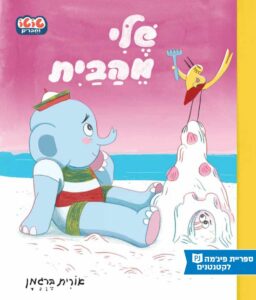 Toto & Friends: Mine!
Toto & Friends: Mine! 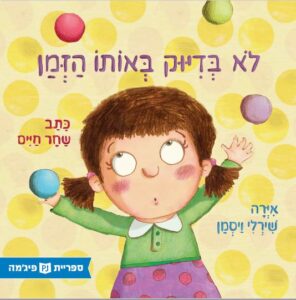 Not at the Exact Same Time
Not at the Exact Same Time 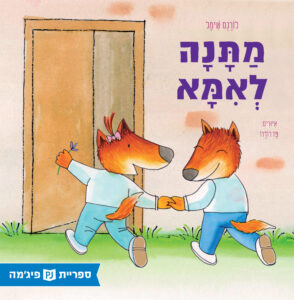 A Gift for Mama
A Gift for Mama 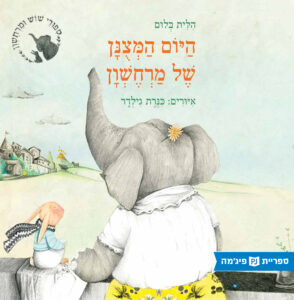 Jo and Pepper and the Big Sleep
Jo and Pepper and the Big Sleep 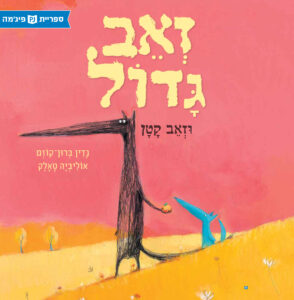 Big Wolf and Little Wolf
Big Wolf and Little Wolf 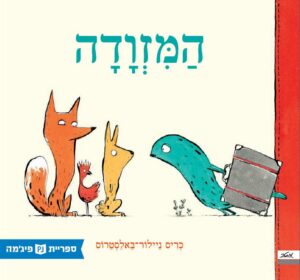 The Suitcase
The Suitcase 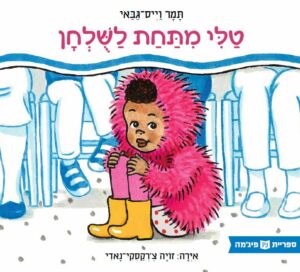 Tali is under the Table
Tali is under the Table 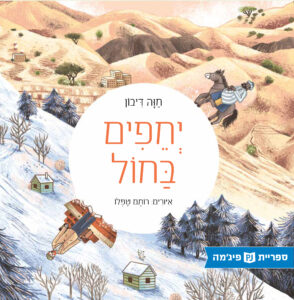 Barefoot in the Sand
Barefoot in the Sand 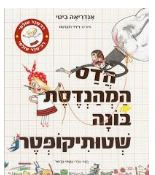 Rosie Revere, Engineer
Rosie Revere, Engineer 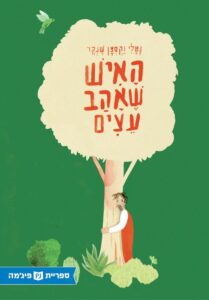 The Man who Loved Trees
The Man who Loved Trees 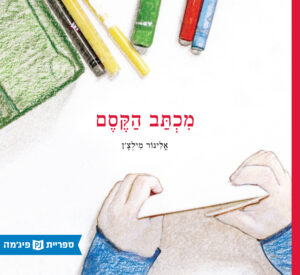 The Magical Letter
The Magical Letter 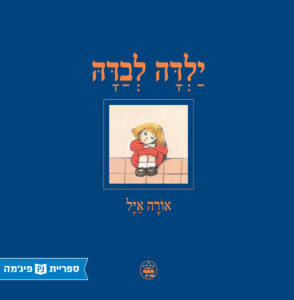 A Girl all by Herself
A Girl all by Herself 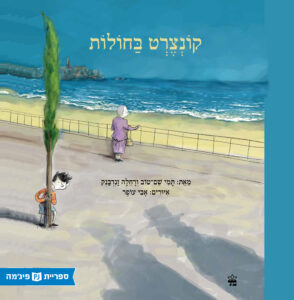 A Concert in the Sand
A Concert in the Sand 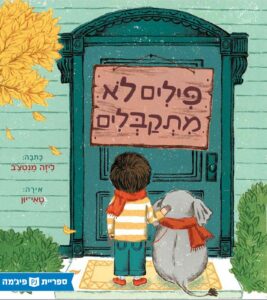 Strictly No Elephants
Strictly No Elephants 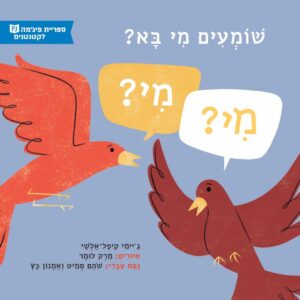 Can You Hear a Coo Coo?
Can You Hear a Coo Coo? 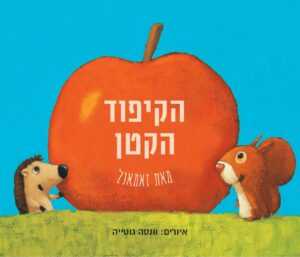 Little Hedgehog
Little Hedgehog  A Rabbit and a Cat are going on a Trip
A Rabbit and a Cat are going on a Trip 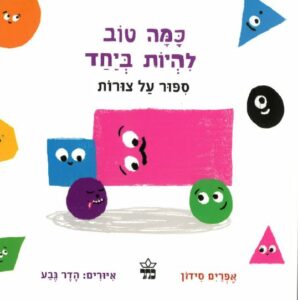 Friendly Shapes
Friendly Shapes 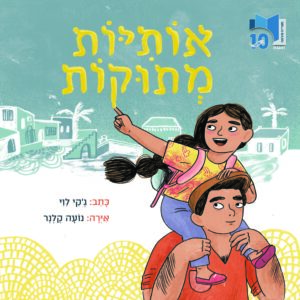 Sweet Aleph-Bet
Sweet Aleph-Bet 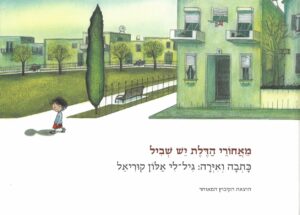 Behind the Door
Behind the Door 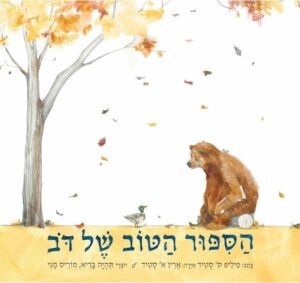 Bear has a Story to Tell
Bear has a Story to Tell 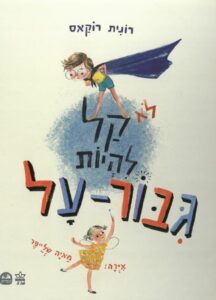 It’s not Easy to be a Super Hero
It’s not Easy to be a Super Hero  The Boots that saved Jerusalem
The Boots that saved Jerusalem 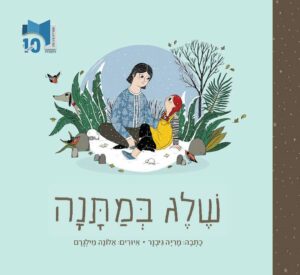 A Gift of Snow
A Gift of Snow 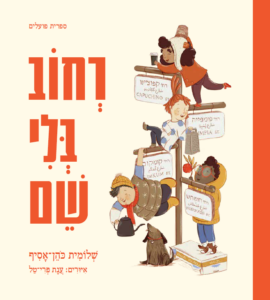 A Street with no Name
A Street with no Name 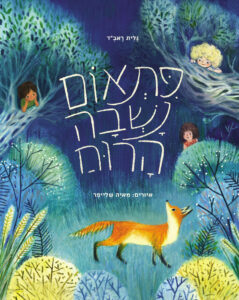 At the Heart of the Orchard
At the Heart of the Orchard 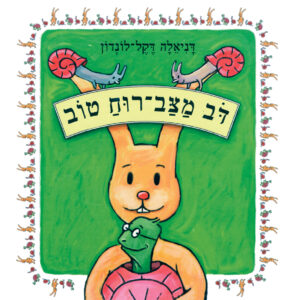 Good Mood Bear
Good Mood Bear 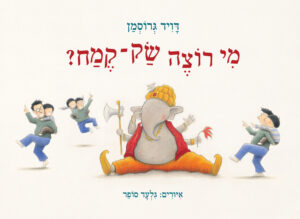 Who Wants a Piggyback?
Who Wants a Piggyback? 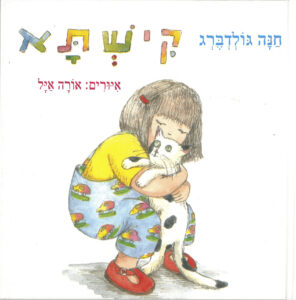 Kishta
Kishta 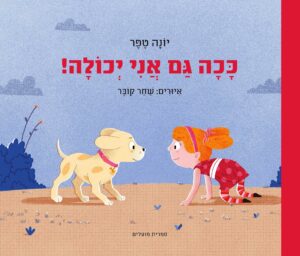 I Can do it too!
I Can do it too! 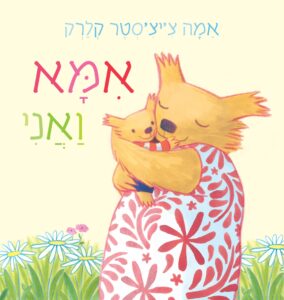 Mummy and Me
Mummy and Me 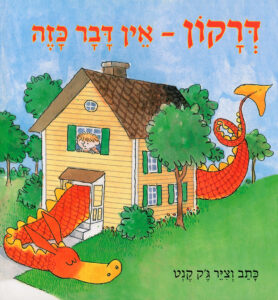 There’s No Such Thing as a Dragon
There’s No Such Thing as a Dragon 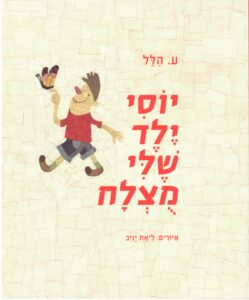 YOSSI, MY WONDERFUL CHILD
YOSSI, MY WONDERFUL CHILD 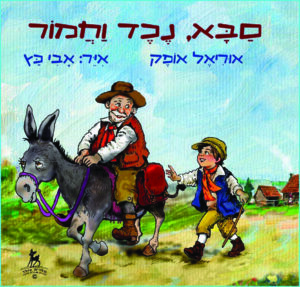 Grandfather, Grandson and a Donkey
Grandfather, Grandson and a Donkey 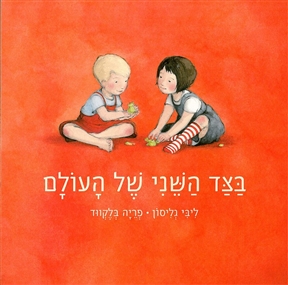 Amy and Louis Hebrew title: “Half A World Away”
Amy and Louis Hebrew title: “Half A World Away” 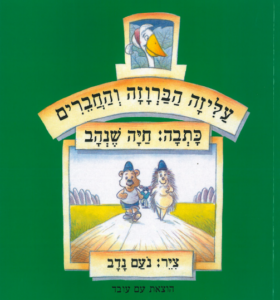 Aliza the Duck and Friends
Aliza the Duck and Friends 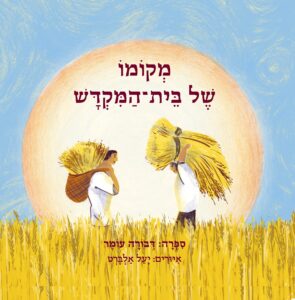 The Site of the Temple
The Site of the Temple 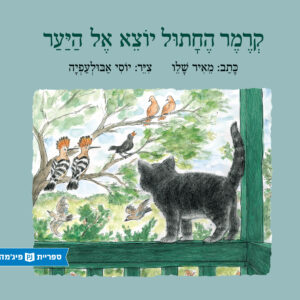 Kramer the Cat Goes into the Forest
Kramer the Cat Goes into the Forest 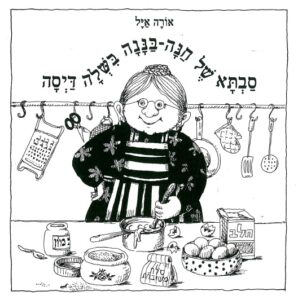 Hannah Banana’s Granny Cooked Porridge
Hannah Banana’s Granny Cooked Porridge 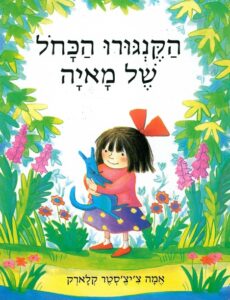 Maya’s Blue Kangaroo
Maya’s Blue Kangaroo 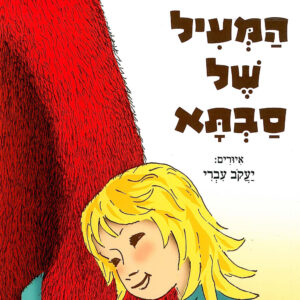 Grandmother’s Coat
Grandmother’s Coat 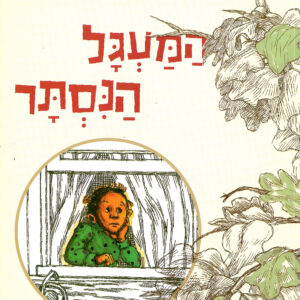 A Circle of Friends
A Circle of Friends 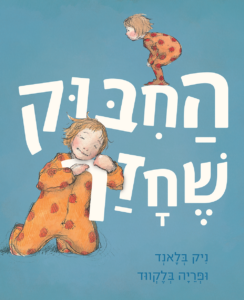 The Runaway Hug
The Runaway Hug 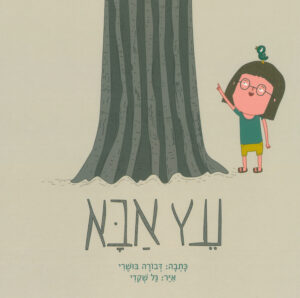 The Daddy Tree
The Daddy Tree 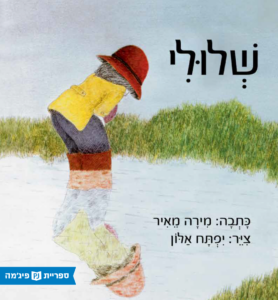 Sheluli
Sheluli 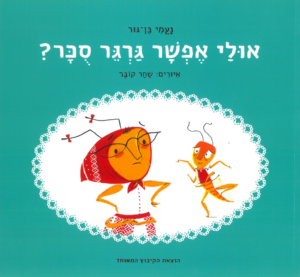 Can you Spare a Spot of Sugar
Can you Spare a Spot of Sugar 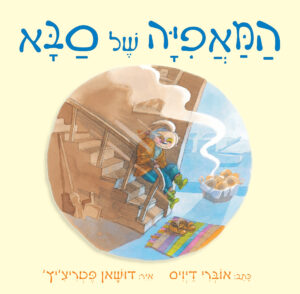 Bagels From Benny
Bagels From Benny 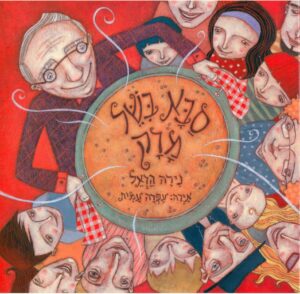 Grandpa Made Soup
Grandpa Made Soup 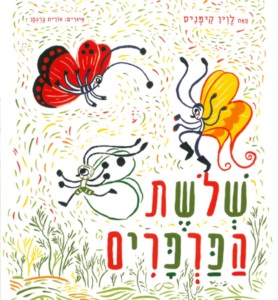 The Three Butterflies
The Three Butterflies 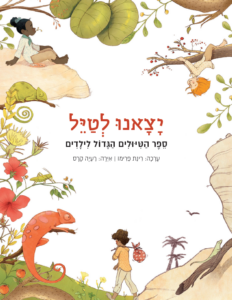 The BigBook of Trips
The BigBook of Trips 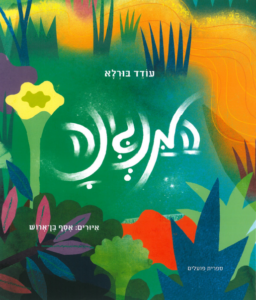 The Melody
The Melody 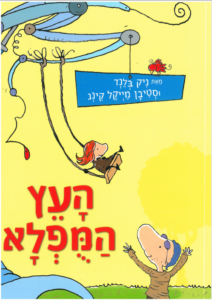 The Magnificent Tree
The Magnificent Tree 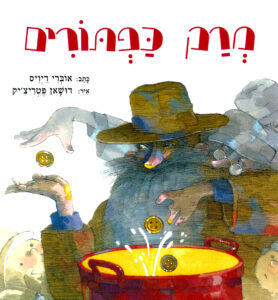 Bone Button Borscht
Bone Button Borscht 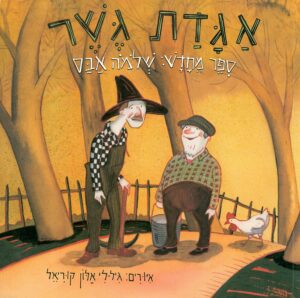 The Bridge Tale
The Bridge Tale 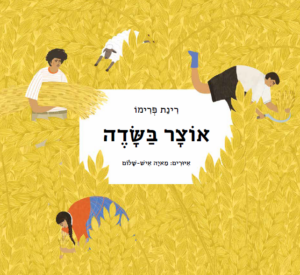 A Treasure in the Field
A Treasure in the Field 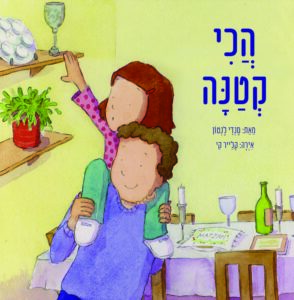 The Littlest Levine
The Littlest Levine 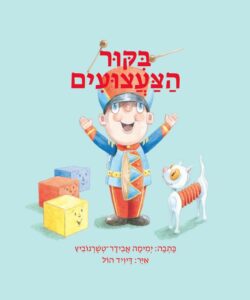 The Toys’ Visit
The Toys’ Visit 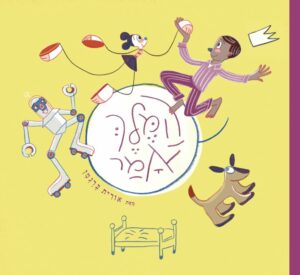 The King Says
The King Says 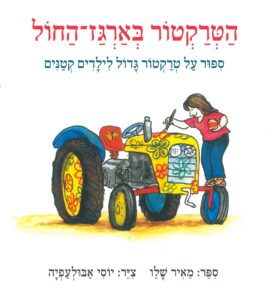 The Tractor in the Sandbox
The Tractor in the Sandbox 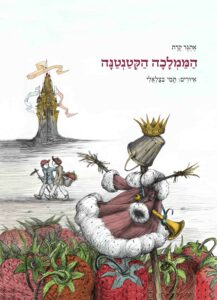 The Teeny-Tiny Kingdom
The Teeny-Tiny Kingdom 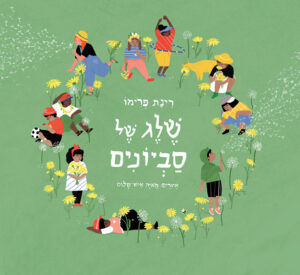 Snow of Dandelions
Snow of Dandelions 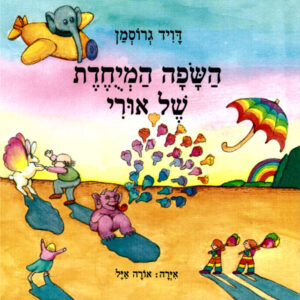 Ury’s Special Language
Ury’s Special Language 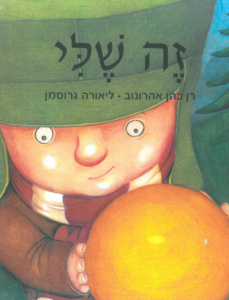 It’s Mine
It’s Mine 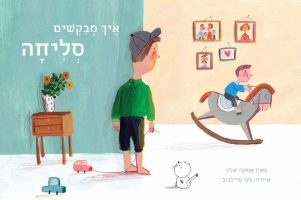 How do you say “I’m sorry”?
How do you say “I’m sorry”? 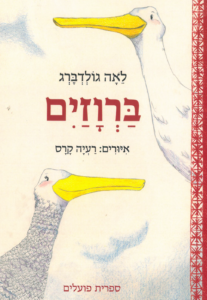 Two Ducks
Two Ducks  הַמְחָזָה
הַמְחָזָה




















